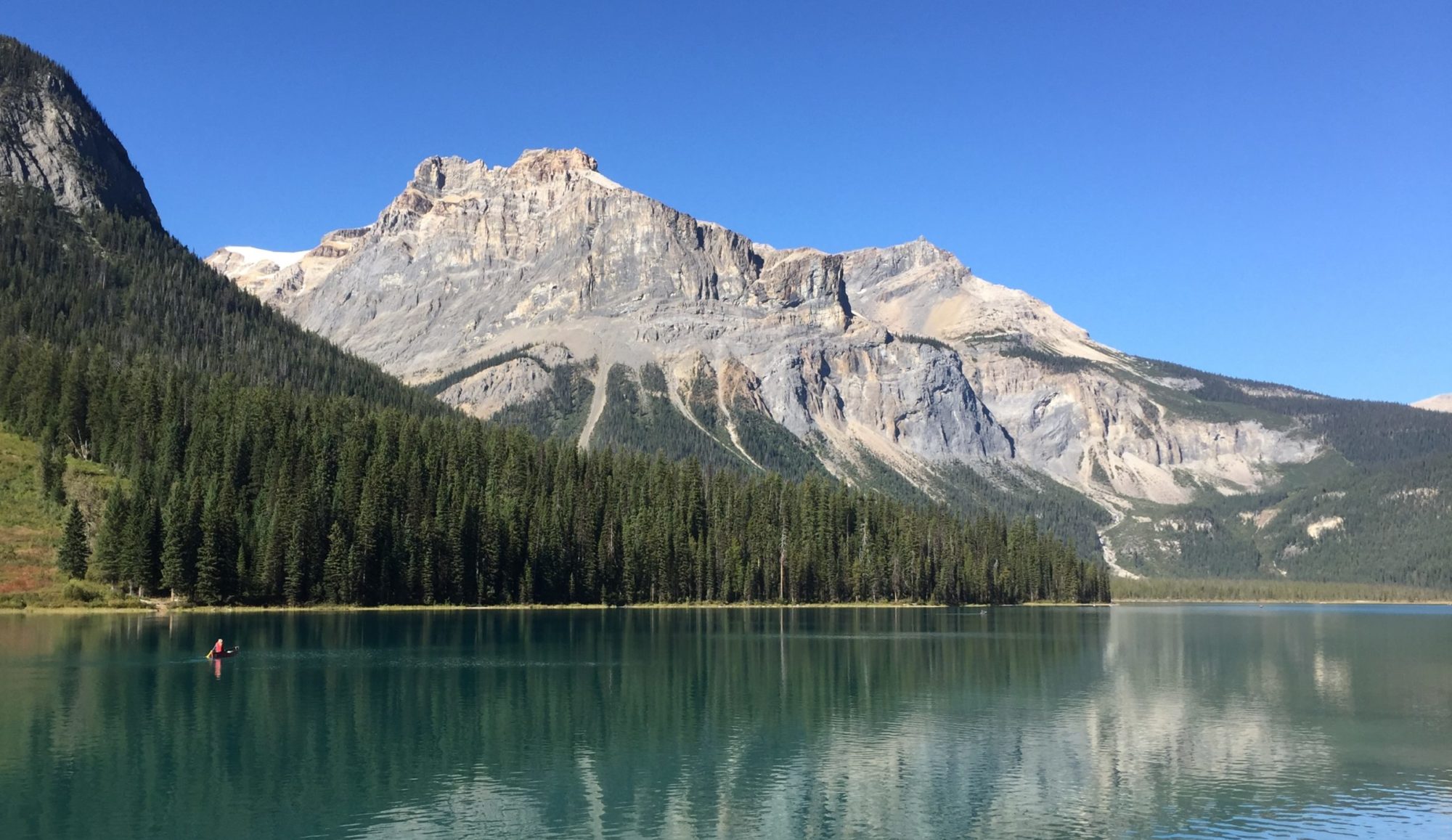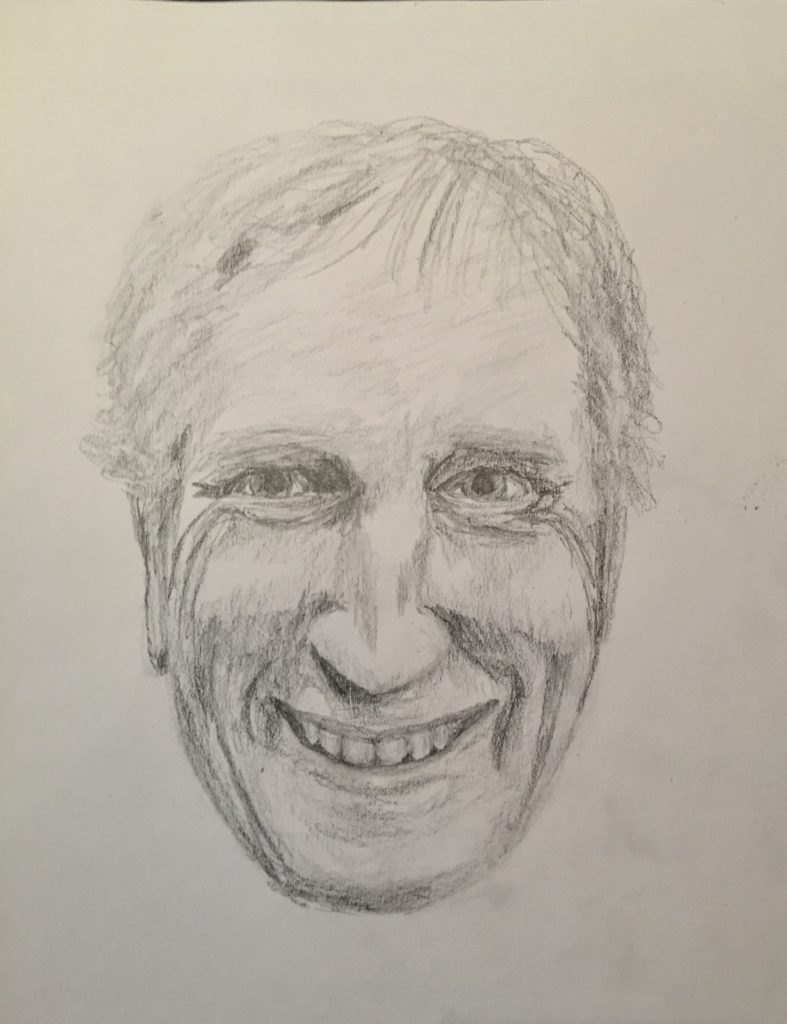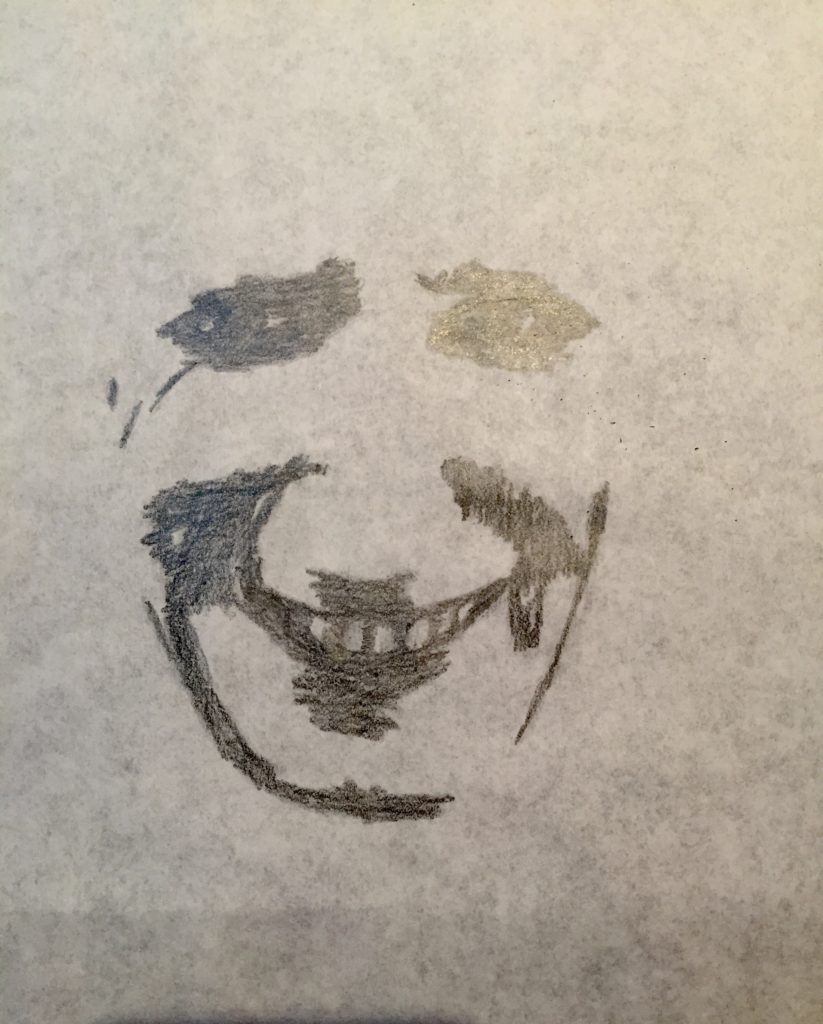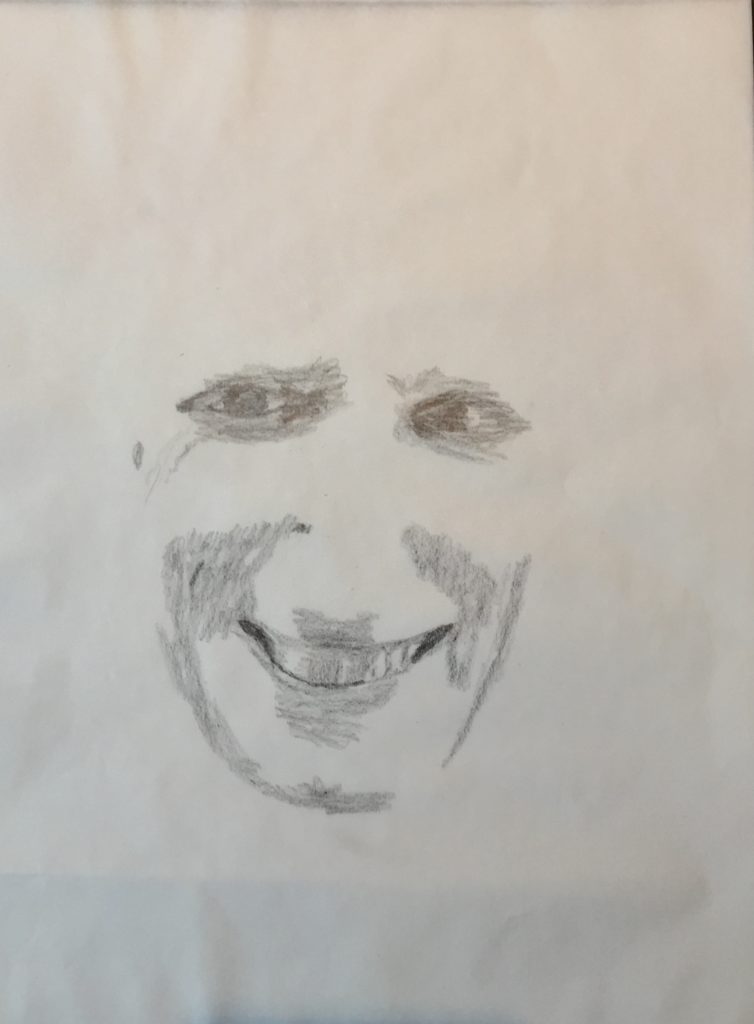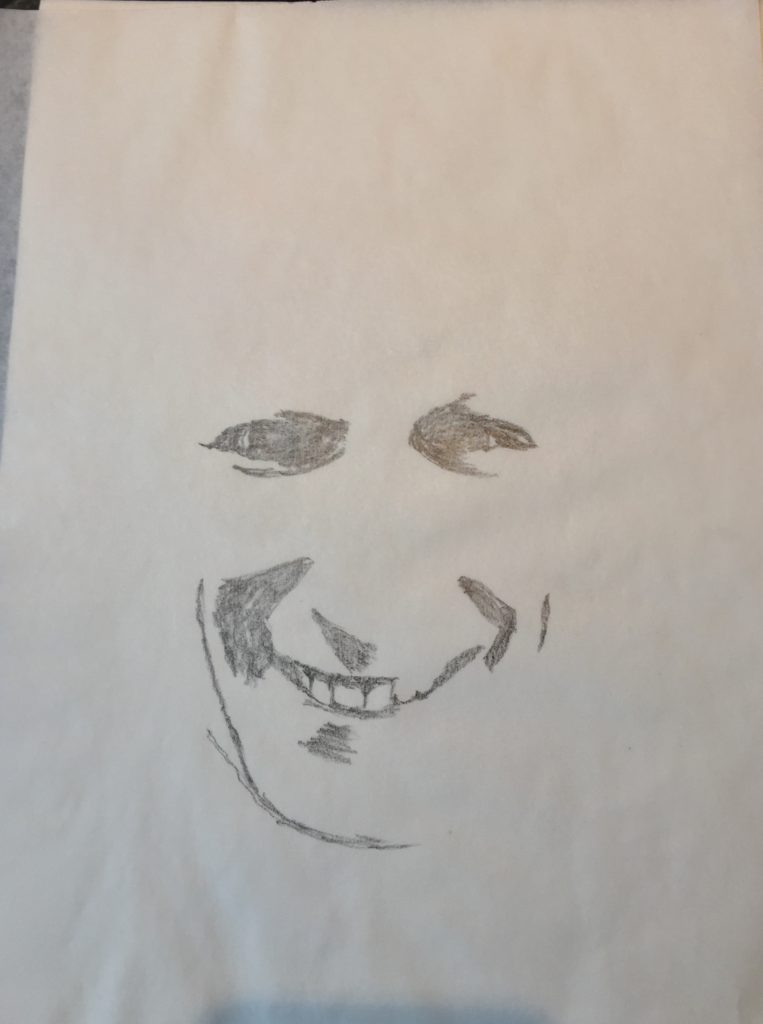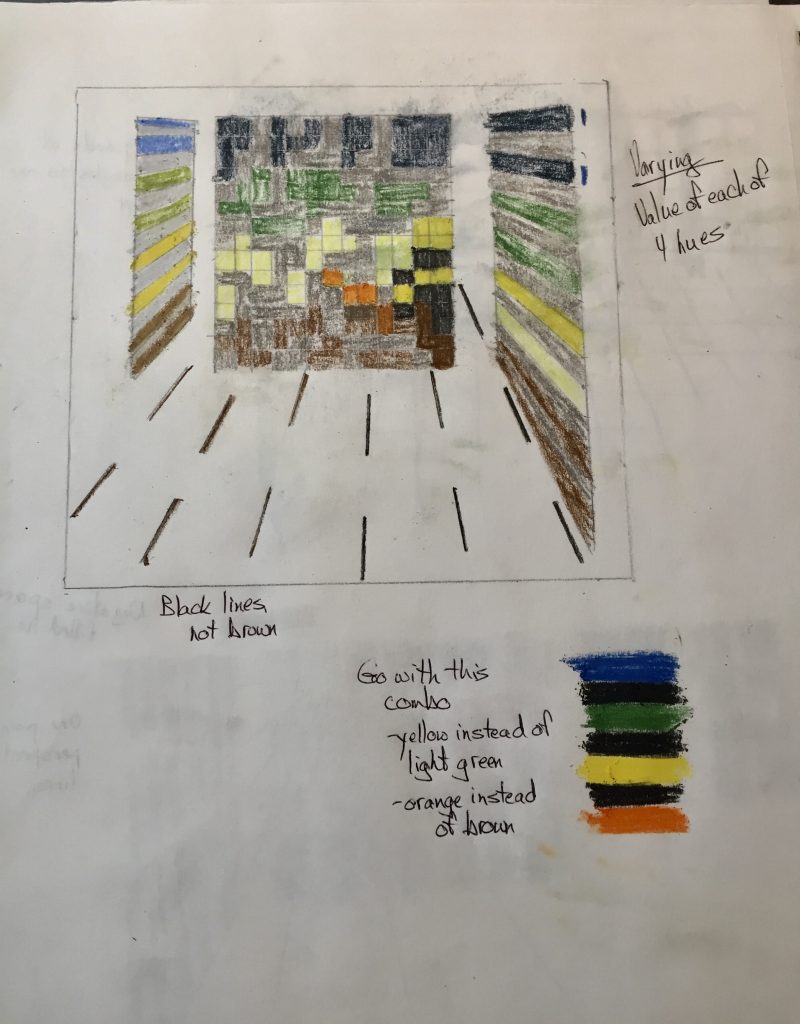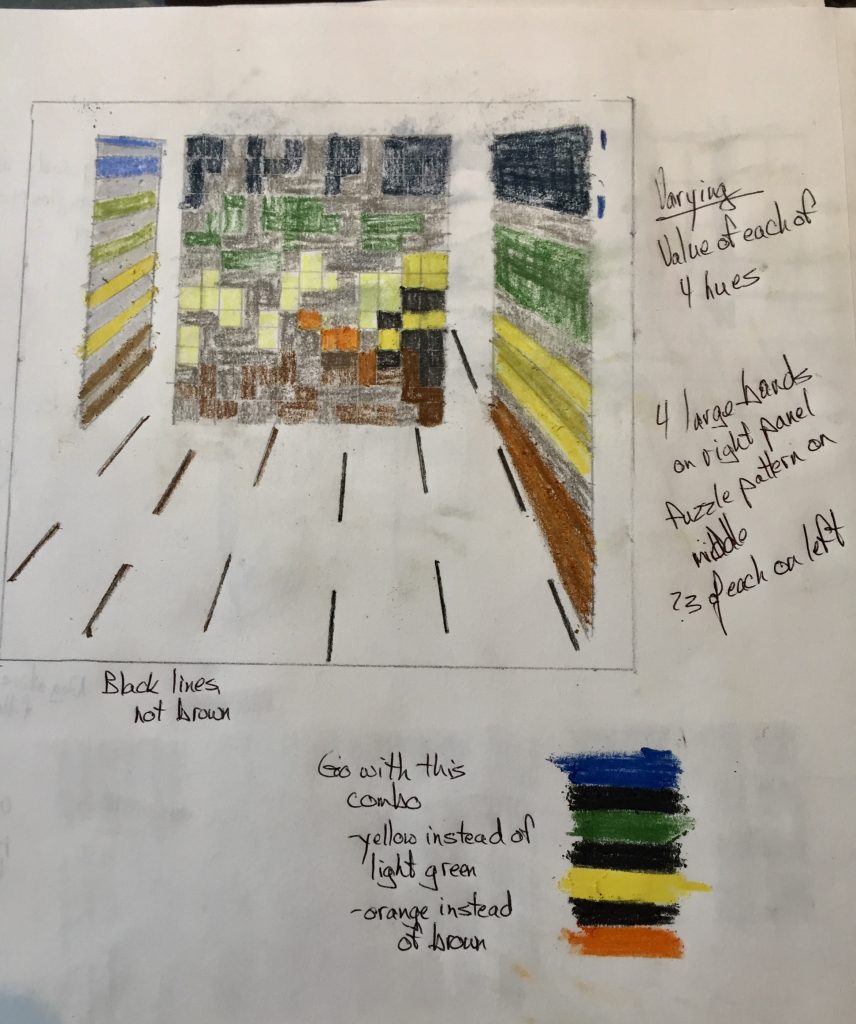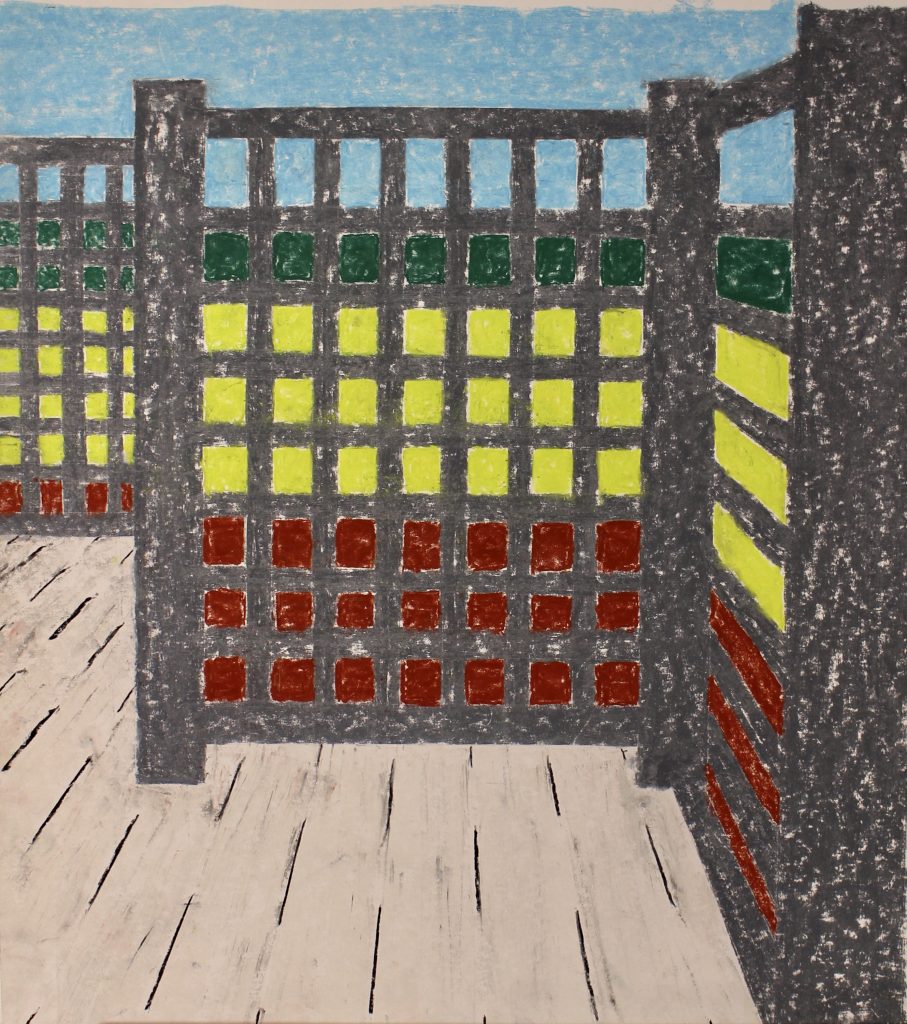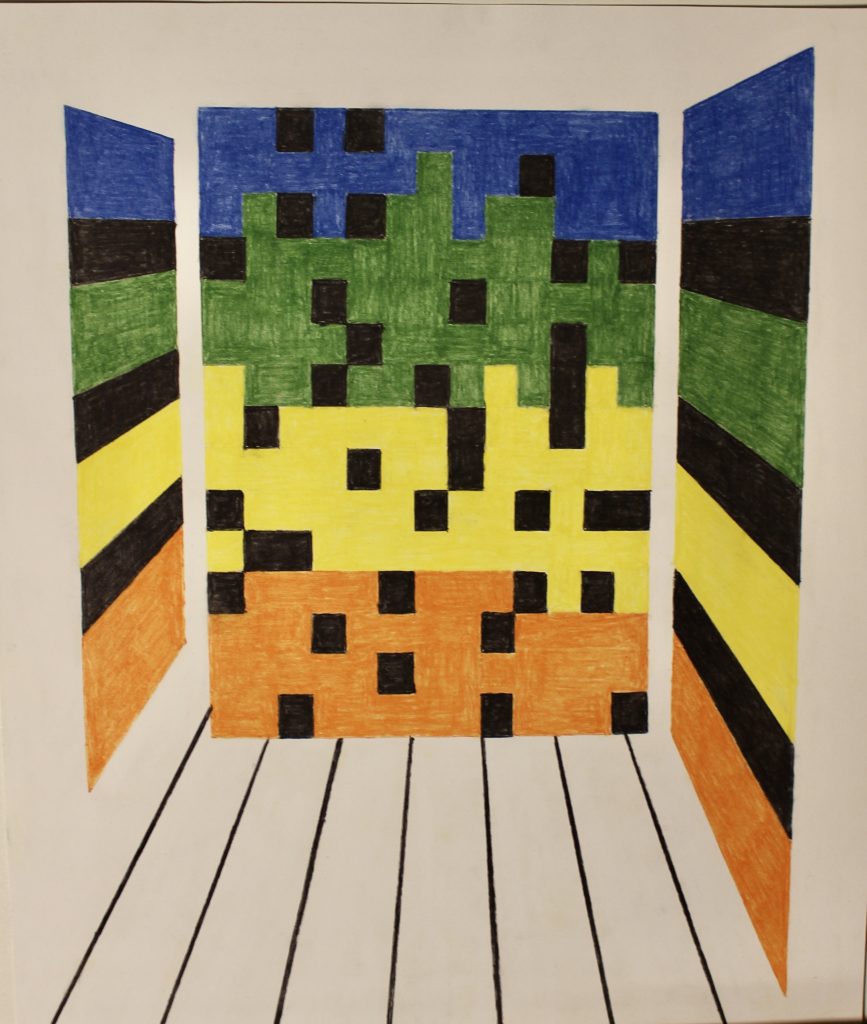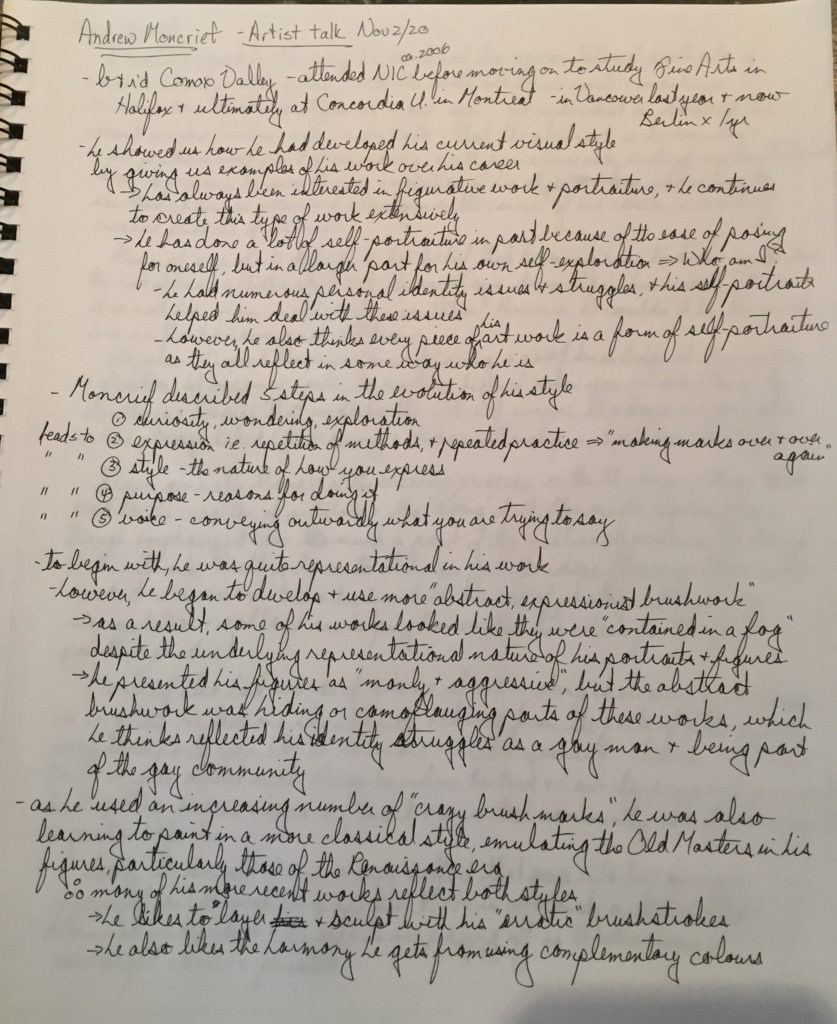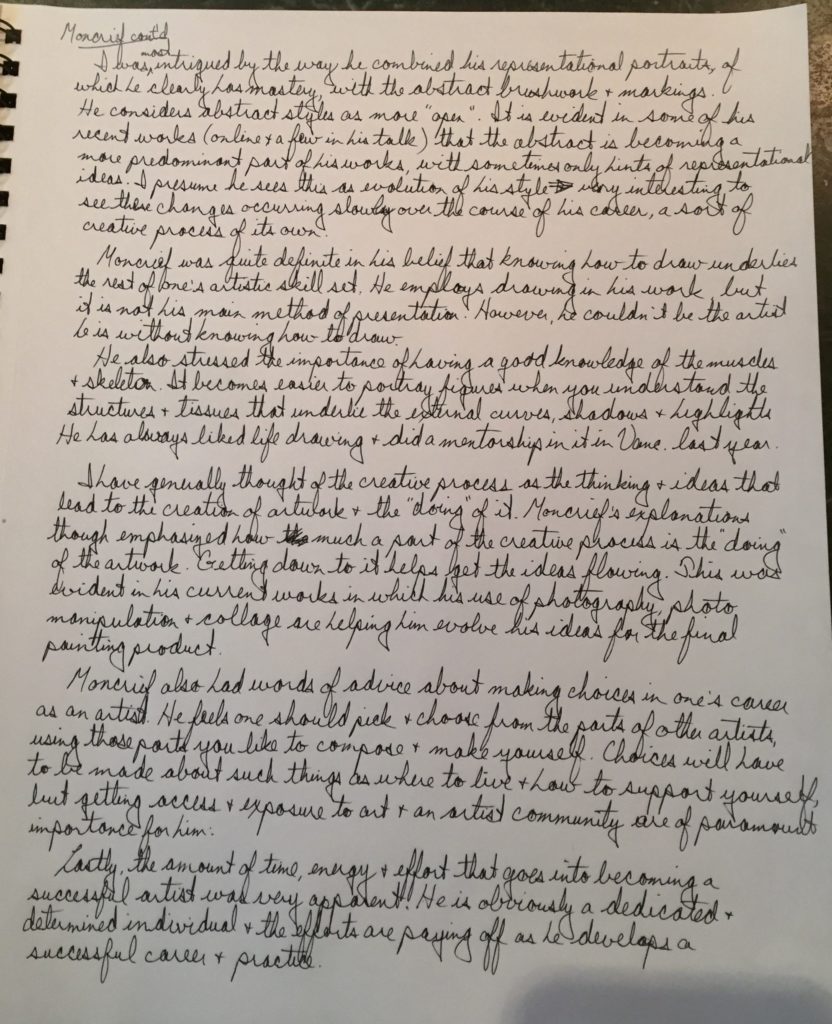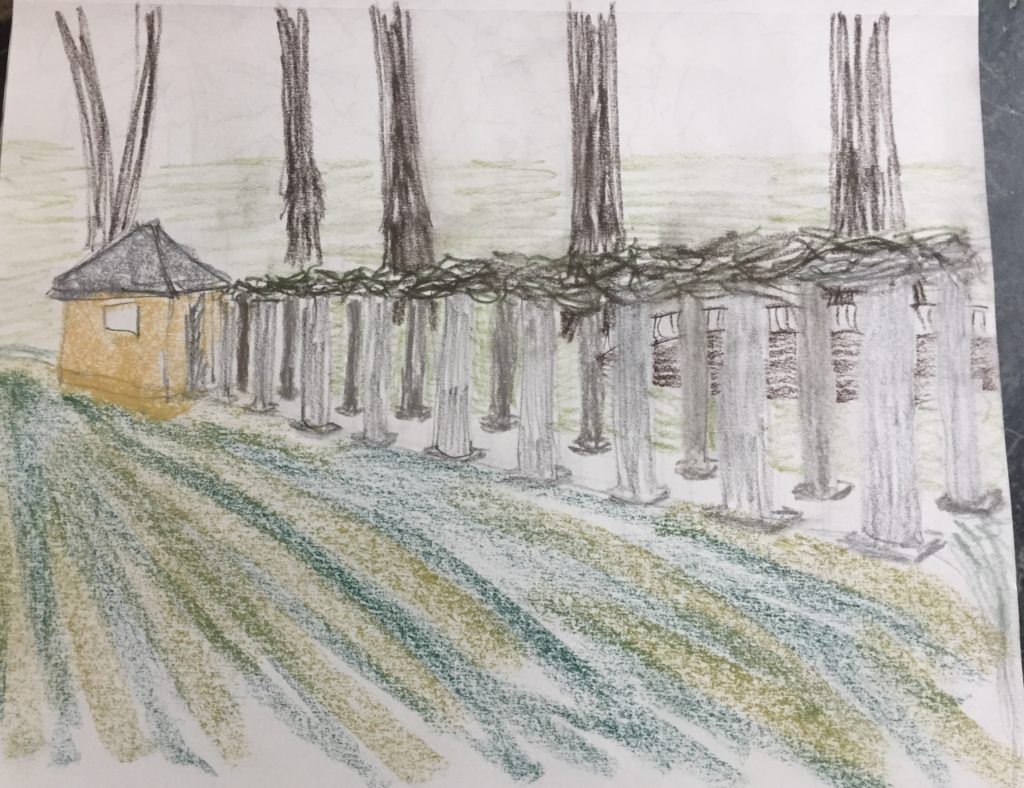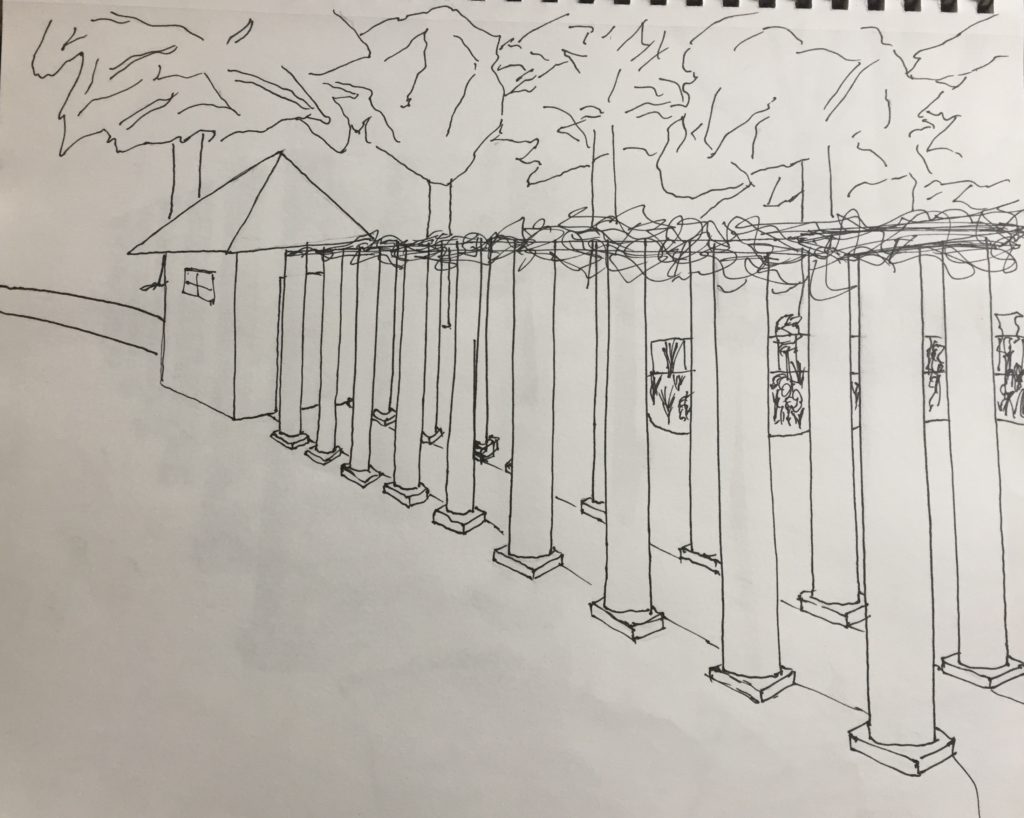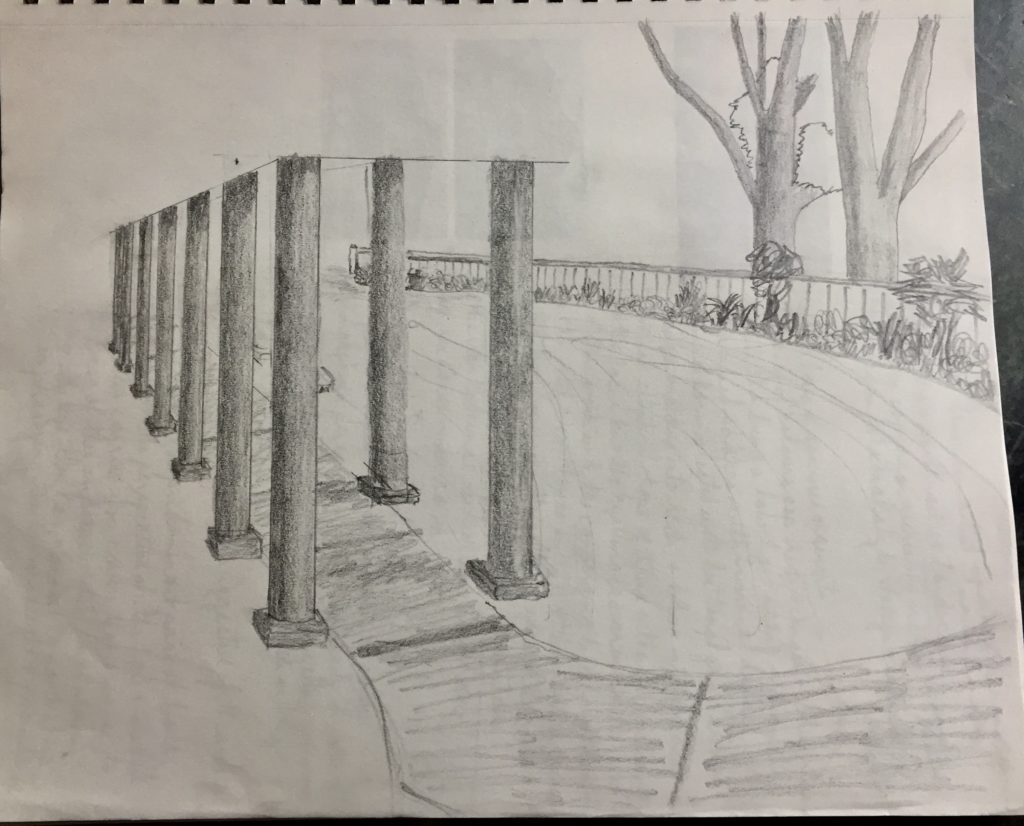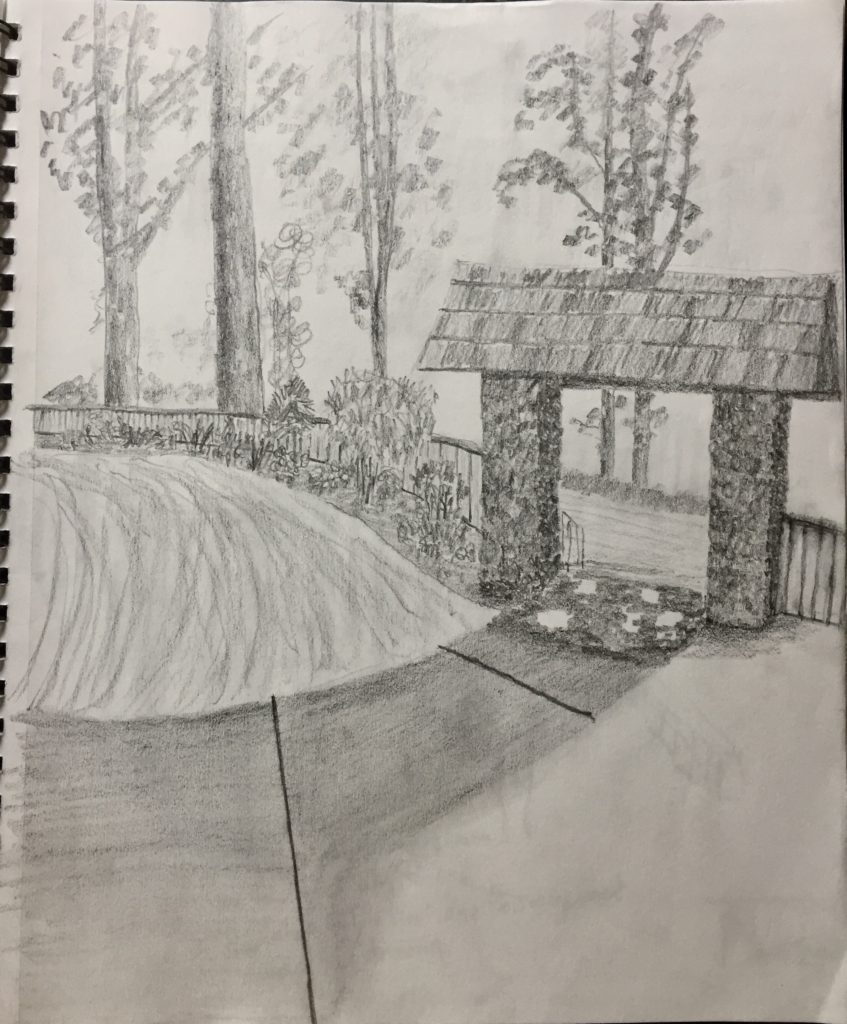FIN 217 Unit 3
FIN 217 Unit 2
FIN 217 Unit 1
FIN 211 Unit 3
FIN 211 Unit 2
FIN 211 Unit 1
FIN 210 Unit 3
Idea #1: Value changes and variations within a portrait
My plan here was to take a self-portrait and reproduce it with varying degrees of two or three value adjustments. I have always been amazed how artists convey a likeness of a representational portrait sometimes with such limited amounts of shadow/silhouette. I was hoping this would lead to some degree of abstraction, but it really didn’t end up doing that. Even with the limited amount of shadow in the last drawing, it is still recognizable as me. At least it is to me!
I suppose I could have fragmented these drawings and rearranged them, but that was not my intent in this exercise.
Idea #2: This was a felled and sawn tree that struck me as being full of all sorts of abstract shapes. It also had the advantage of two components to the wood, either the cut, round cross-sectional surfaces or the bark-covered, outer surfaces.
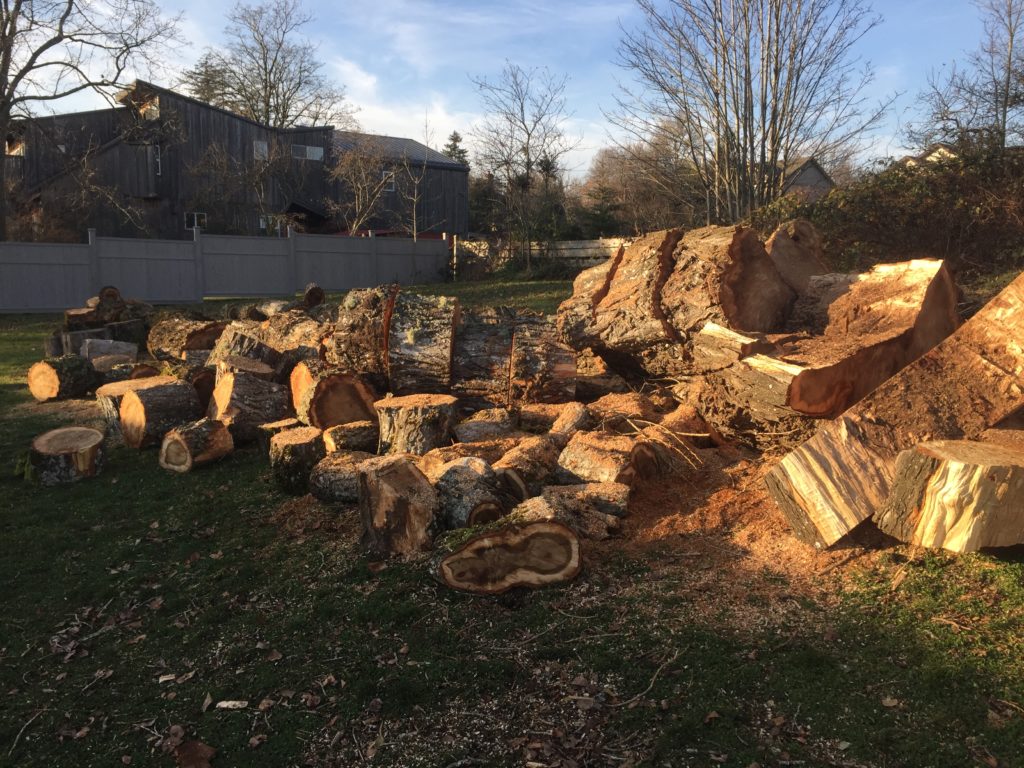
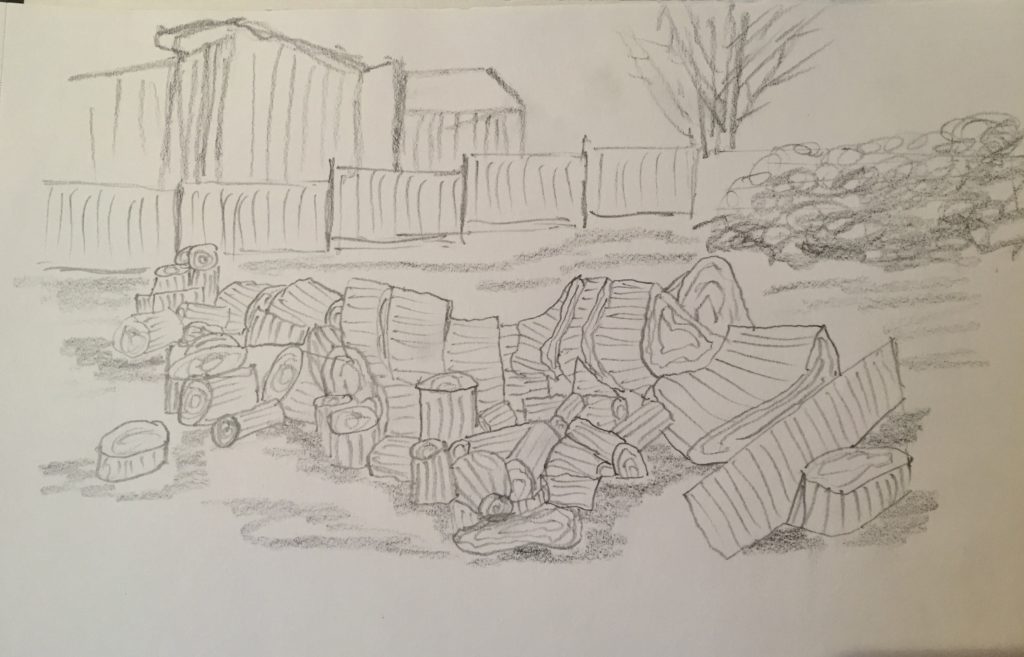
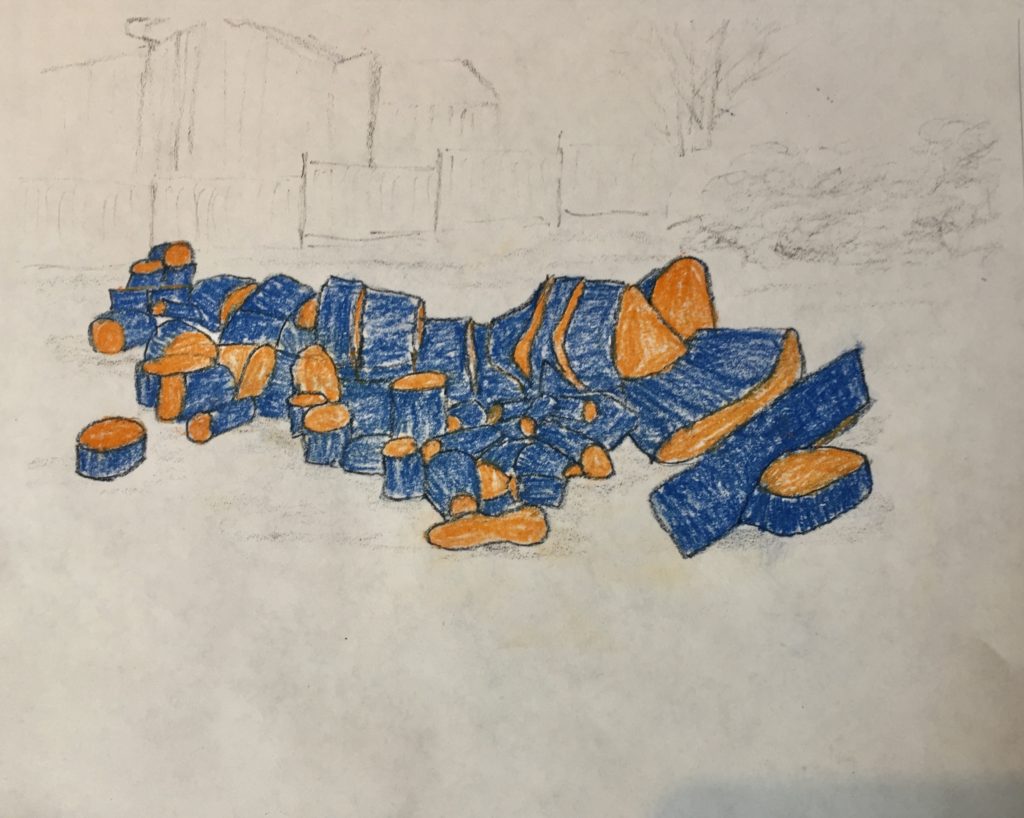
Drawn with cut surfaces in orange and bark surfaces in blue. 
Bark surfaces only. 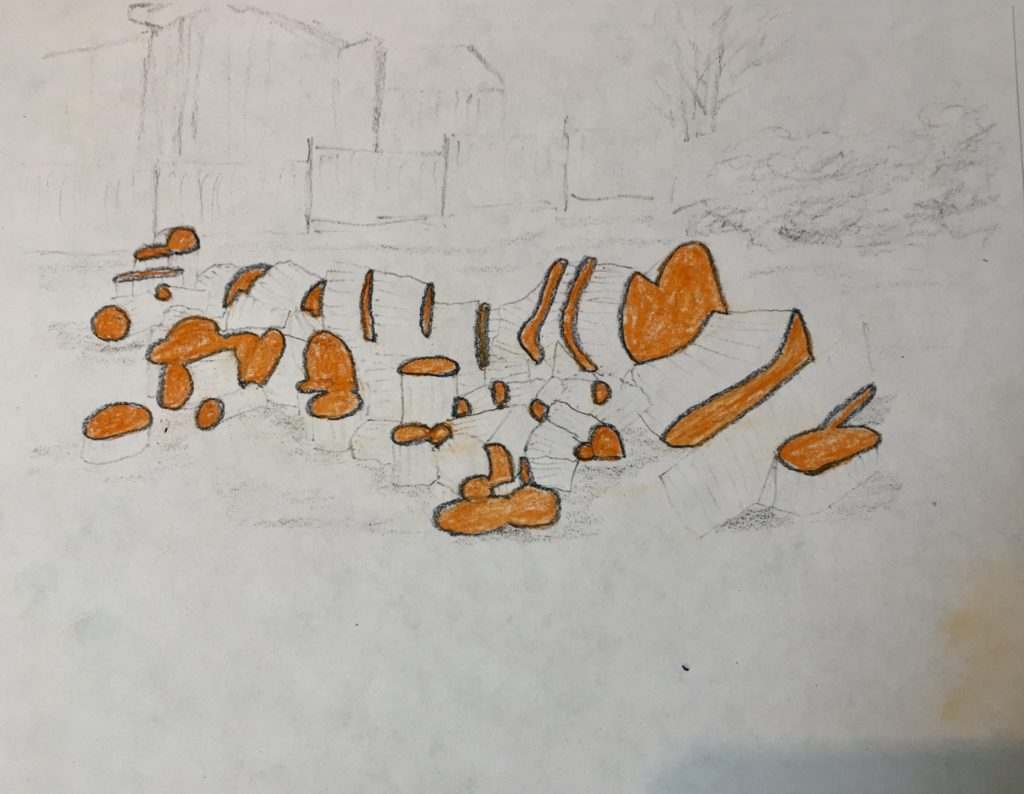
Cut surfaces only. 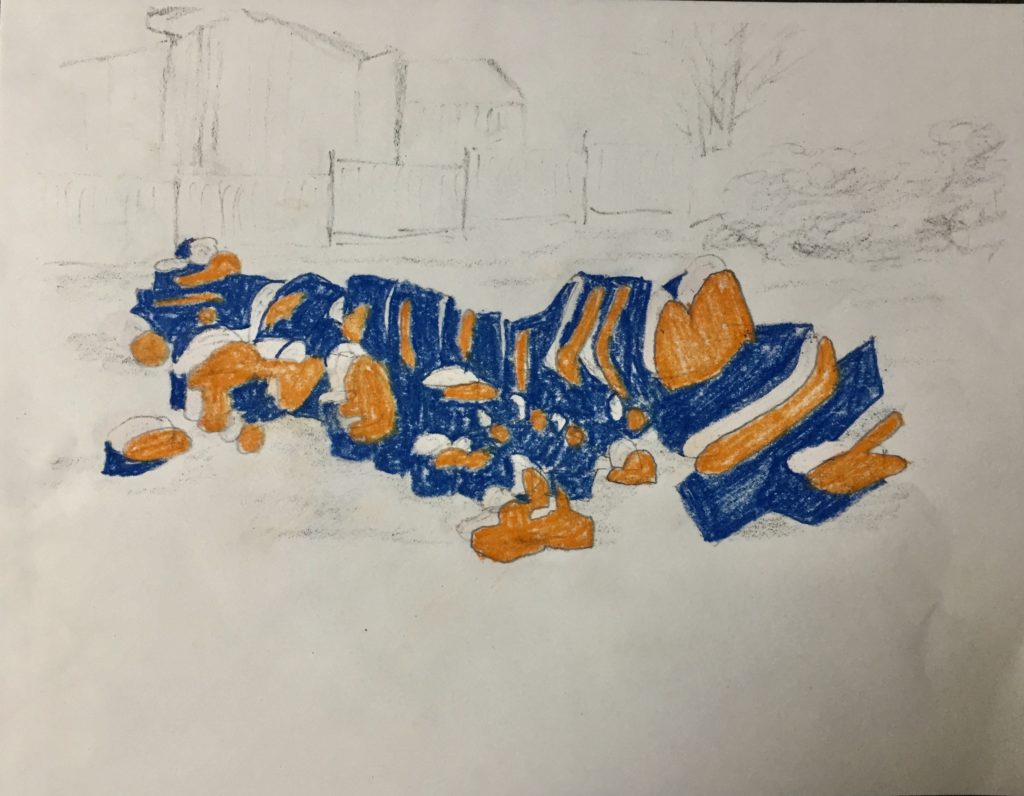
The two colours recombined, but with the orange shifted slightly to the right. 
With red filling in the spaces where the original orange had been.
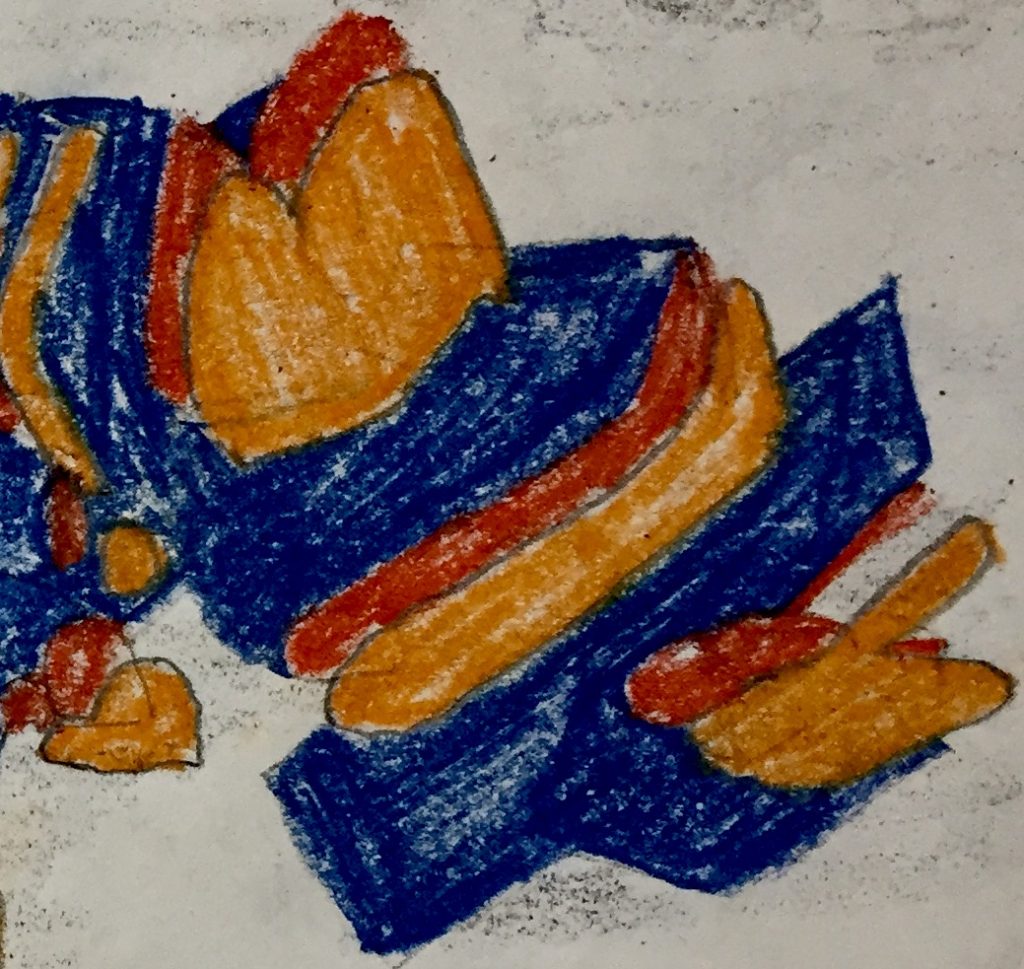
I tried using close-ups of my larger drawing. In the above image, I focussed in on the right side of the drawing. This image would not be recognizable as a felled tree on its own. I was left not really knowing though if any of these close-ups made for good abstract drawings, as I don’t think I know enough yet about the concept of abstraction. Intriguing nonetheless and something to consider for the future.
Idea #3 – Geometric/perspective drawing
My idea here is to take a landscape scene that has strong architectural and perspective elements. I am impressed by the work of Sarah Morris and can see how she transforms such representational objects to more abstract shapes, particularly when her works have a 3 dimensional feel.
The fence panels below with the patio stones in the foreground were an obvious choice from our house. The fence panels are at right angles to each other and align with both directions of the patio stone seams. I have previously thought about how best to draw or paint this part of our yard.

This view had 4 panels in it, but it was too symmetrical for my liking. This view would have used 2 point perspective. 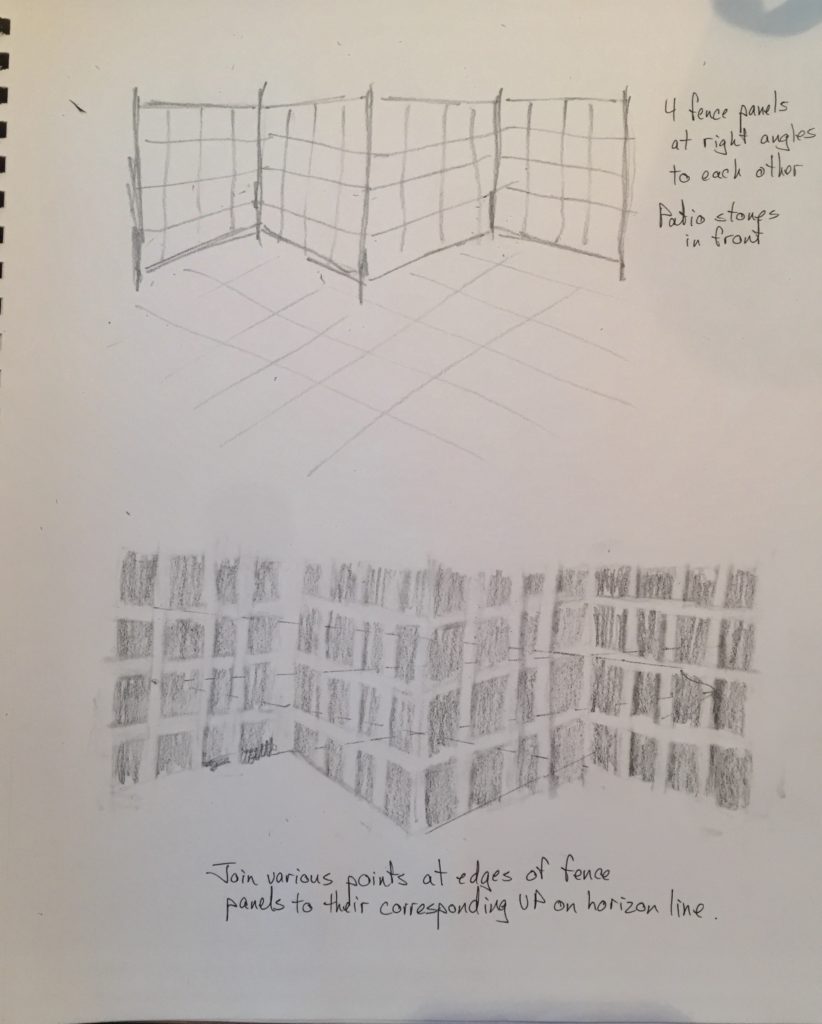
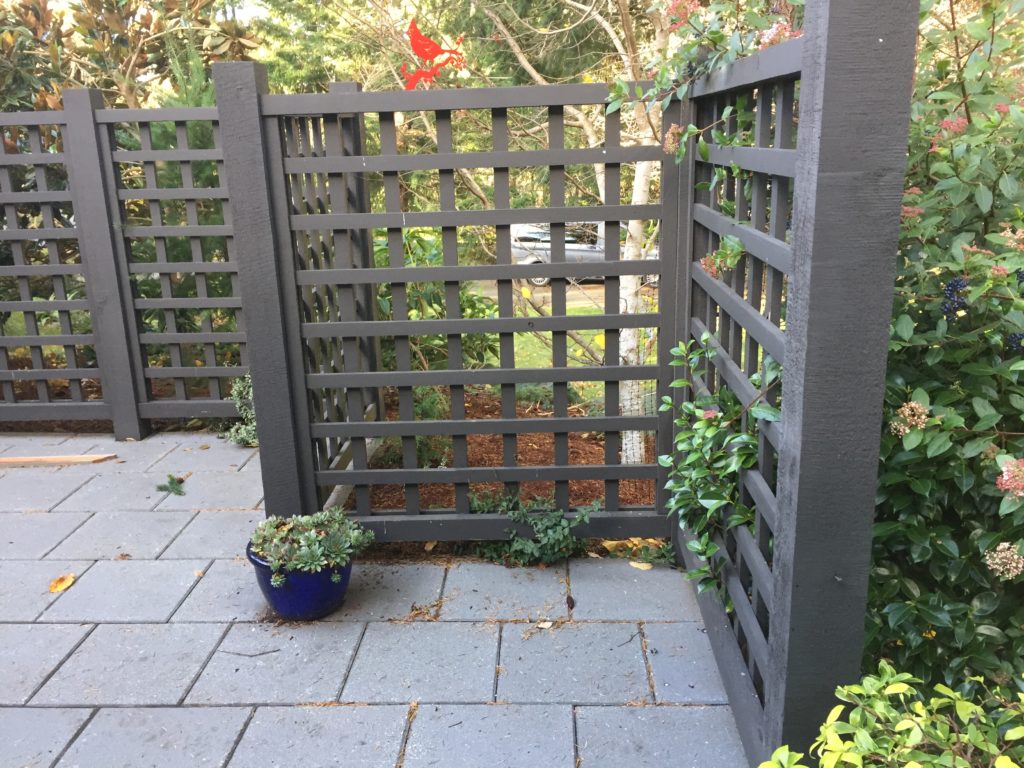
This is the view I chose in the end. It is asymmetrical and the panel pattern recedes toward the background. It uses 1 point perspective, and there are 4 bands of colour beyond the fence (including the unseen sky). 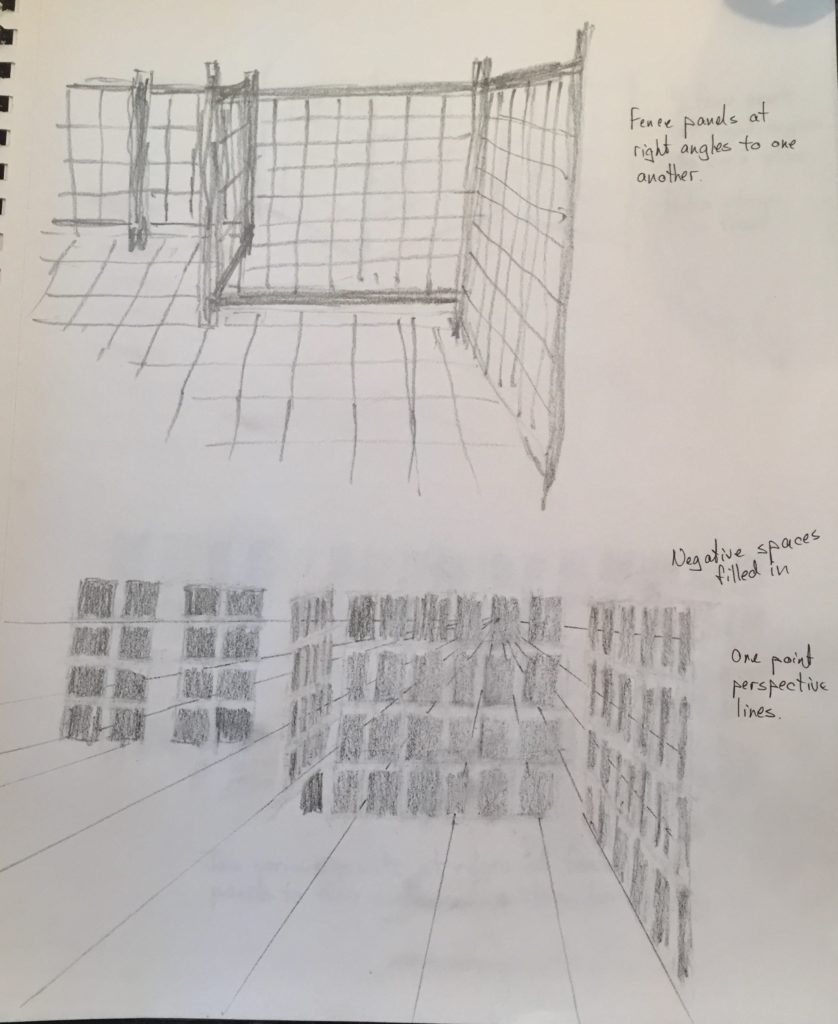
These drawings show my representational drawing above and an idea for a second drawing by focussing on the negative spaces. 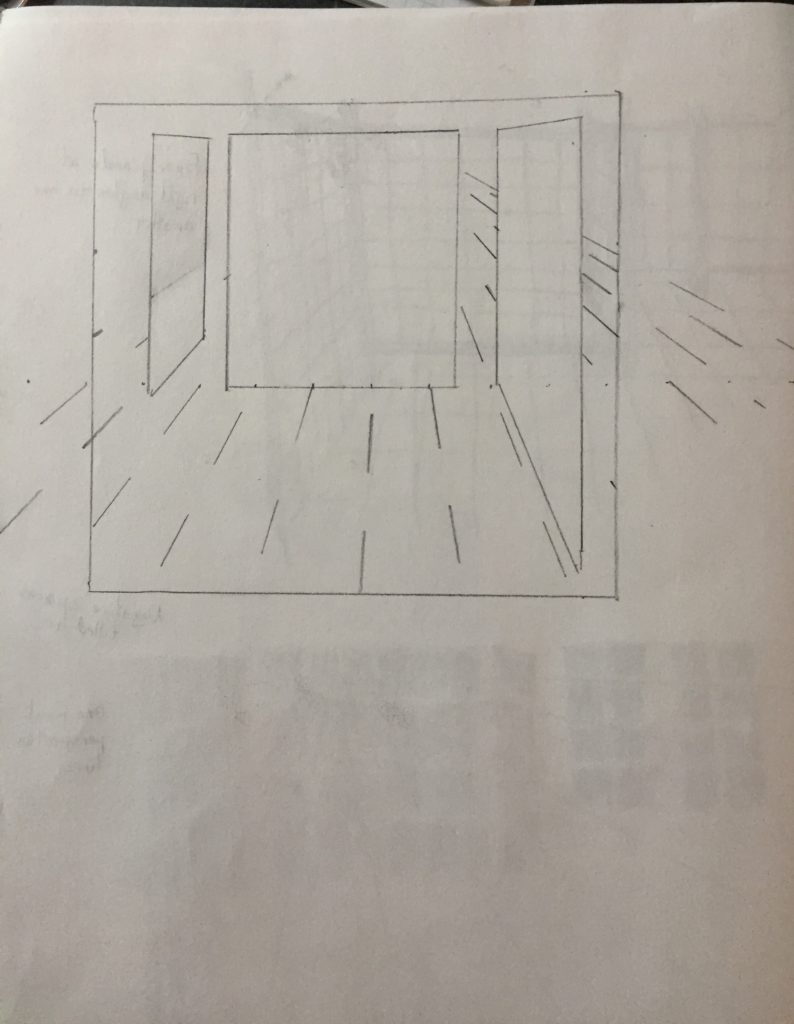
This is how I would like the panel planes to be arranged, the two side ones receding away from the picture plane. The upper lines representing the receding patio stone lines are done in the same 1 point perspective, but they bunch up too much and distract from what the lower lines accomplish. 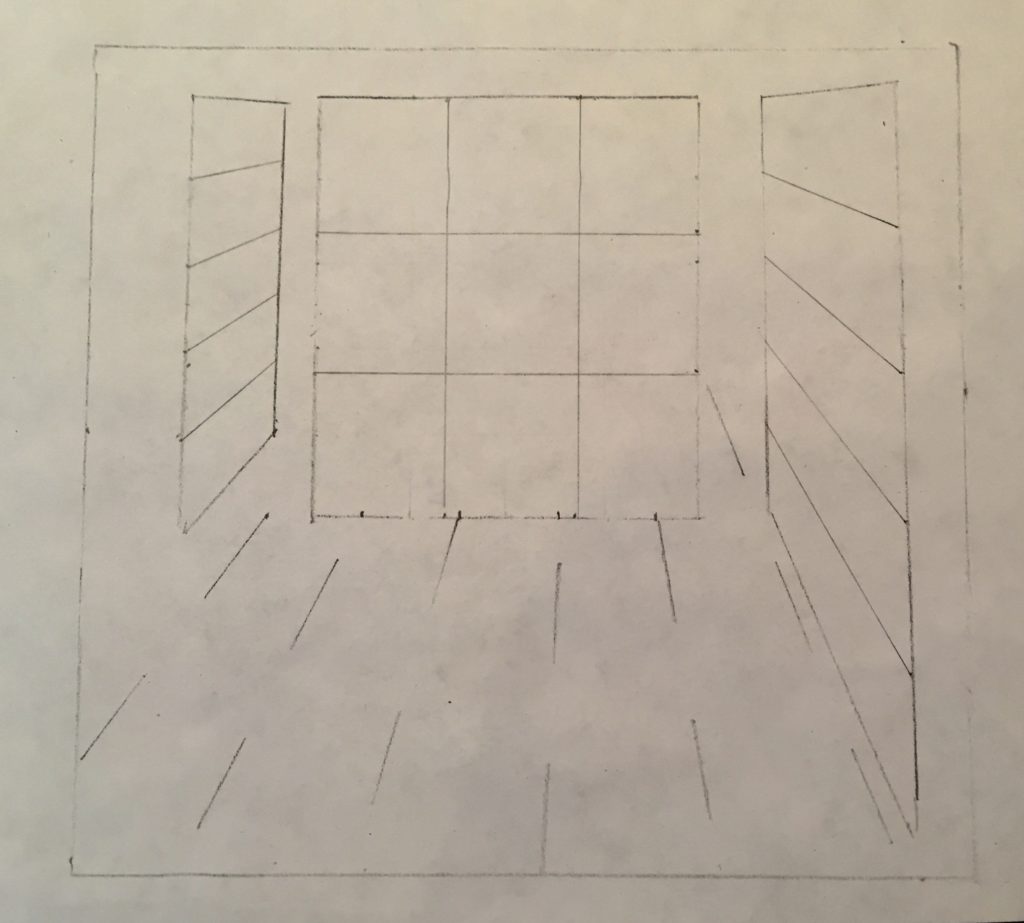
3 x 3 square pattern for middle panel
Patio stone lines all contained within limits of the 3 panels.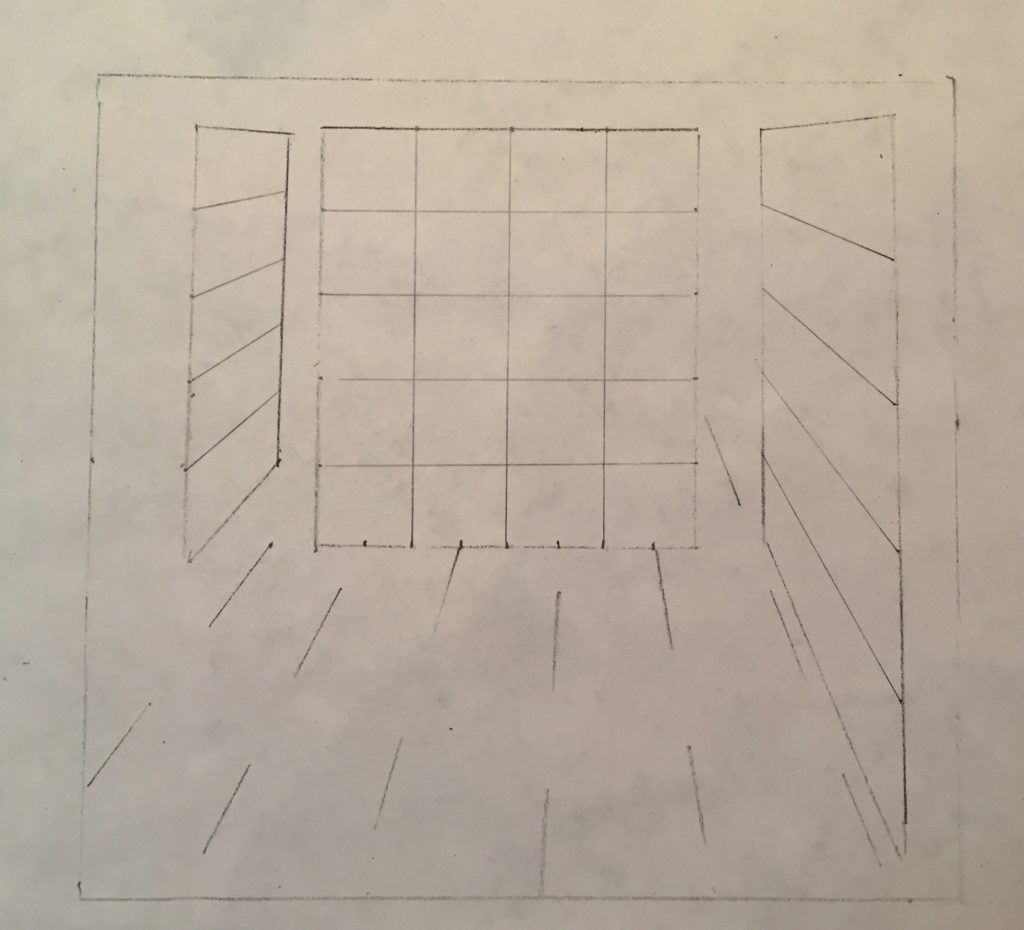
5 x 4 pattern of middle panel. This will not allow enough variation to convey the idea of the four colour bands, the chequered pattern of that panel, and the sense of it countering the movement away from the picture plane.
These are my plannings for colour and pattern. I want the two side panels to give the feeling of movement away from the picture plane and into the background, while the middle panel, parallel to the picture plane, sits counter to that movement. I would like it to represent a static and solid object as opposed to the dynamic movement of the side panels. I feel the roughly 15 x 15 squares of the middle panel conveyed this idea more than the much smaller number of squares I had planned earlier. I want to keep the same 4 rough colour bands of the background, but will change them to something that might be more appealing to the eye. I think I will go with the original 4 large colour bands alternating with black for the side panels, rather than the 8 I have here. I think this will better convey the sense of receding movement.
FINAL DRAWINGS:
“Fore and aft”, December, 2020.
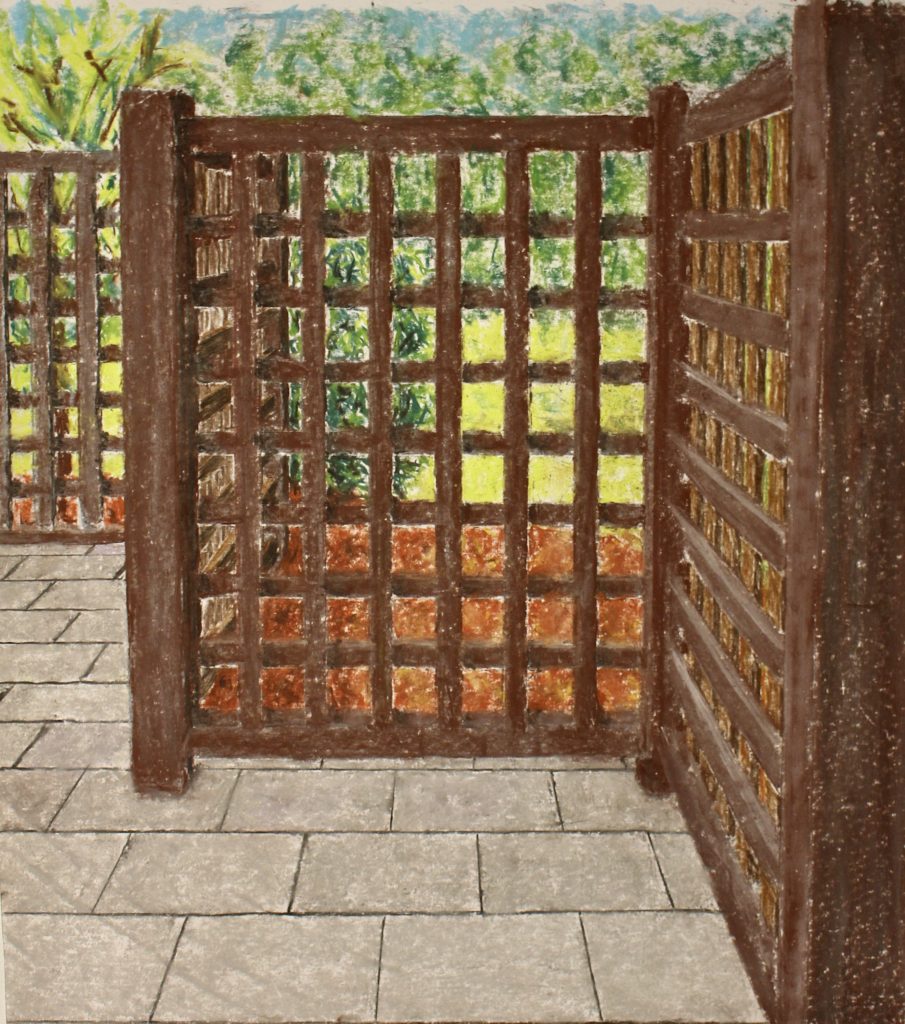
Drawing #1: 15 1/2″ x 17 1/2″, Chalk pastel on paper
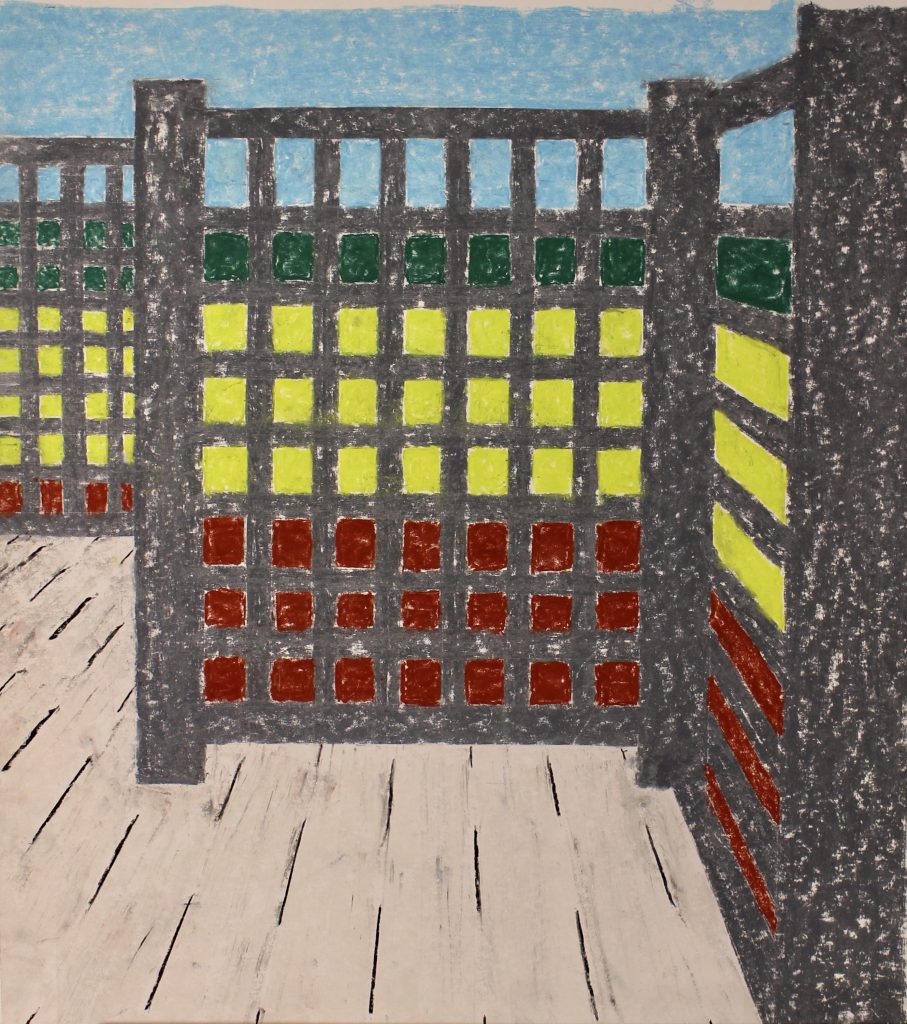
Drawing #2: 15 1/2″ x 17 1/2″, Chalk pastel on paper
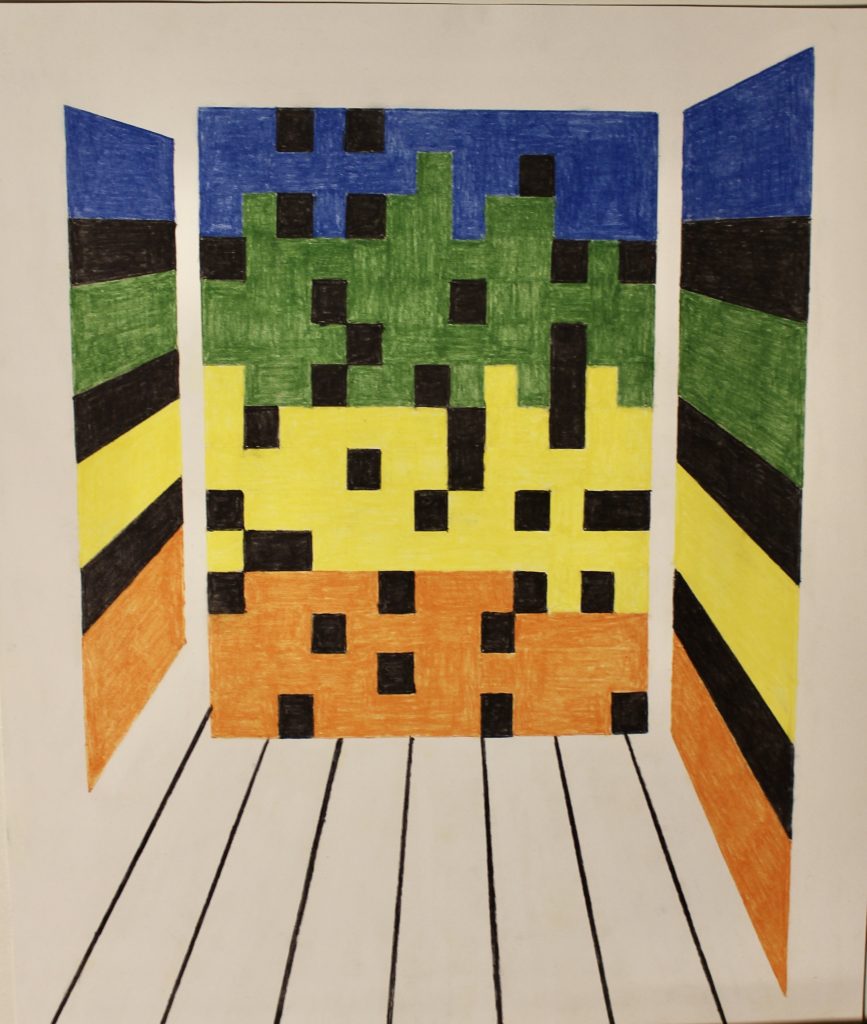
Drawing #3: 15 1/2″ X 17 1/2″, Pastel pencil on paper
As a triptych.
My intention with this series was to take a landscape with strong geometric and perspective components, and transform it into something more abstract while maintaining its planar and directional elements. I originally thought I could do whatever I wanted with the colours, but as I began to simplify the second drawing it felt natural to stick with the original colour pattern and simplify the swaths of colour as well. They do represent the background. As I went along, it became apparent that the foreground paving stone lines were a subtle but important part of the directional movement of these drawings and thus they remained a part of all 3 drawings. The title, “Fore and Aft”, alludes to these foreground and background elements, while the fence planes are obvious anchors in each drawing.
FIN 210 Unit 2
Bonus Artist Talk for FIN 210 – Katie Brennan
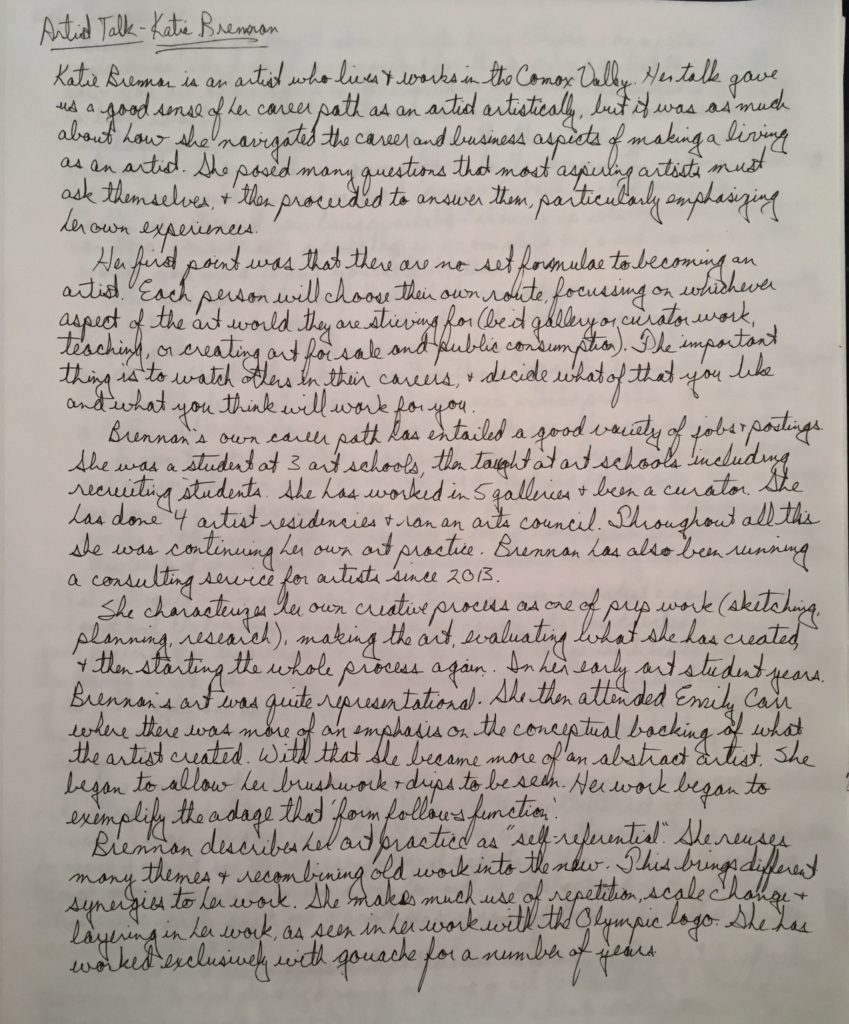

ARTIST TALK – Andrew Moncrief
Human Form and Anatomy Notes & Drawings
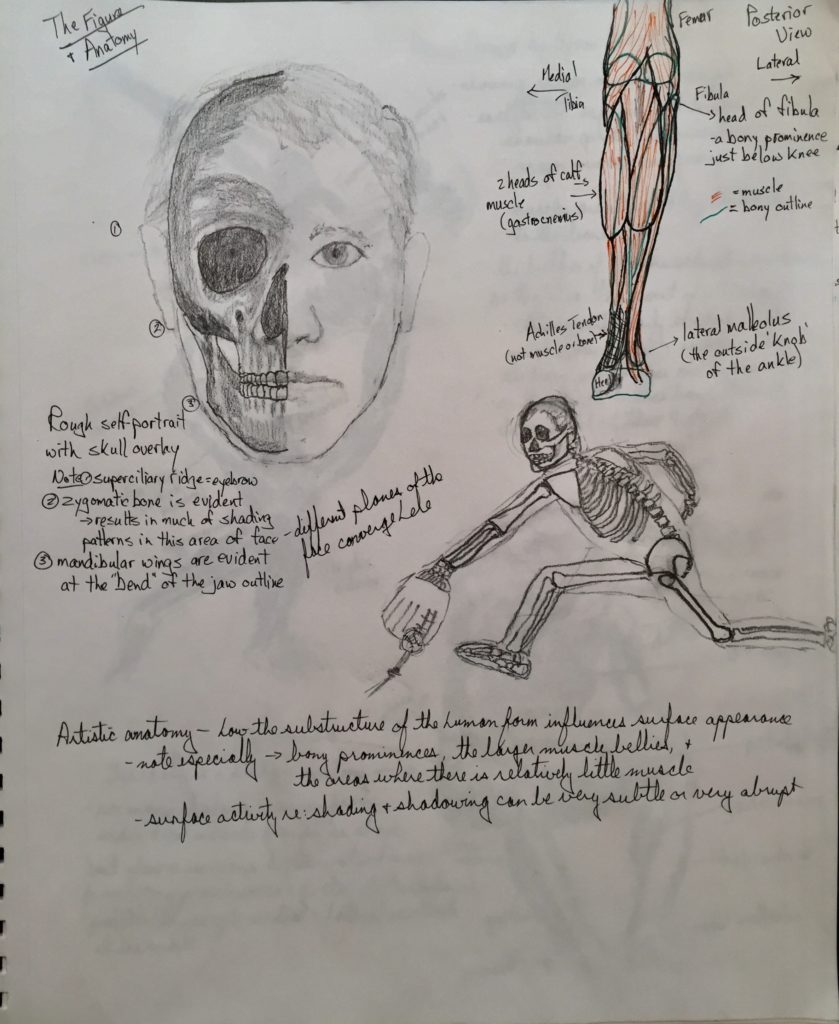


The Figure and Anatomy notes
-artistic anatomy- how the substructure of the human form influences the surface appearance – this especially relates to the skeletal and muscle structures, their relationship to each other, and their relationship to the visible surface of the fleshed figure
-surface activity can be very subtle or very abrupt
-bony landmarks- where skeletal structure rises to the surface and makes itself evident
-musculature- note especially how it relates to the skeletal structure and how it changes with various movements and positions of the body
Cumberland Life Drawing October 21st


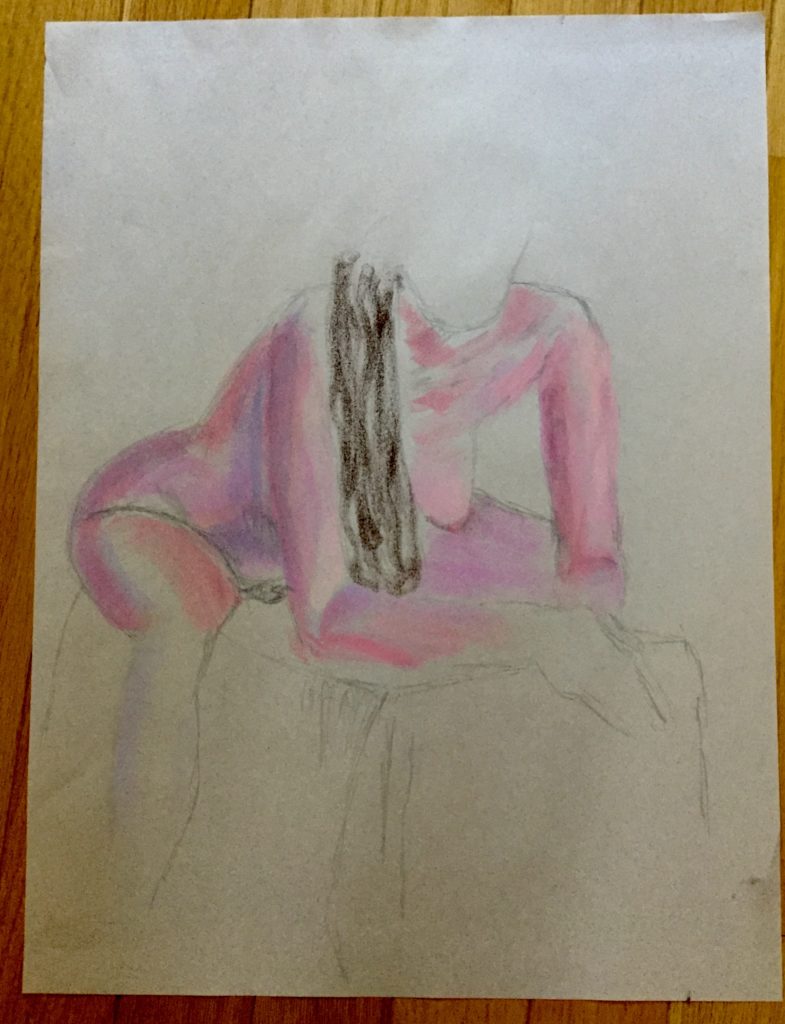
GESTURE DRAWINGS October 30, 2020

Charcoal pencil 
Charcoal pencil 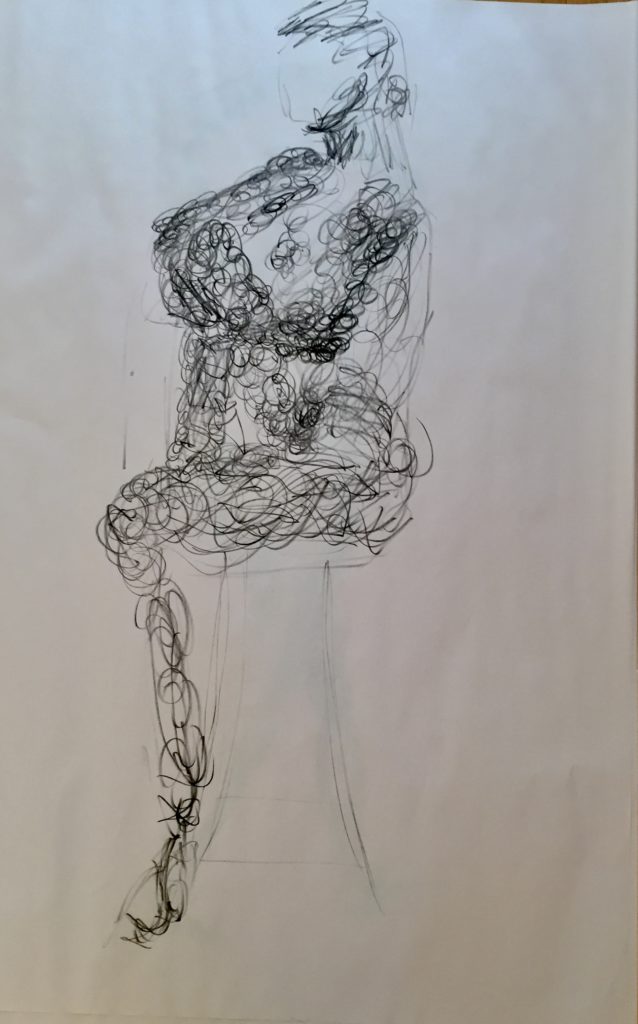
Charcoal pencil 
Conte – negative space 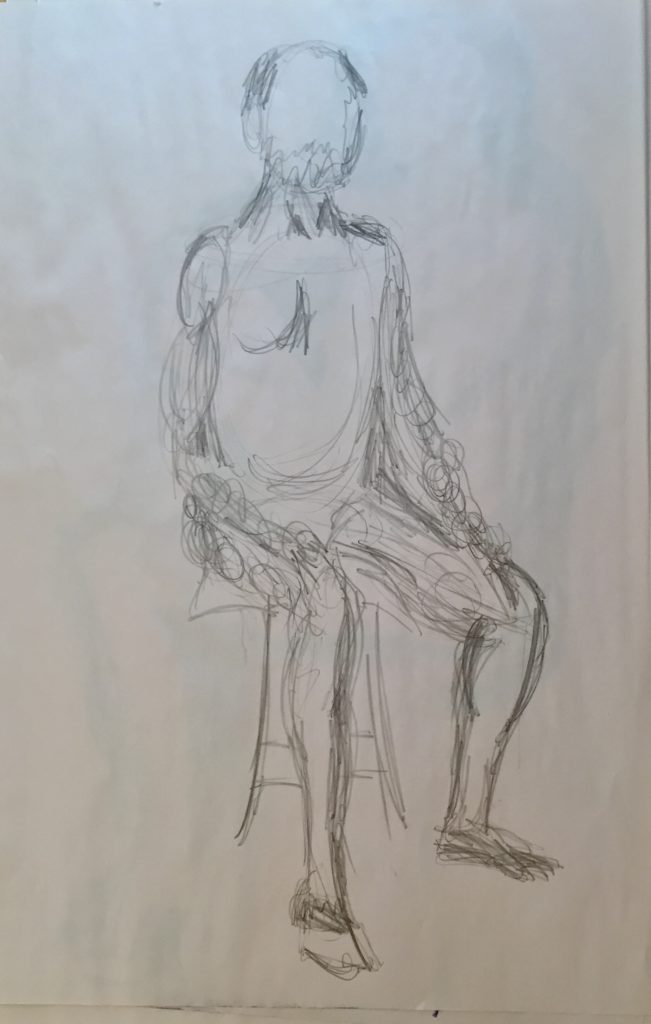
Graphite 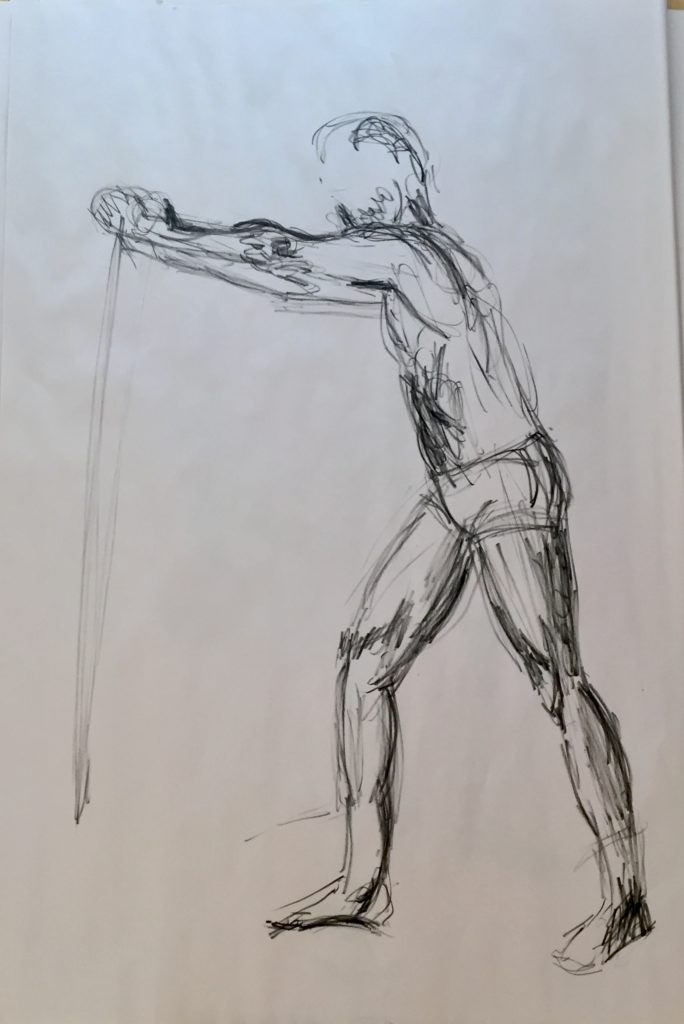
Charcoal pencil 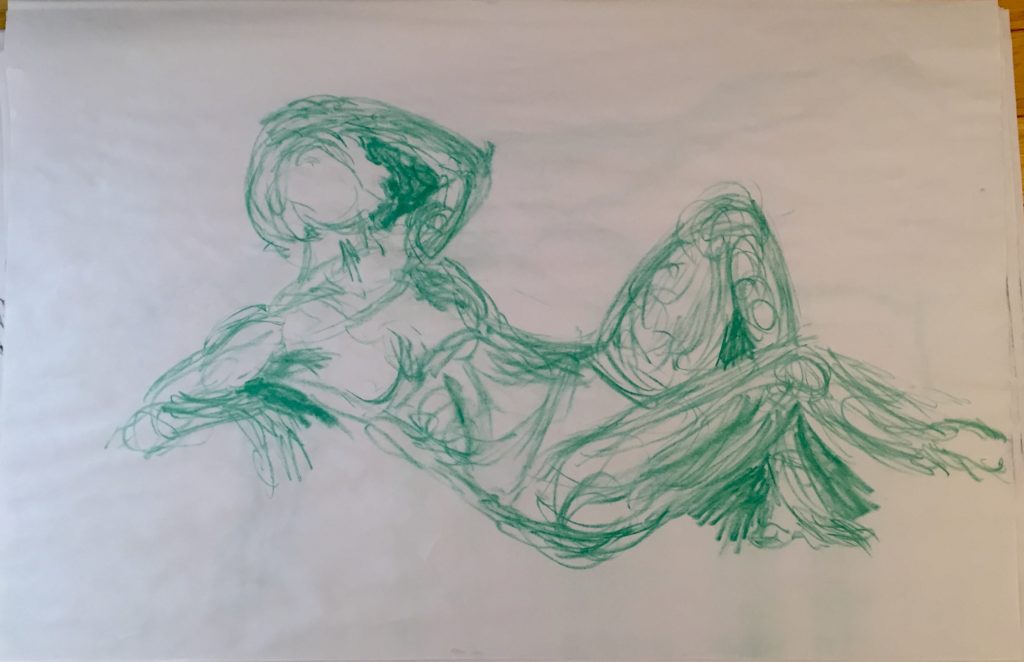
Conte 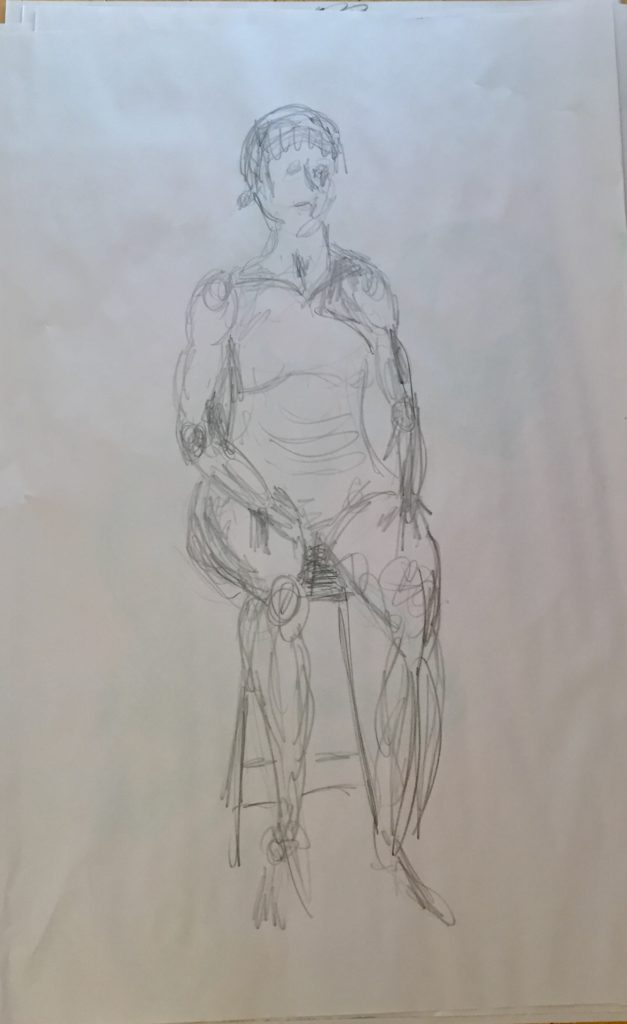
Graphite
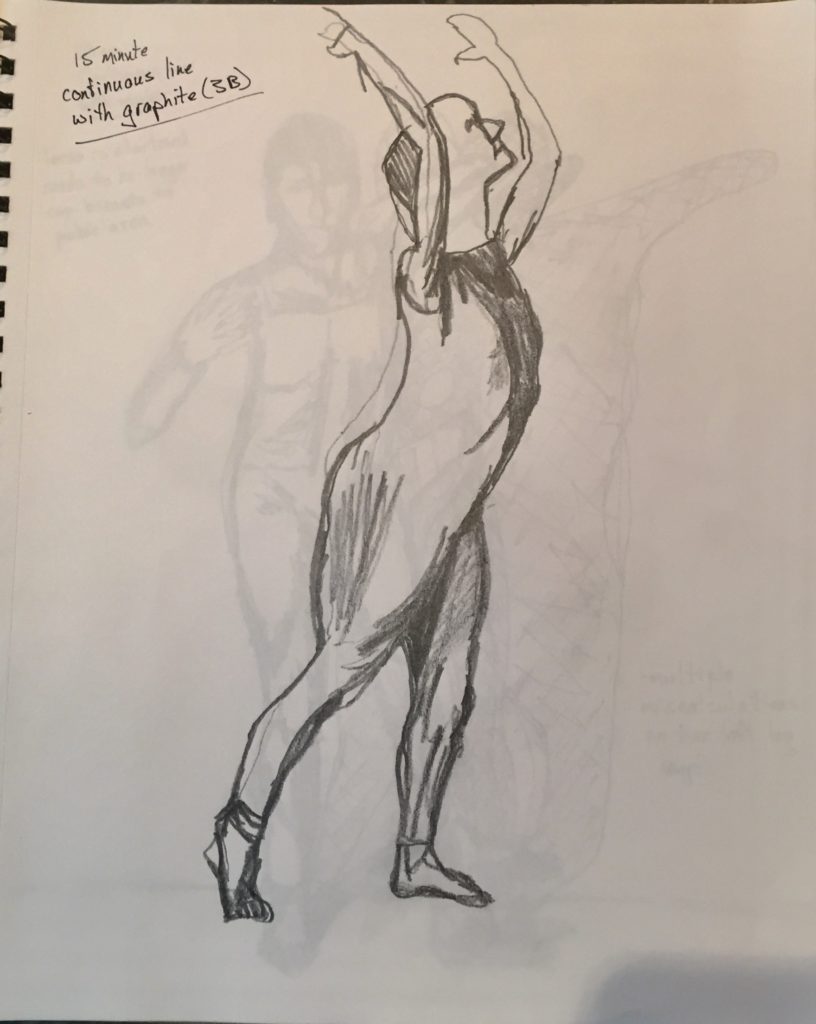
15 minute continuous line
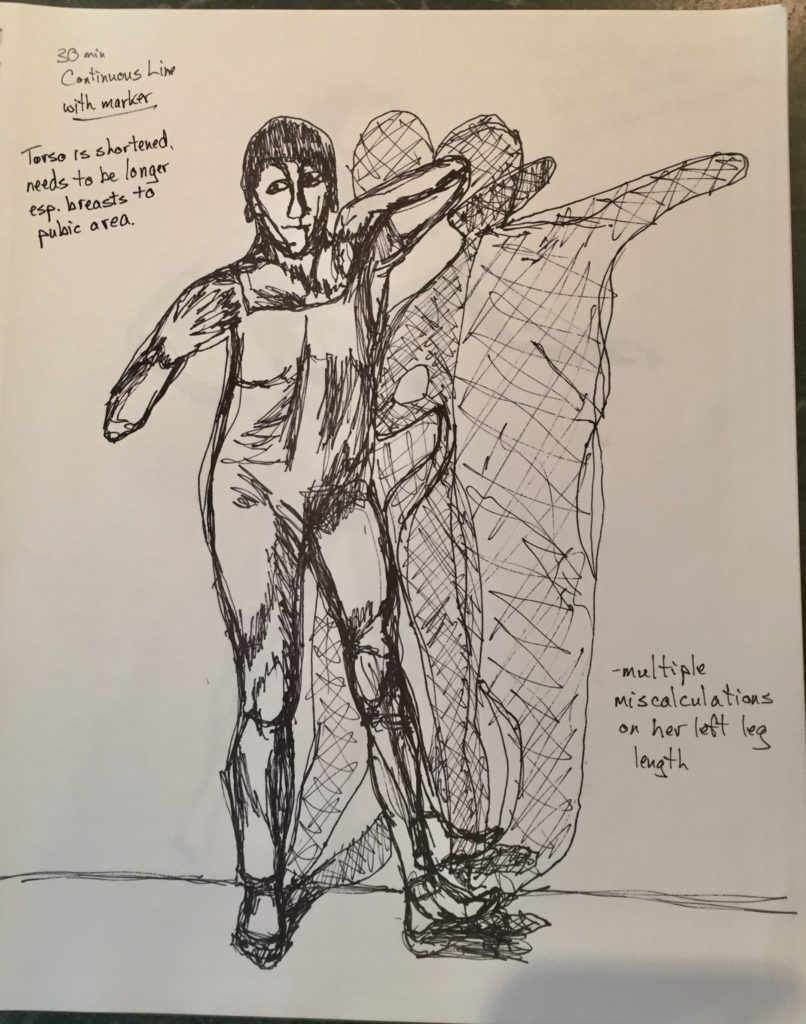
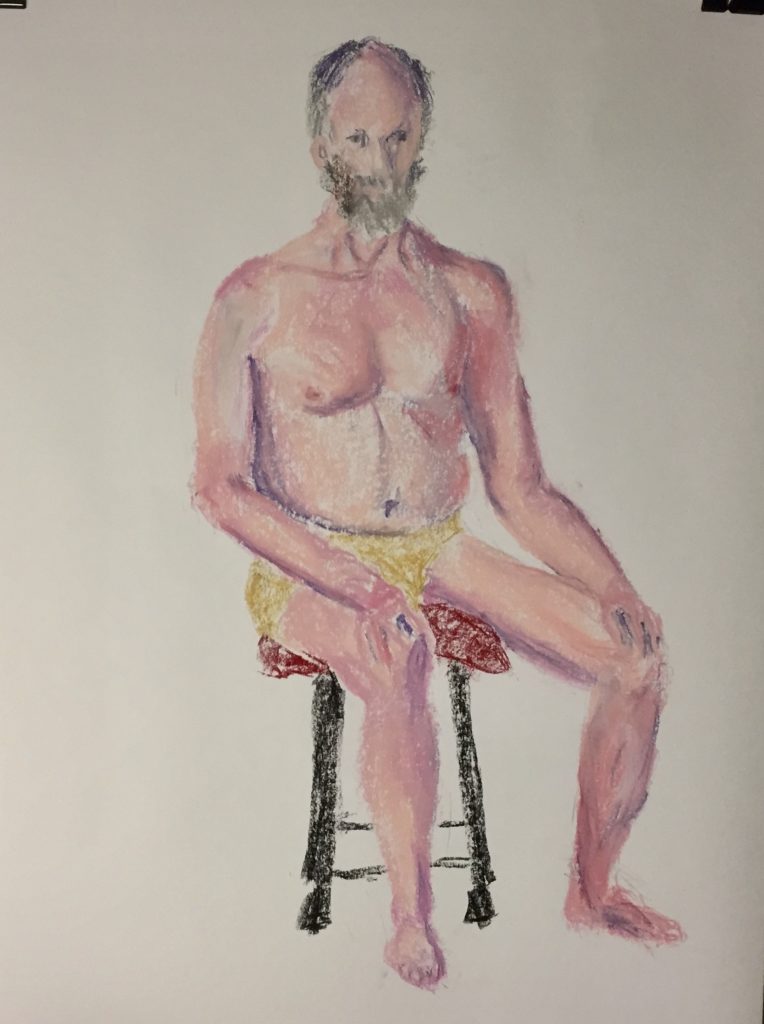
Sketchbook drawings
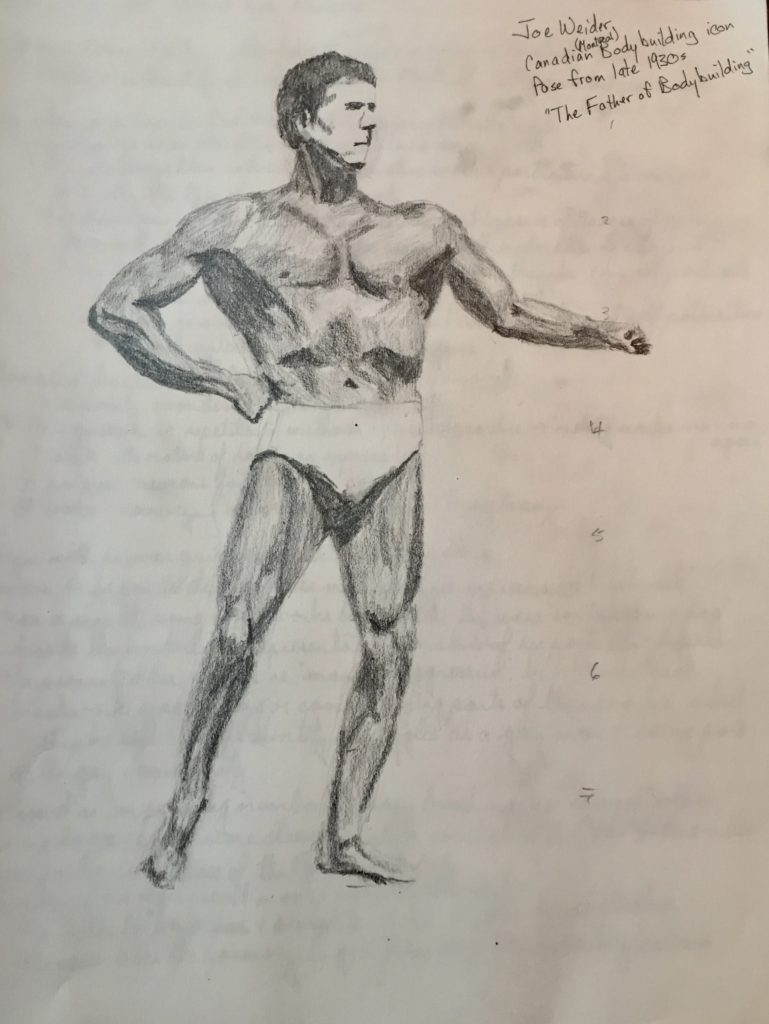
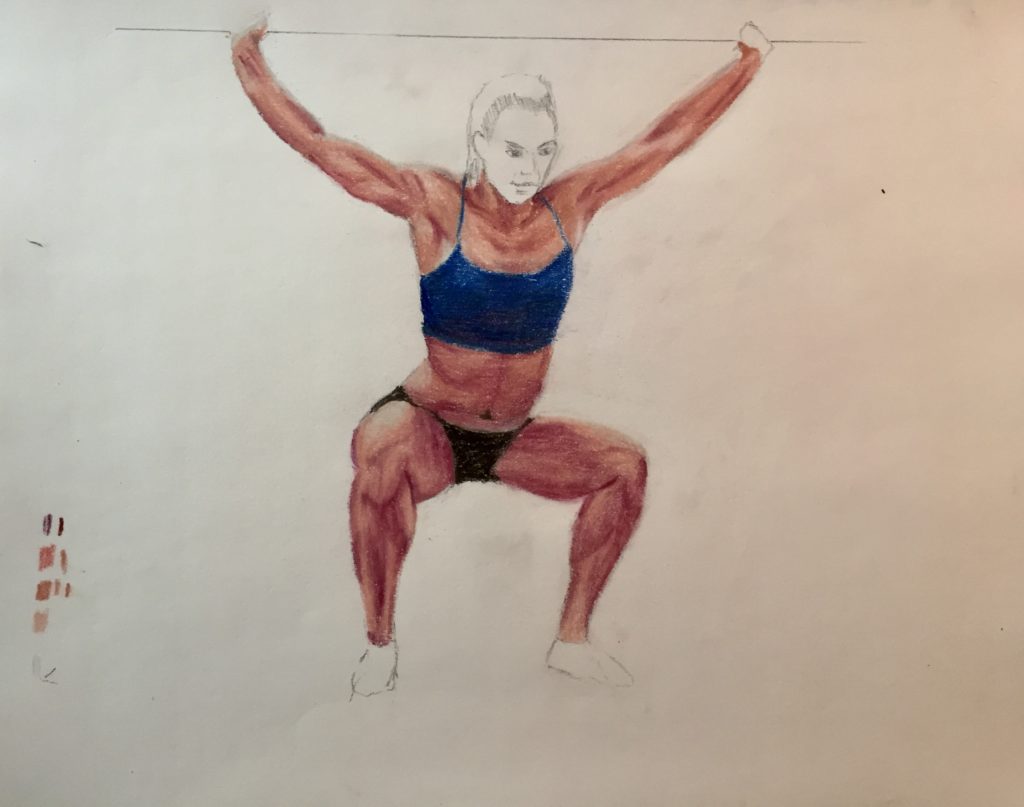
Cumberland Life Drawing November 4th


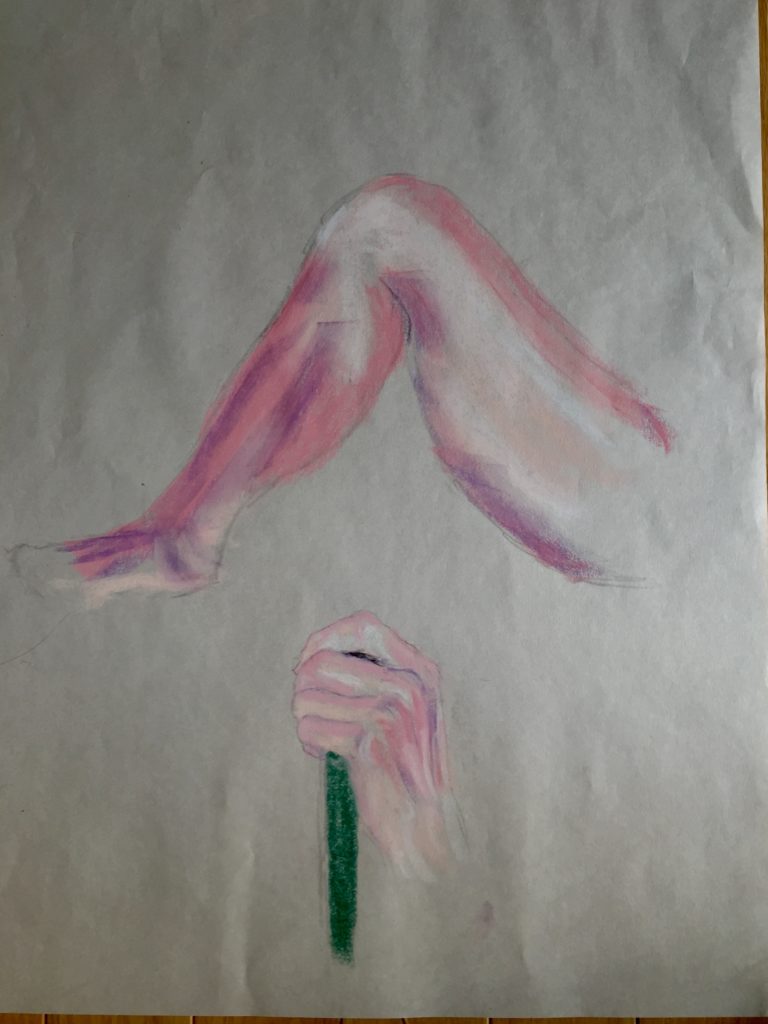
Drawings – Week of November 2nd
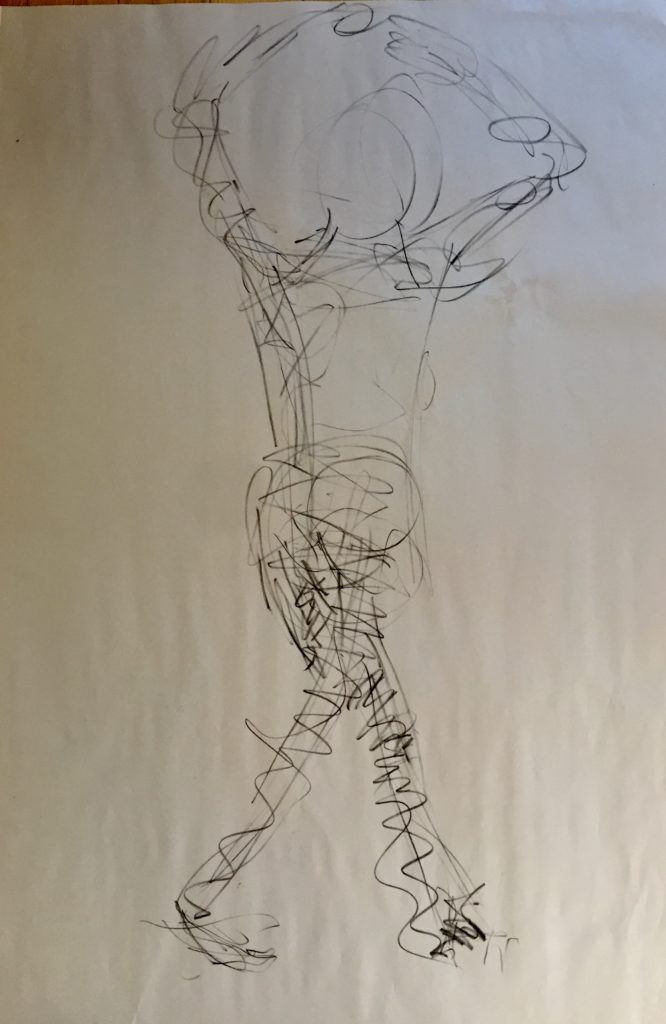
Charcoal 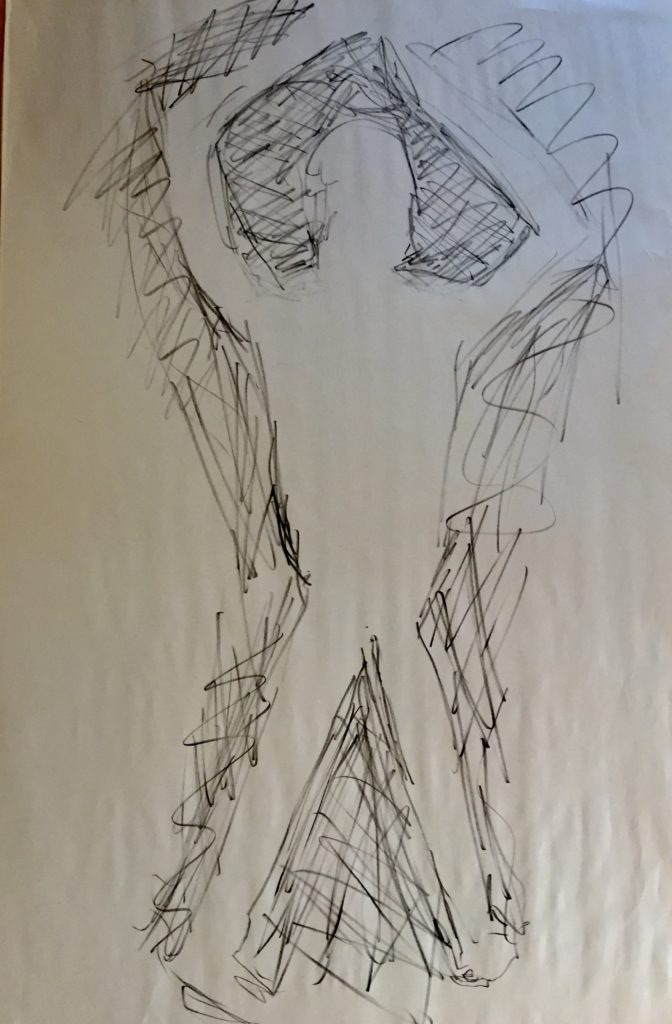
Charcoal negative space 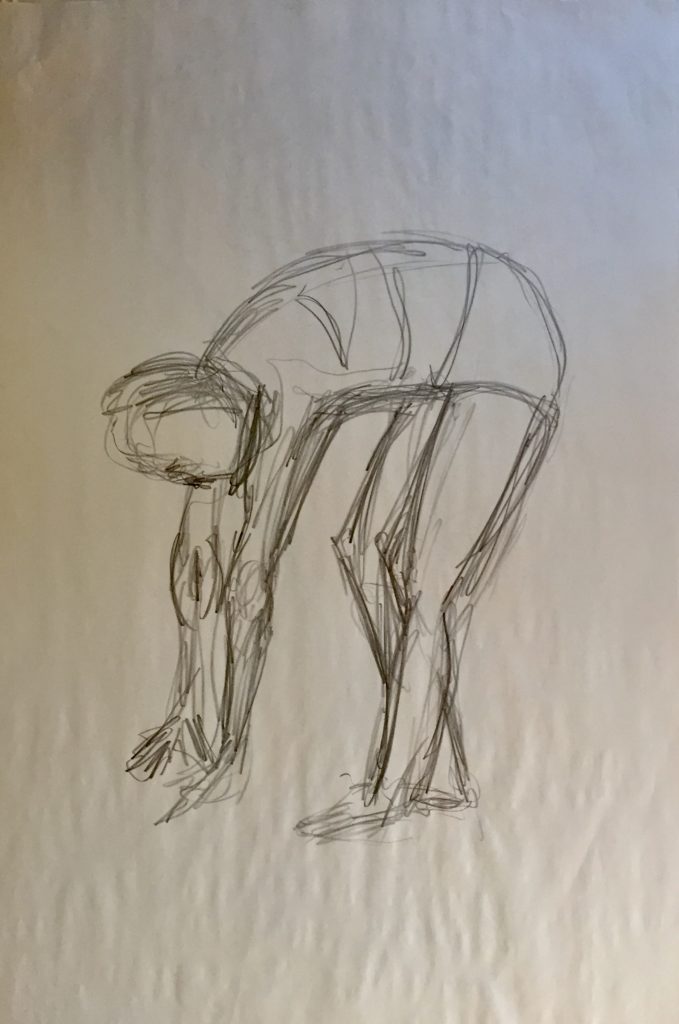
Graphite sustained 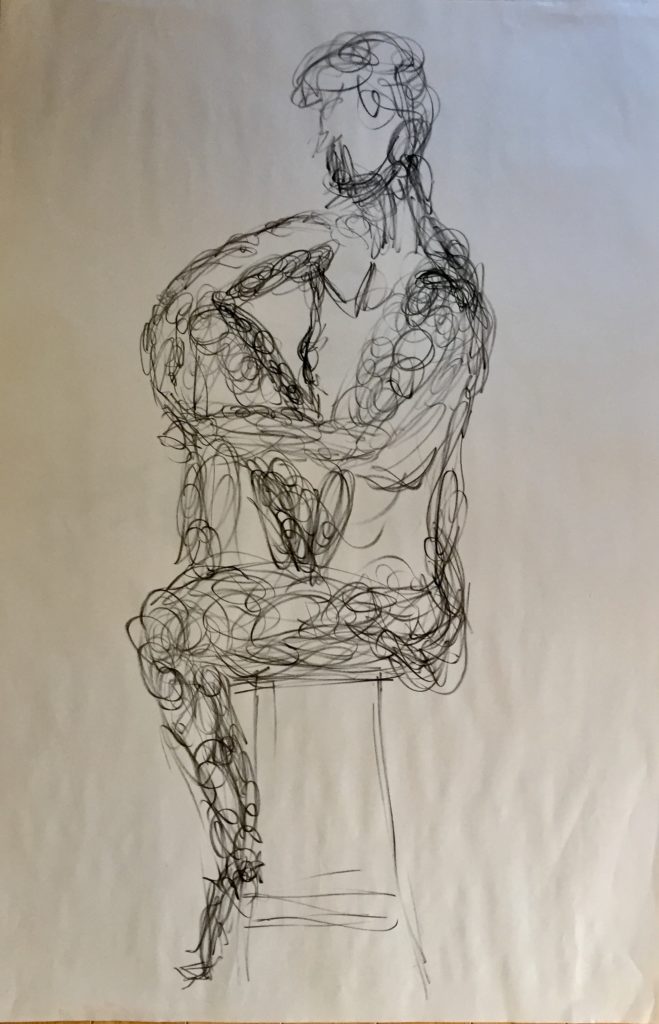
Charcoal scribbled 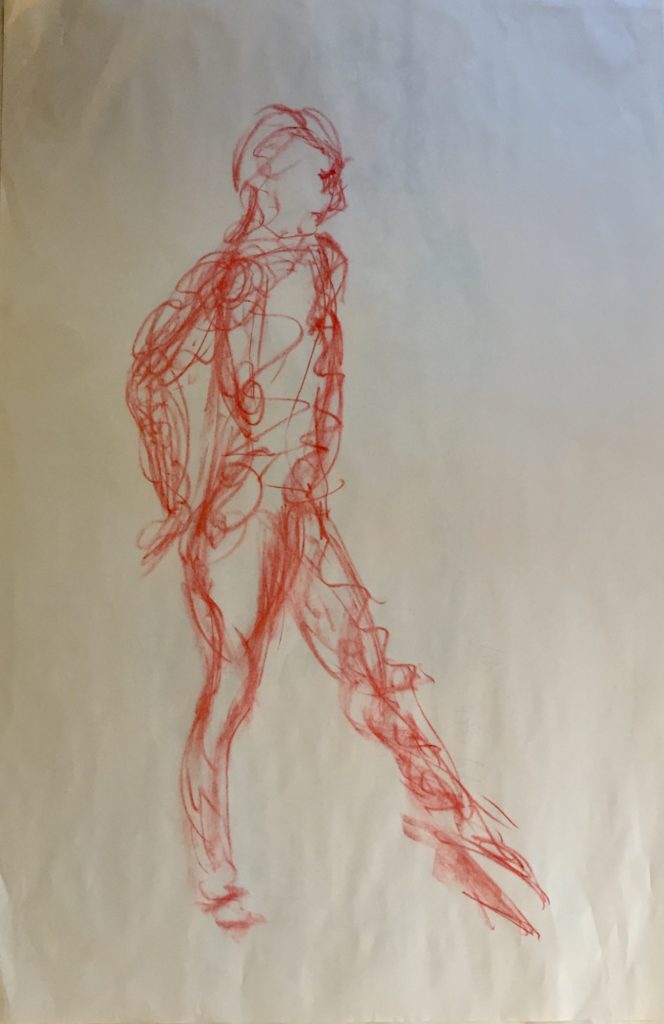
Conte, maybe some mass effect 
Graphite, sustained 
Charcoal 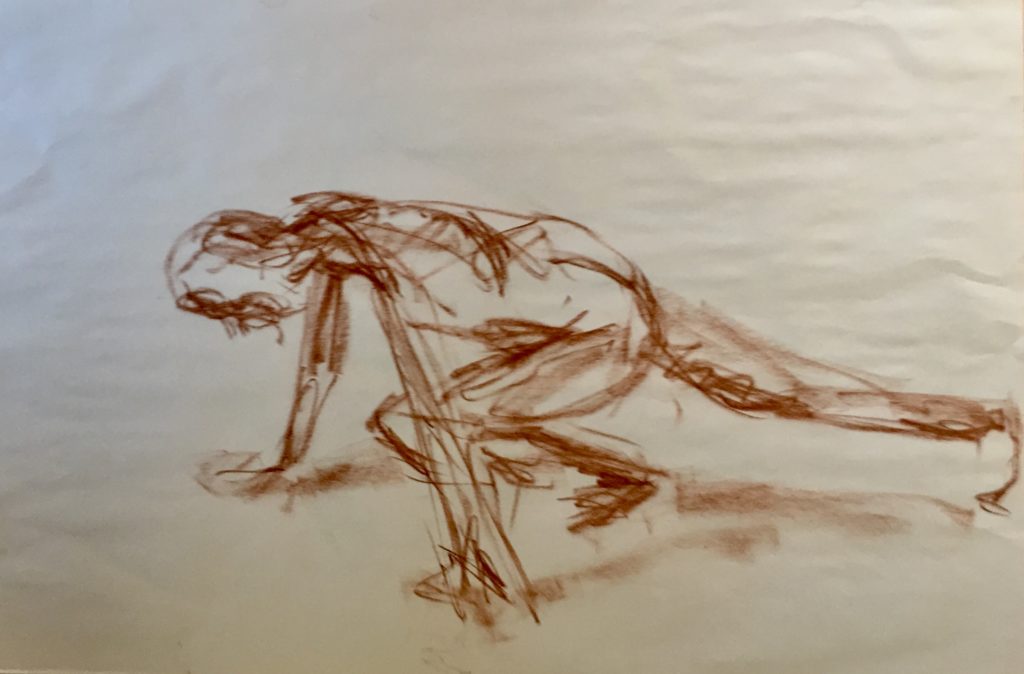
Conte

Ink background, plain paper, chalk pastels 
Black Stonehenge paper, chalk pastels

Week of November 9th

Hand on left done next, trying a variety of colour combinations. 5th finger and hypothenar eminence were done using only 3 different hues. I am most satisfied with that.
Critique Drawing
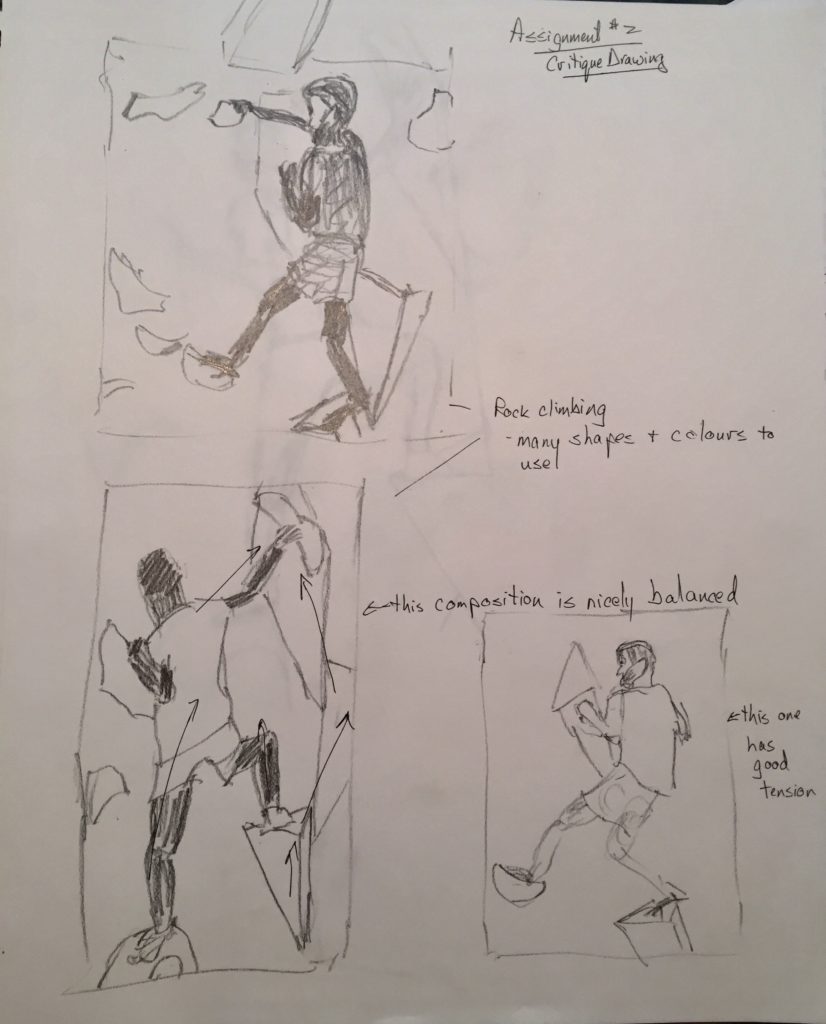
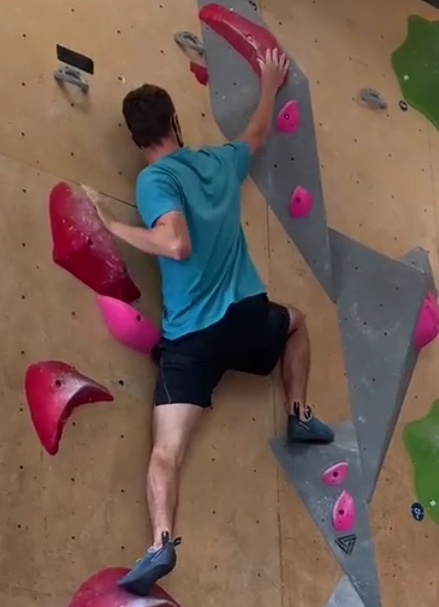
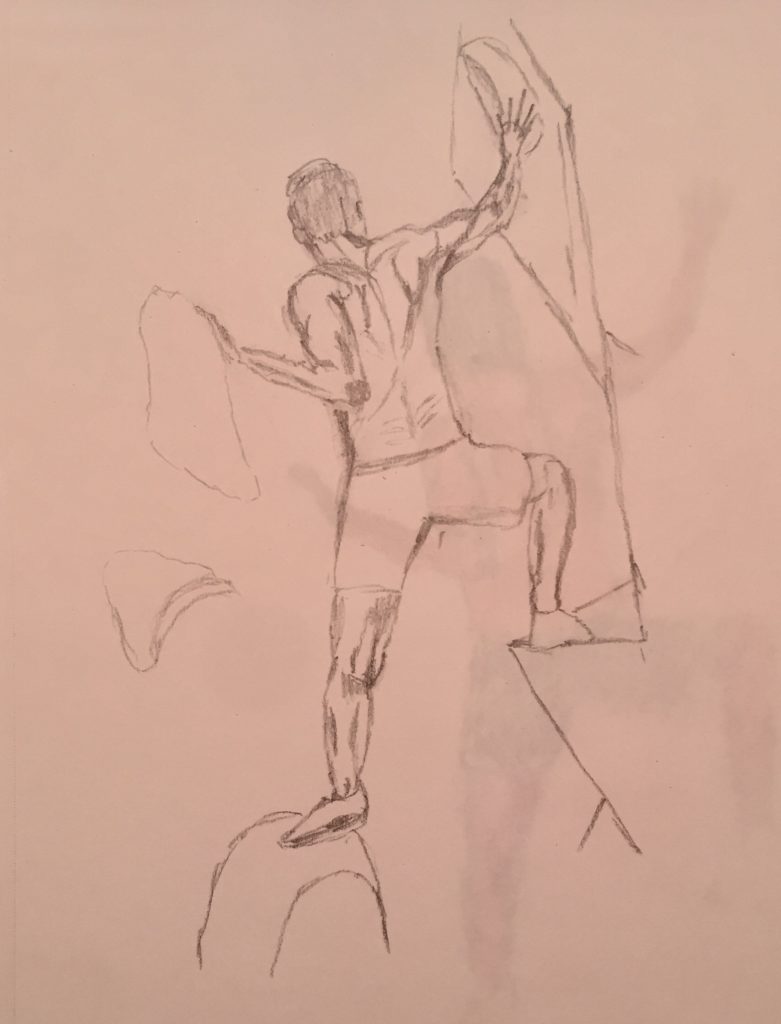
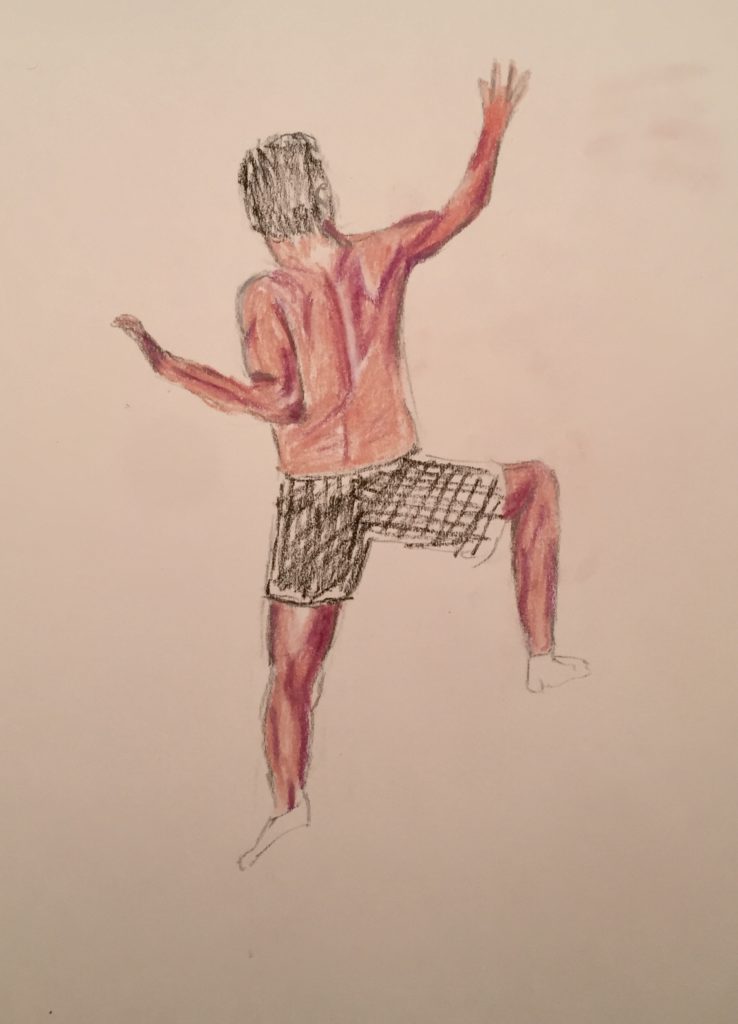


“New Horizons”, October, 2020. (22″ x 30″)
Chalk pastel on white Stonehenge paper.
Although enjoying himself, my son was finding life away from home for the first time somewhat difficult, especially in the face of the pandemic. So when he sent me videos of himself rock climbing I felt the parallels with what he was facing were very evident. I reviewed a variety of figure positions in the videos, but felt this was the best as it had areas of muscle tension and relaxation, some challenging foreshortening, and I liked the sense of movement of the figure up the wall. The holds/rocks are as they were in the video, so this further convinced me to use this composition as they too contributed to the sense of movement.
I felt limited by the detail I could get with the chalk pastel, but perhaps a larger variety of colours might help. In my mind, I wanted this to be more finely detailed and shaded, but I was left feeling the chalk pastel don’t lend itself to that effect. The raw sienna I used for the background was more concentrated where I had rubbed out my drawing grid lines, and I couldn’t get rid of it. However, it mimicked nicely the seams of the plywood on the walls anyway, so I left it and thoroughly erased all the grid lines to get the same effect.
FIN 210 Unit 1
LANDSCAPE GESTURES – FILBERG LODGE
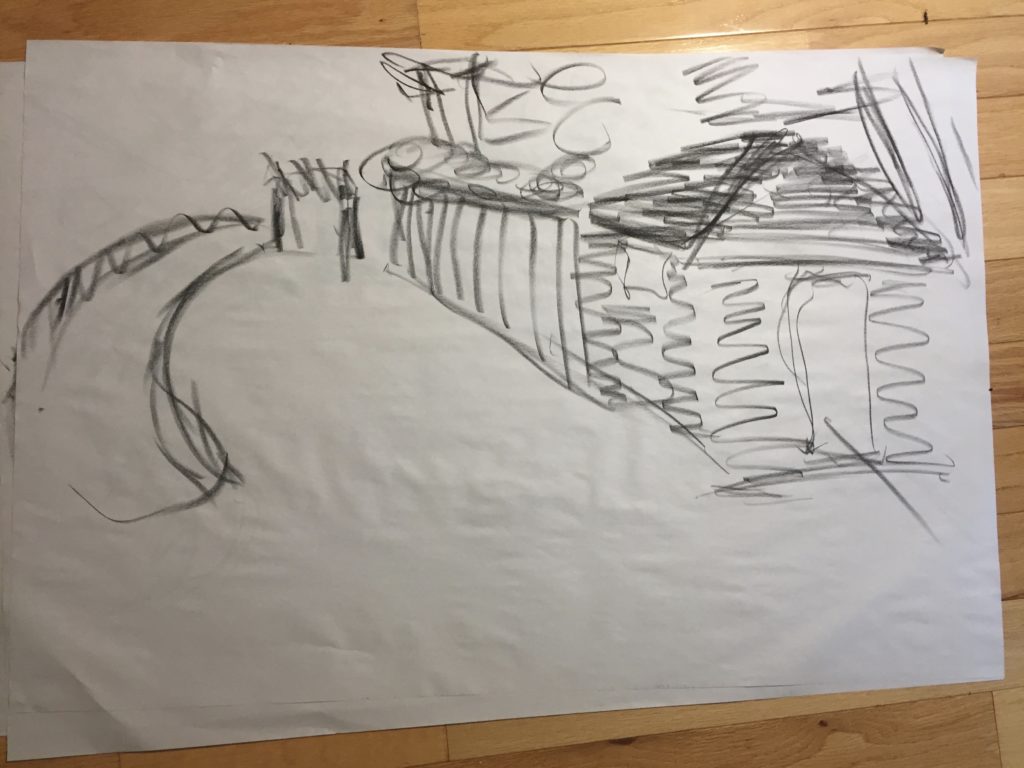
Charcoal 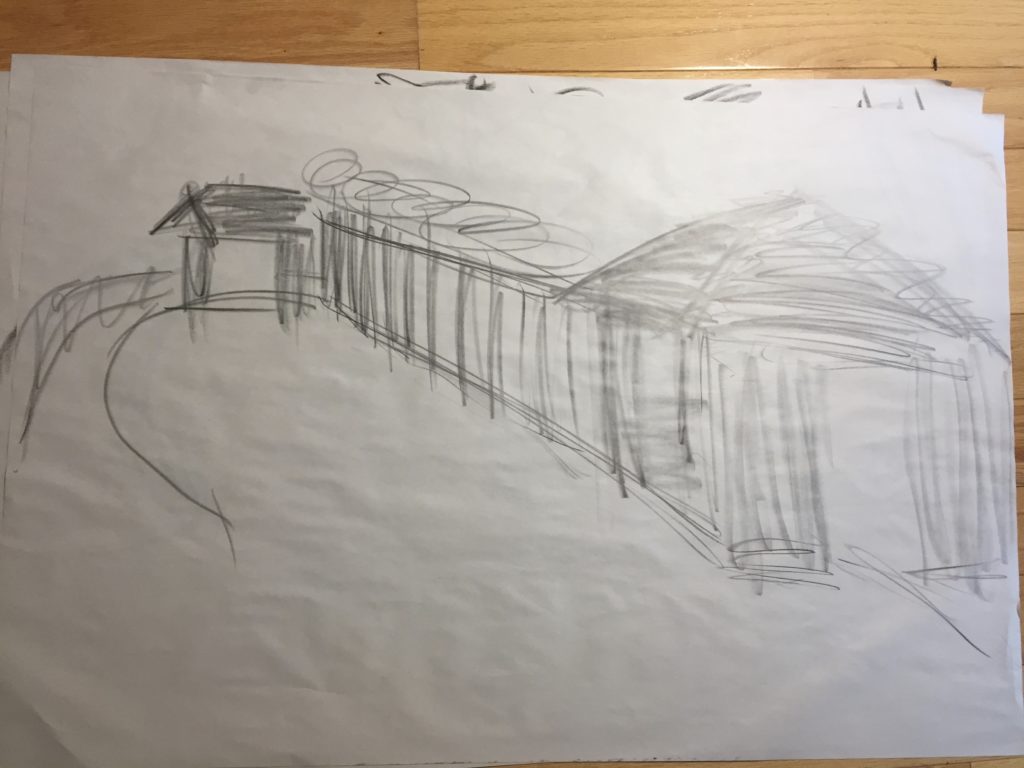
Graphite-slow on the paper 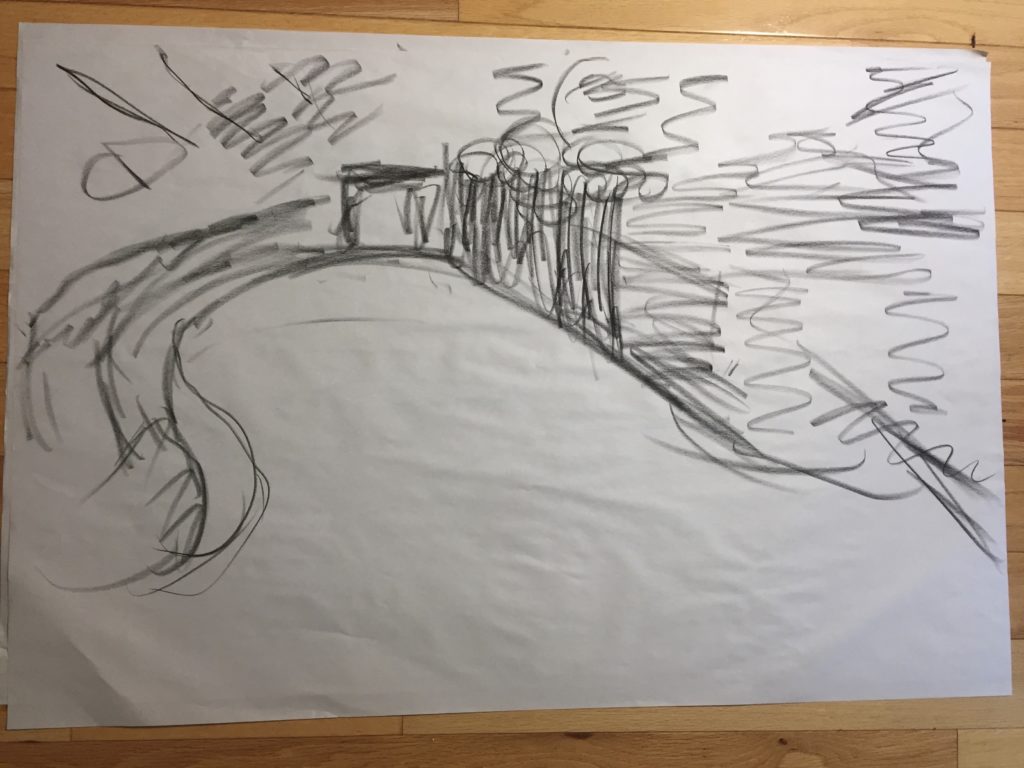
Charcoal 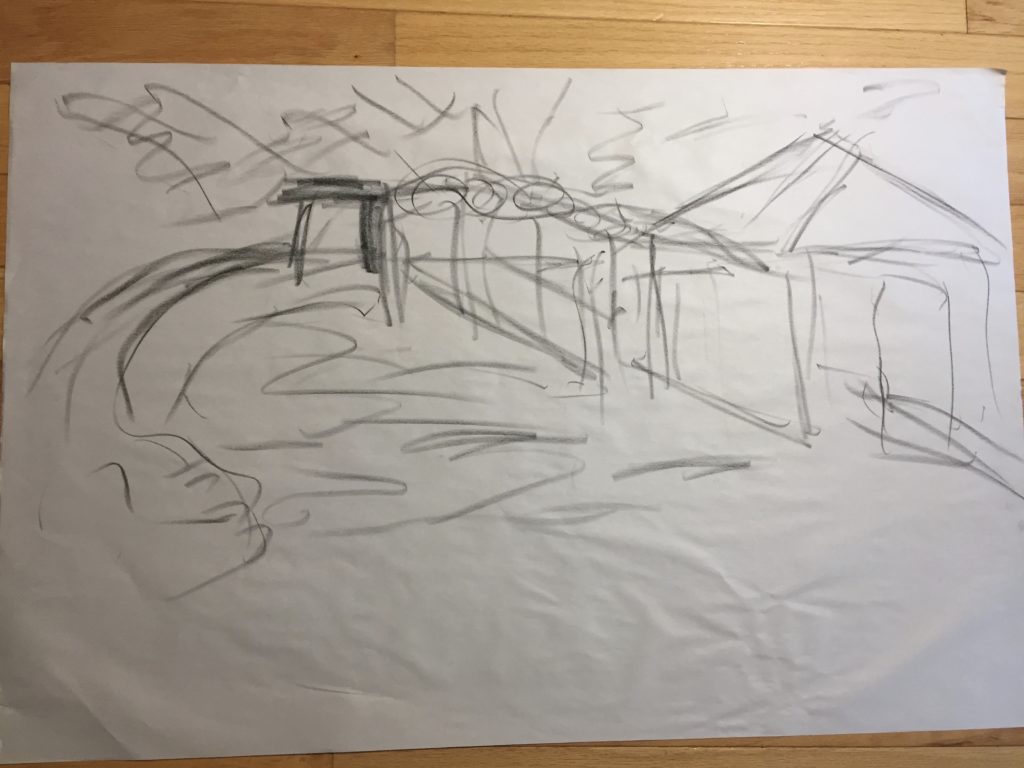
Graphite stick – slow on the paper for a gesture drawing and it doesn’t feel at all robust. 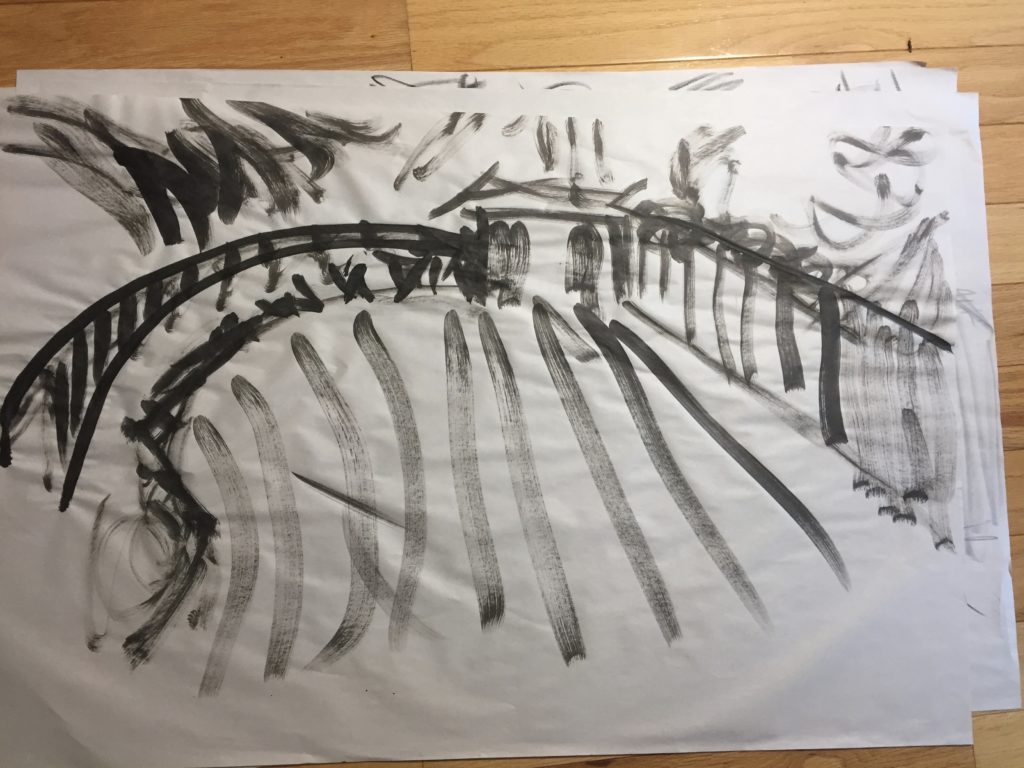
Ink – brush moves quickly on paper. Need to reload brush. 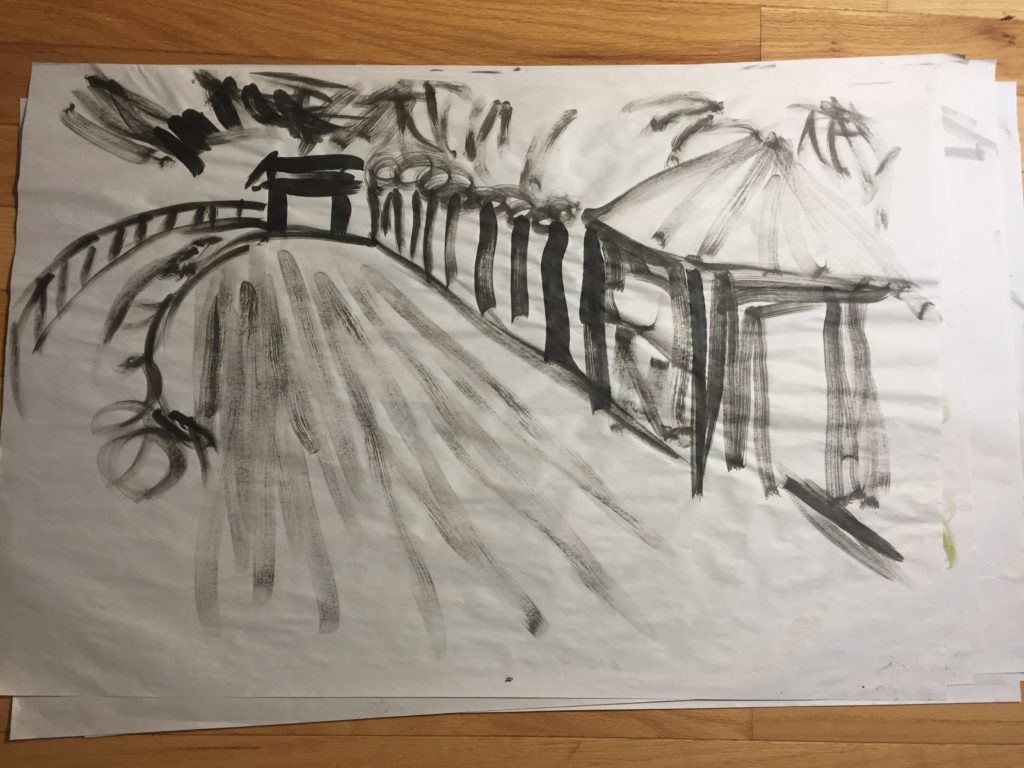
Ink 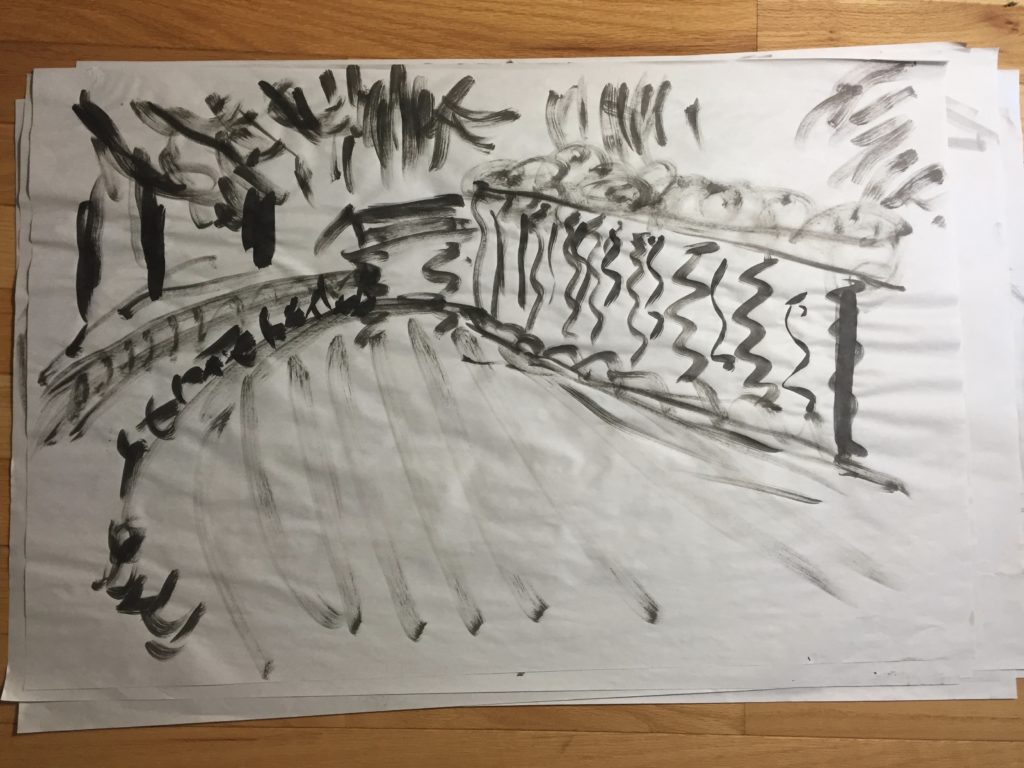
Ink 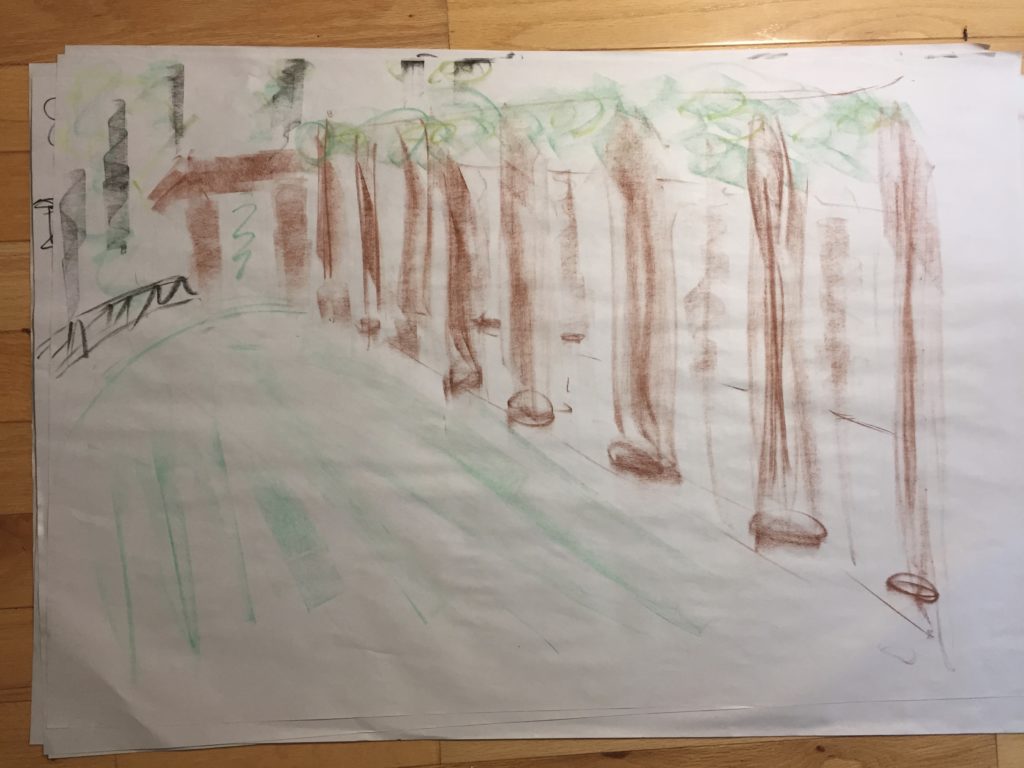
Conte – also slow. Requires multiple passes to get anything other than thin lines. 
Marker 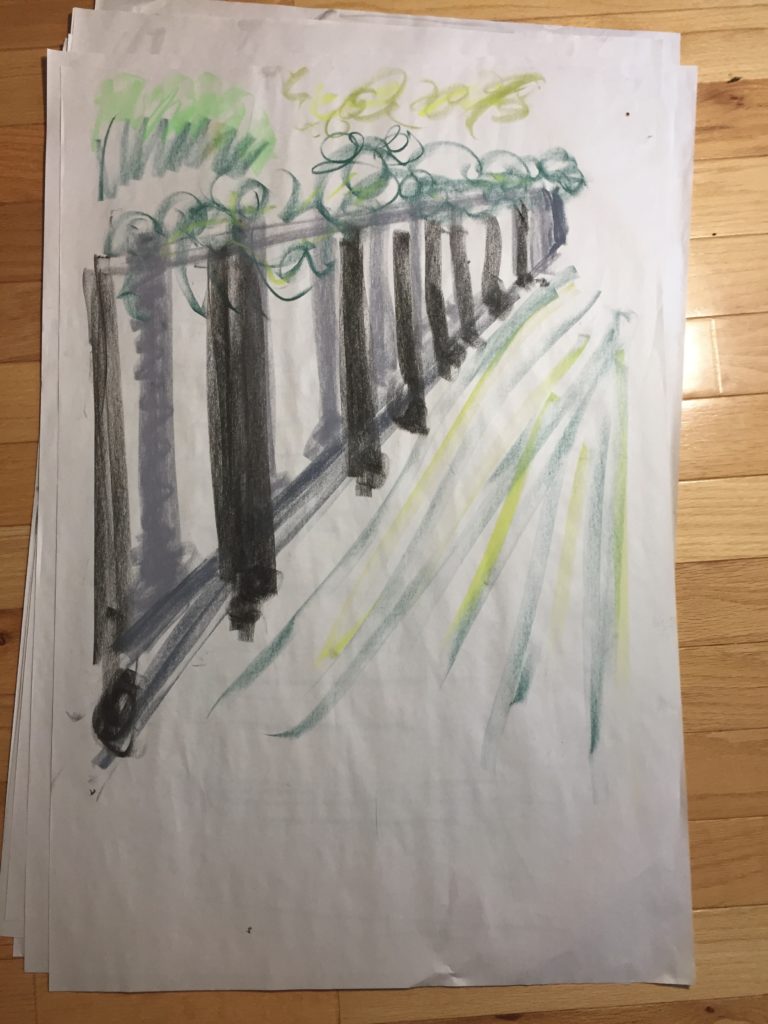
Chalk pastels – flow more easily. 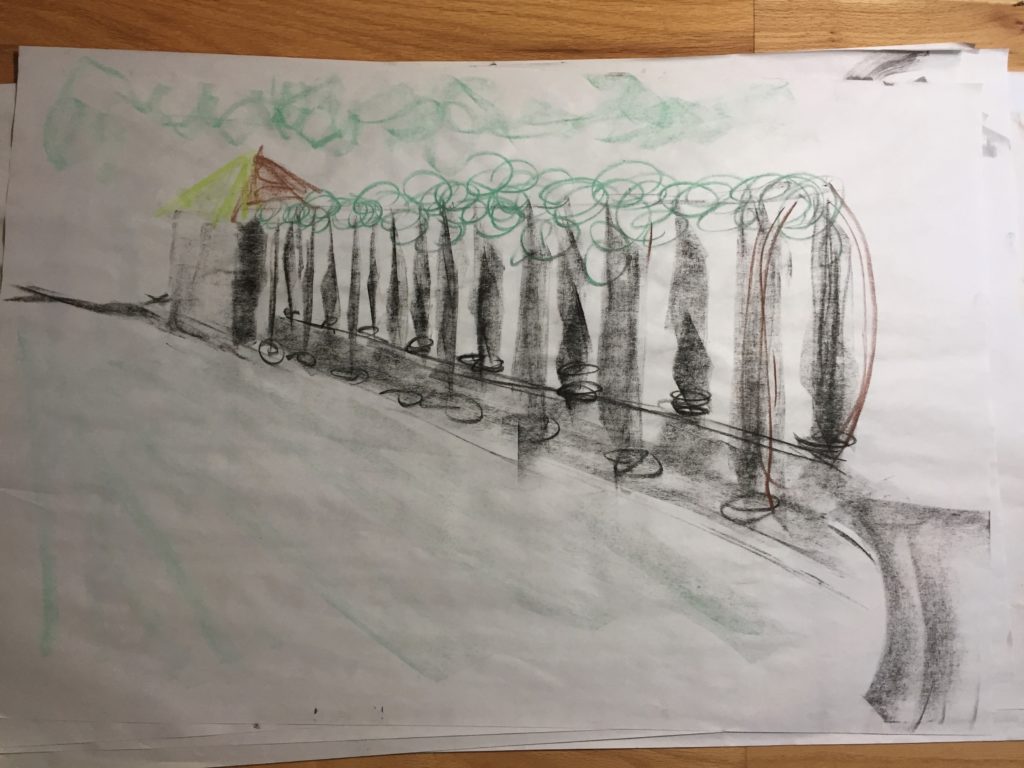
Chalk pastel 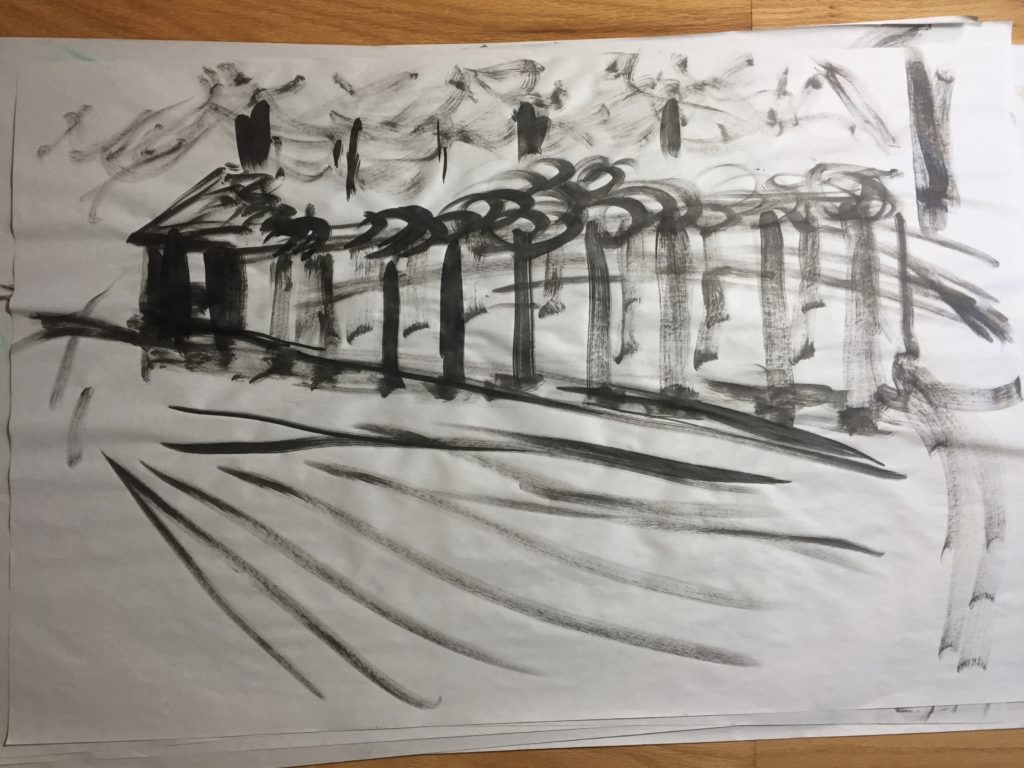
Ink 
Marker 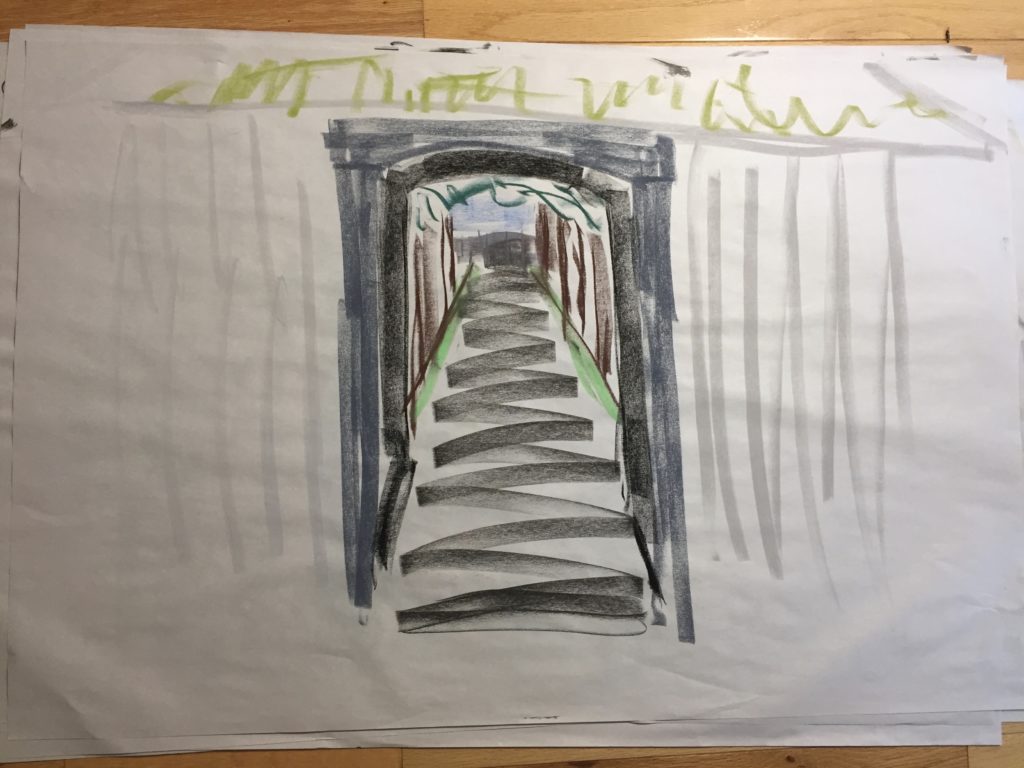
Chalk pastel 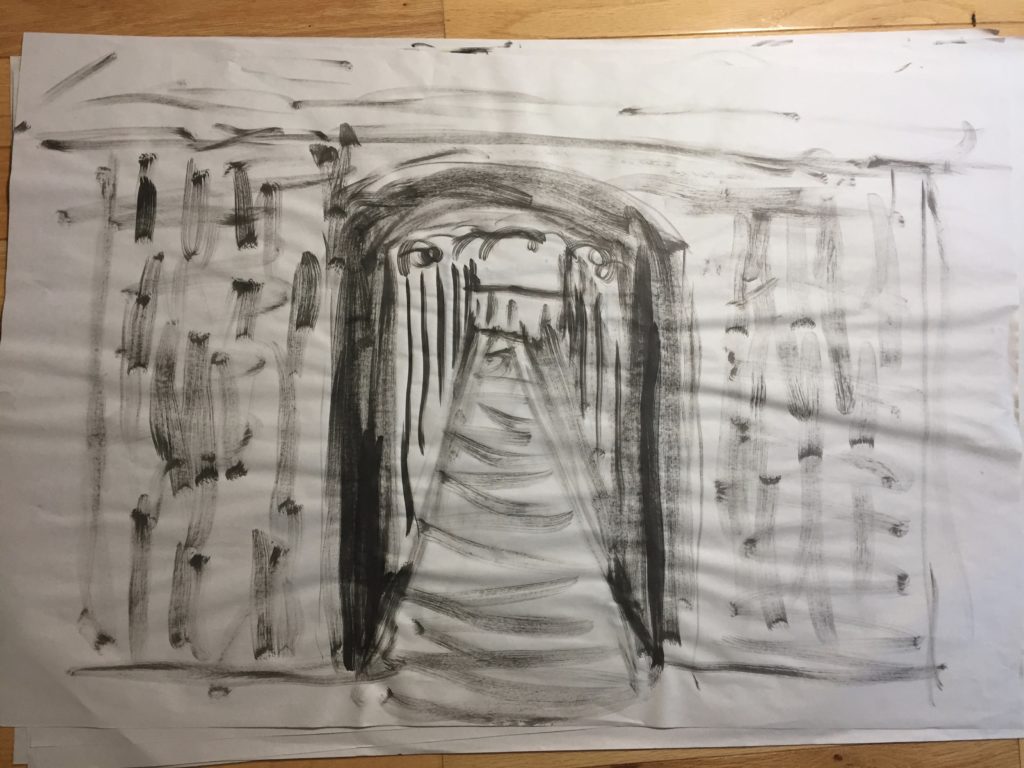
Ink 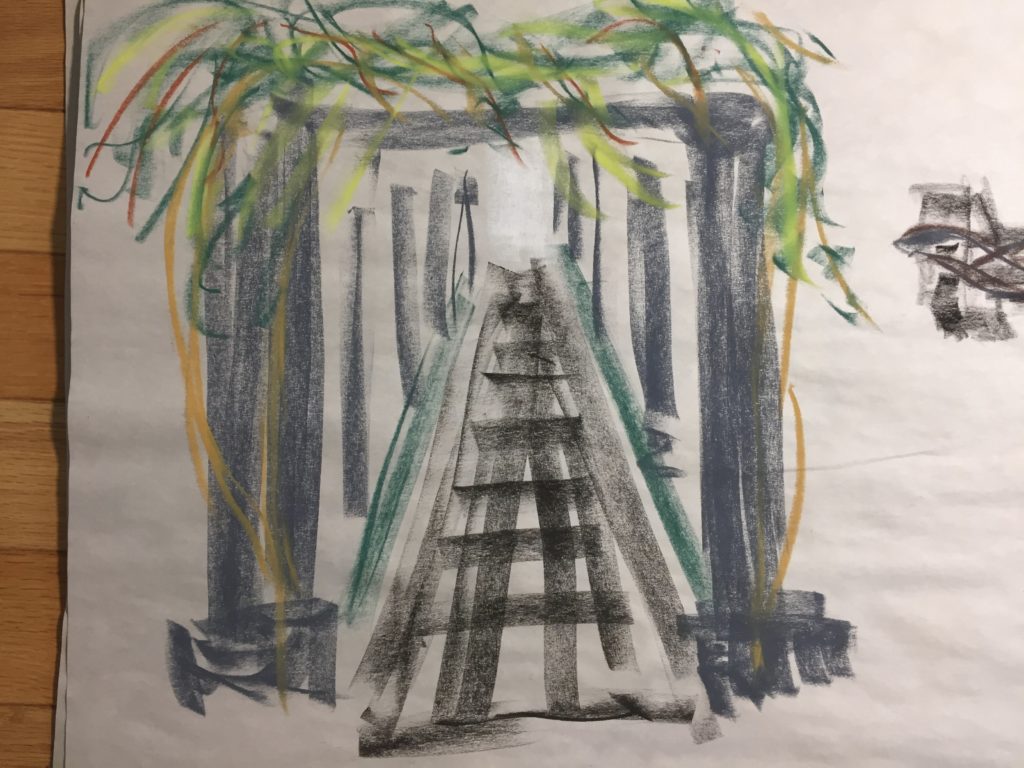
Chalk pastel 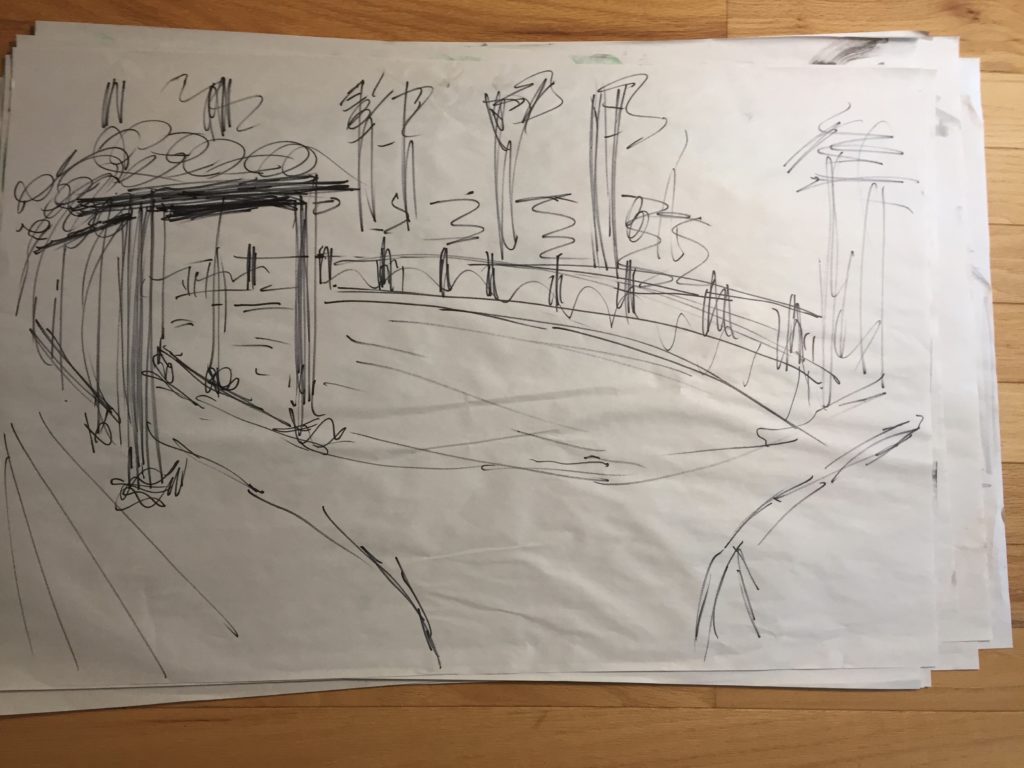
Marker. This is my favourite view. 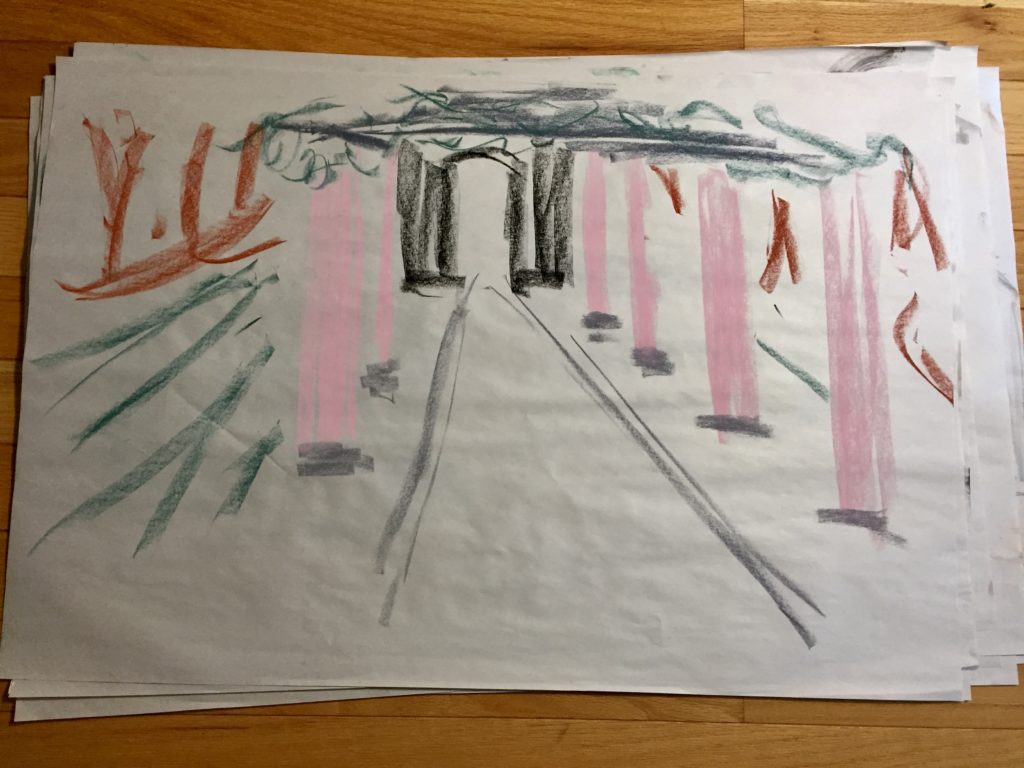
Chalk pastel 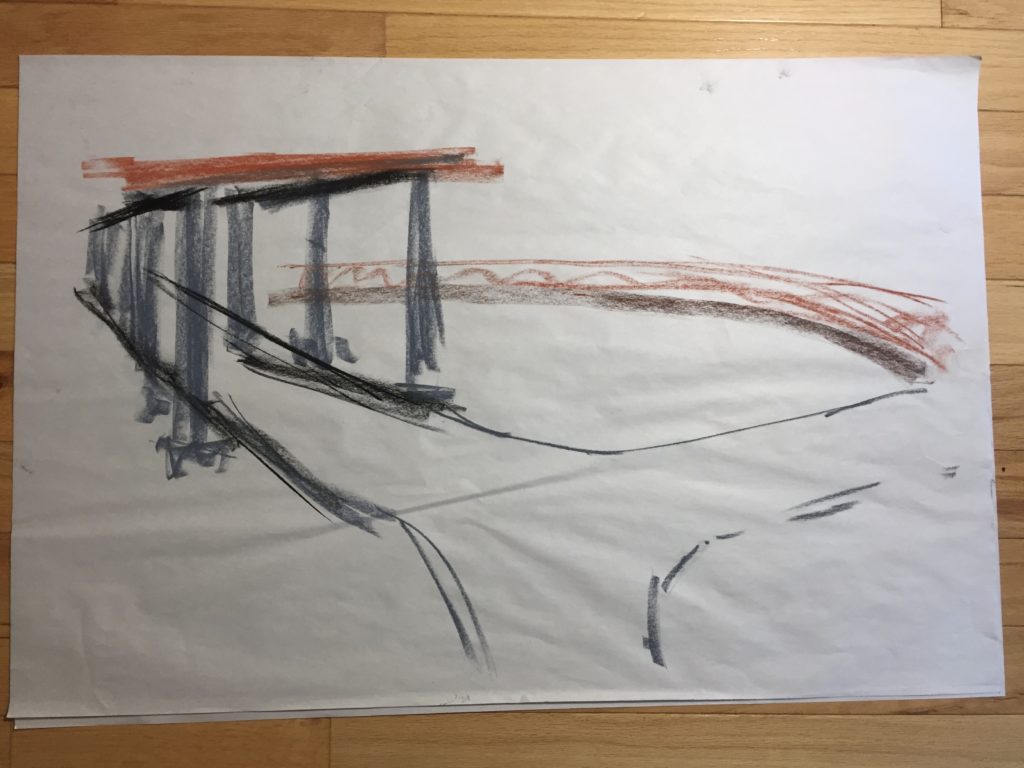
Chalk pastel. Again, my favoured view. 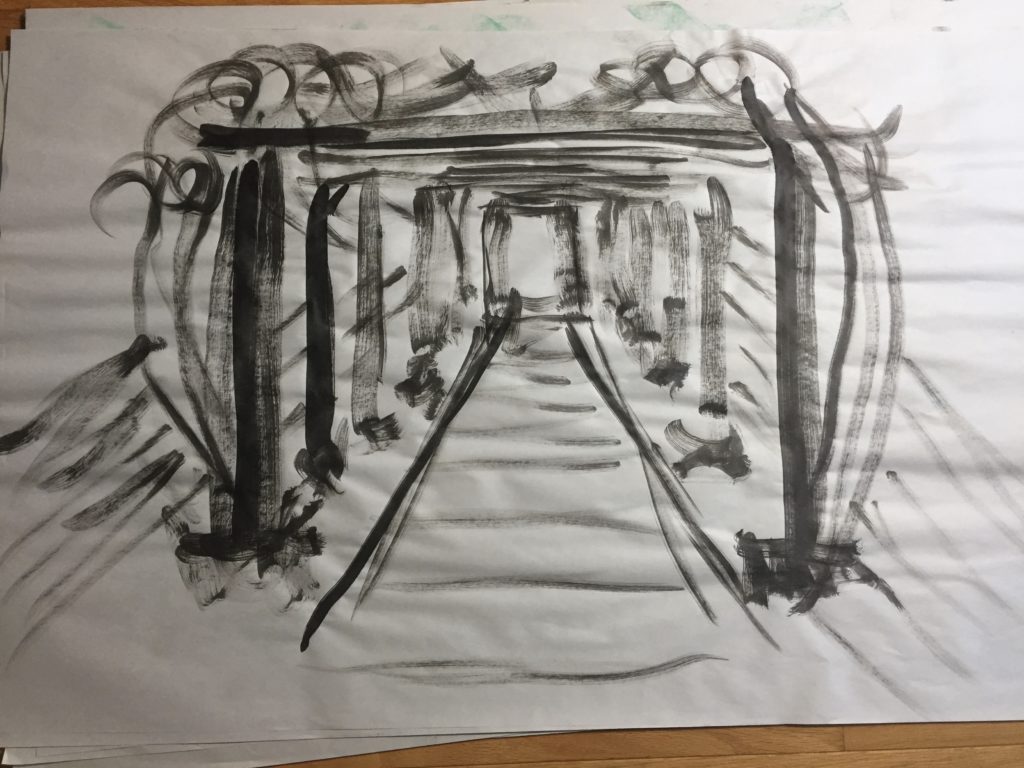
Ink
10 SKETCHES
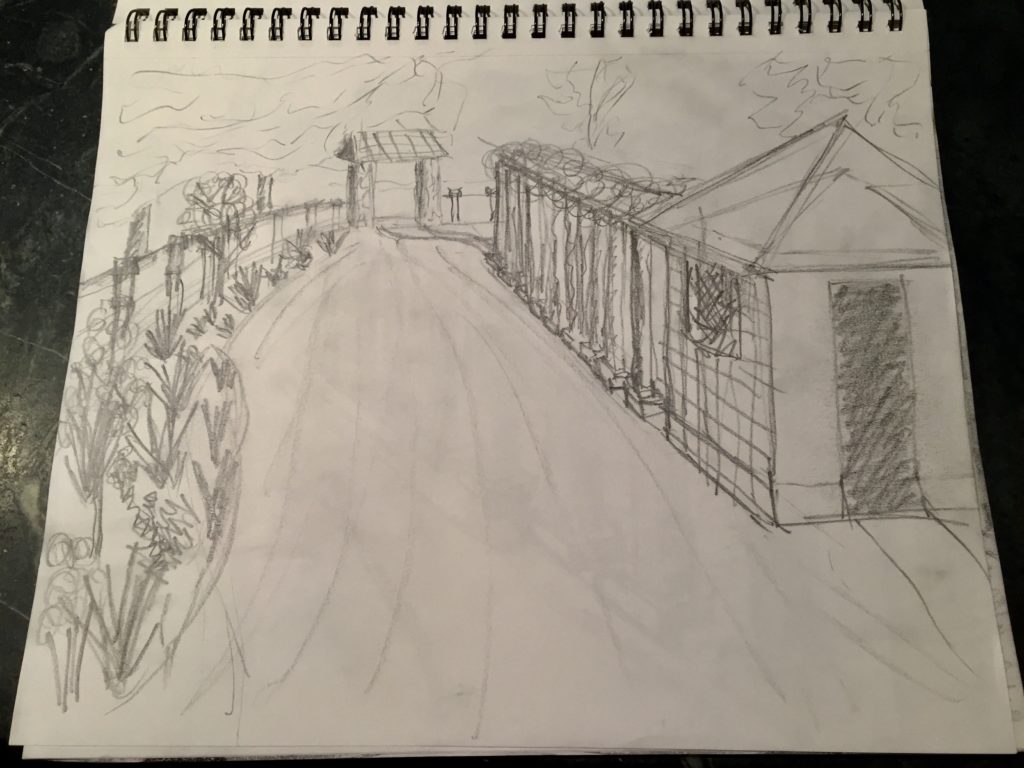
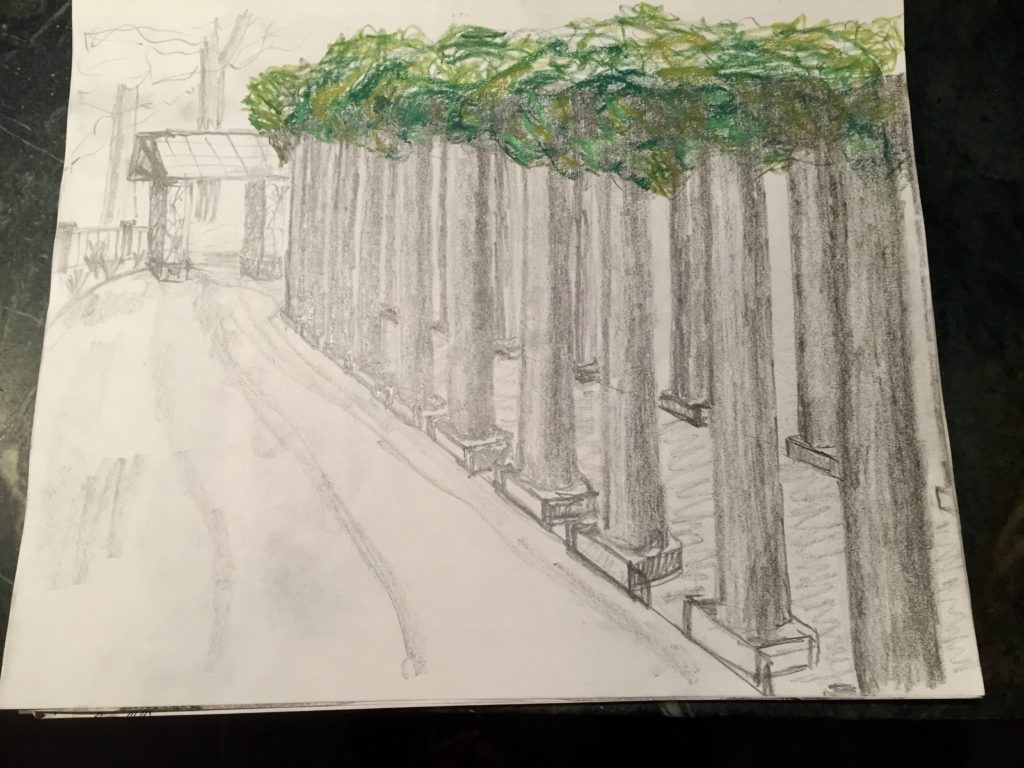
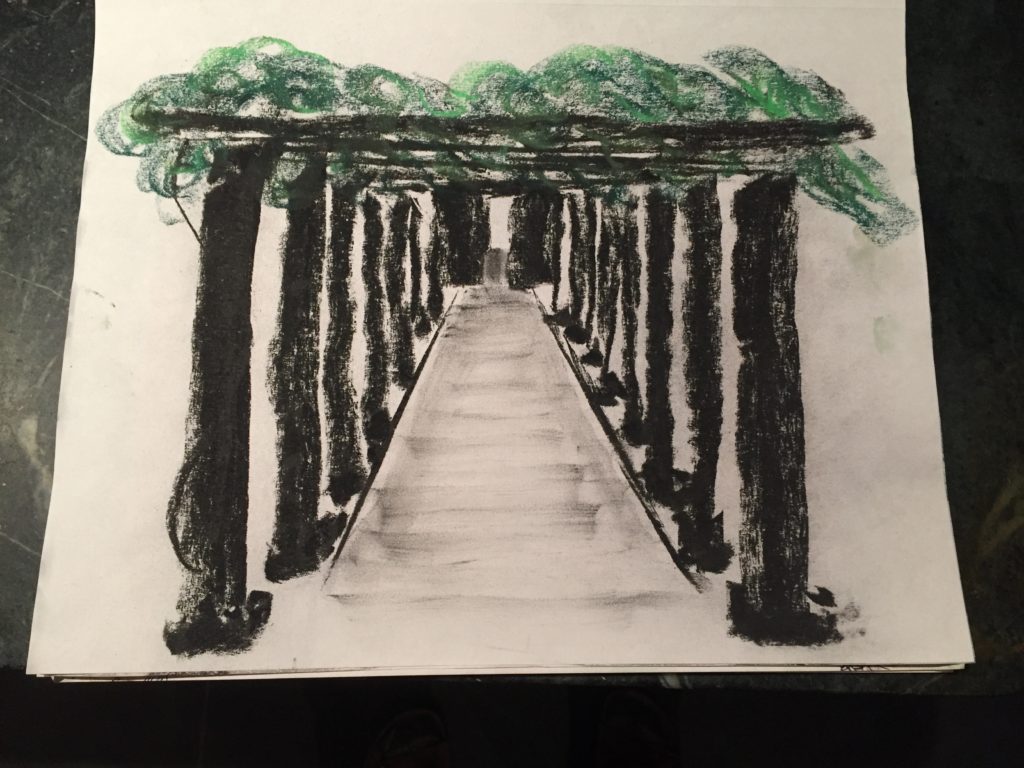
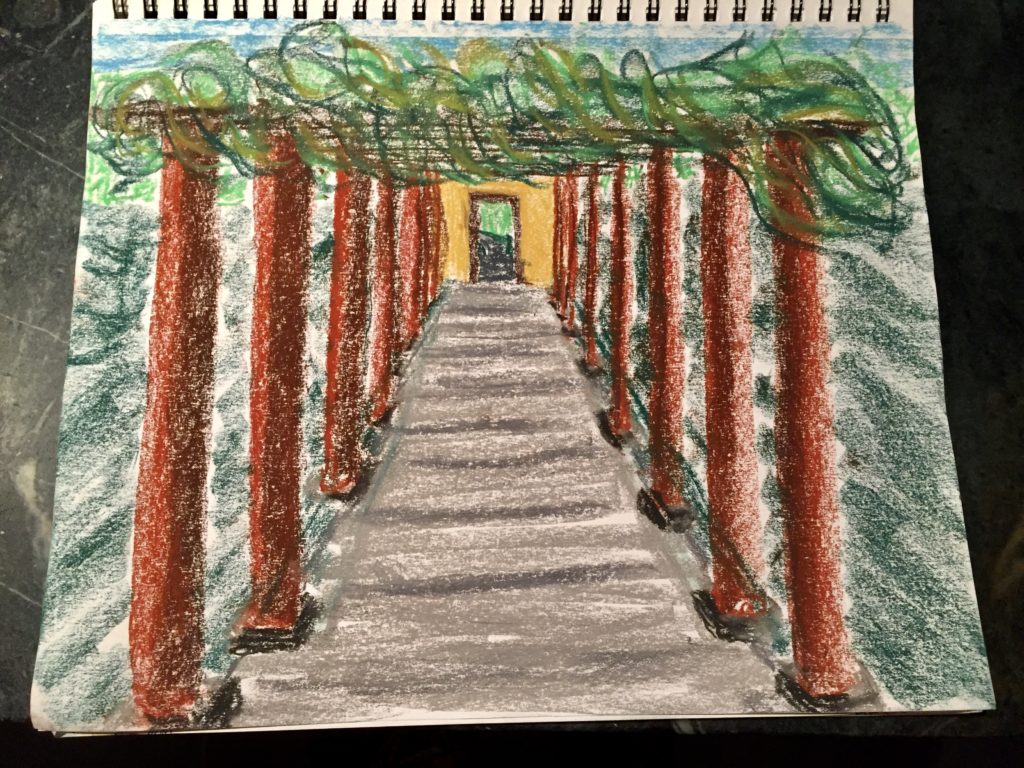

Above is more the look I think I am aiming towards. The location lends itself to classical lines and style, so the refinement of both the marker and the pastel pencils suit this well.
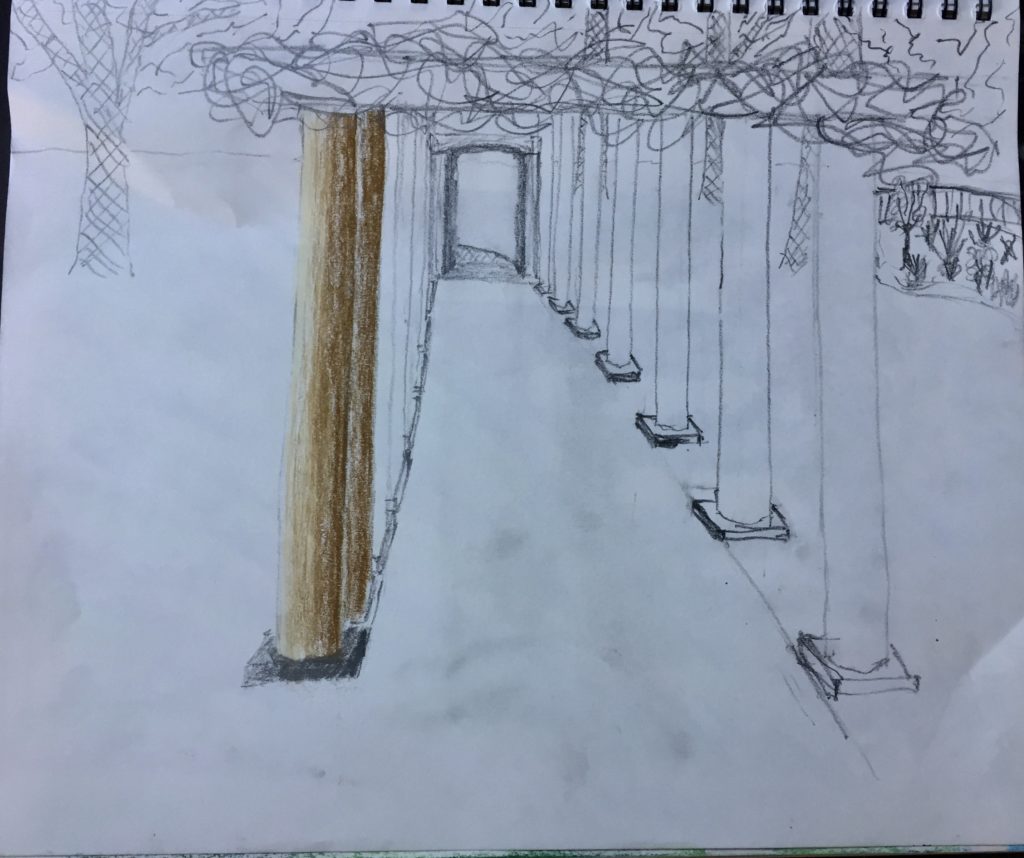
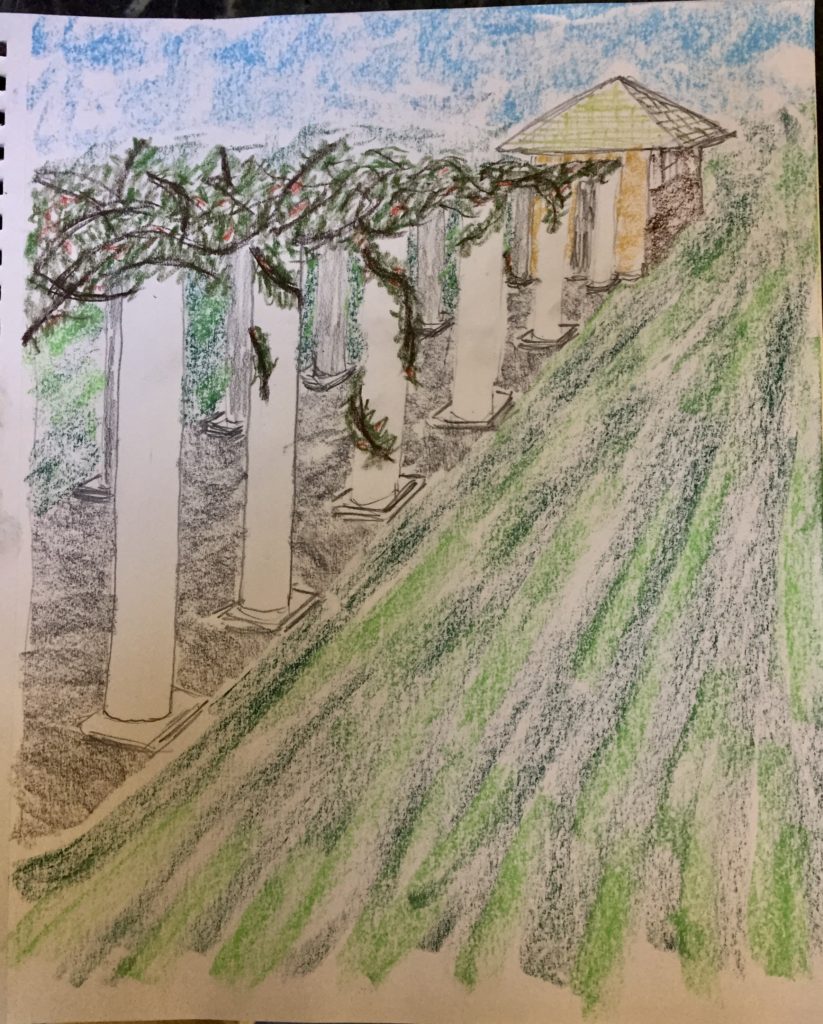
PROCESS WORK & PLANS
-
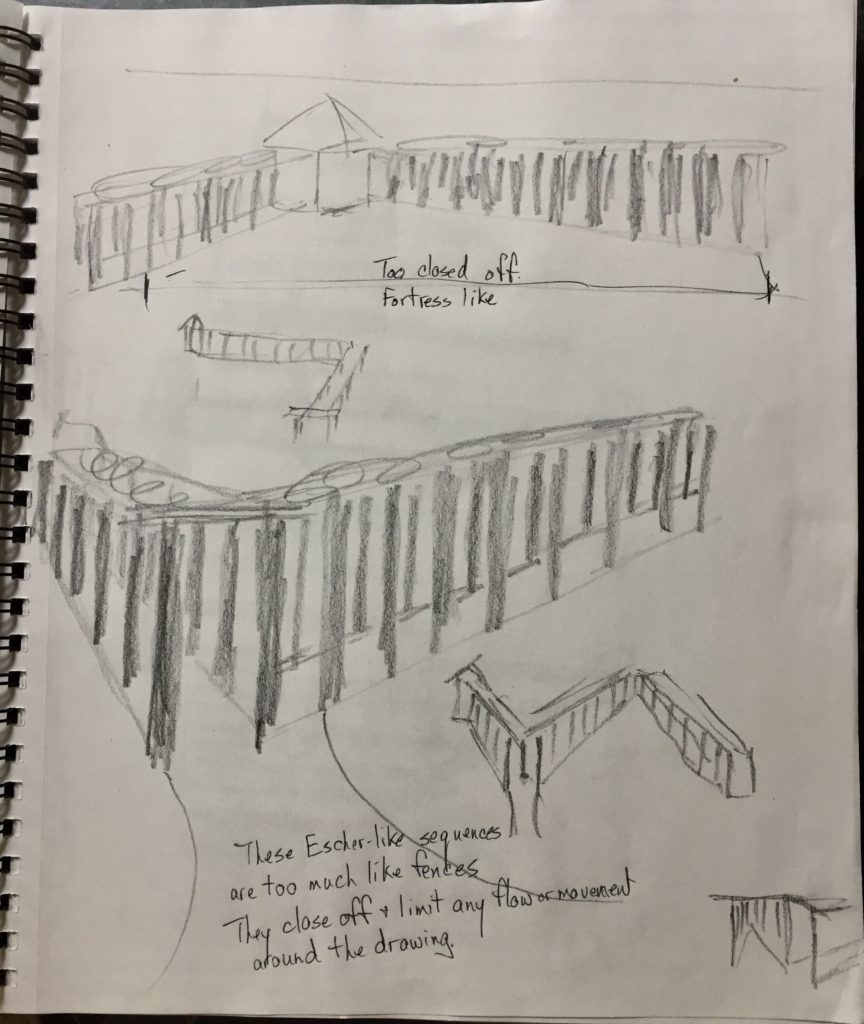
-
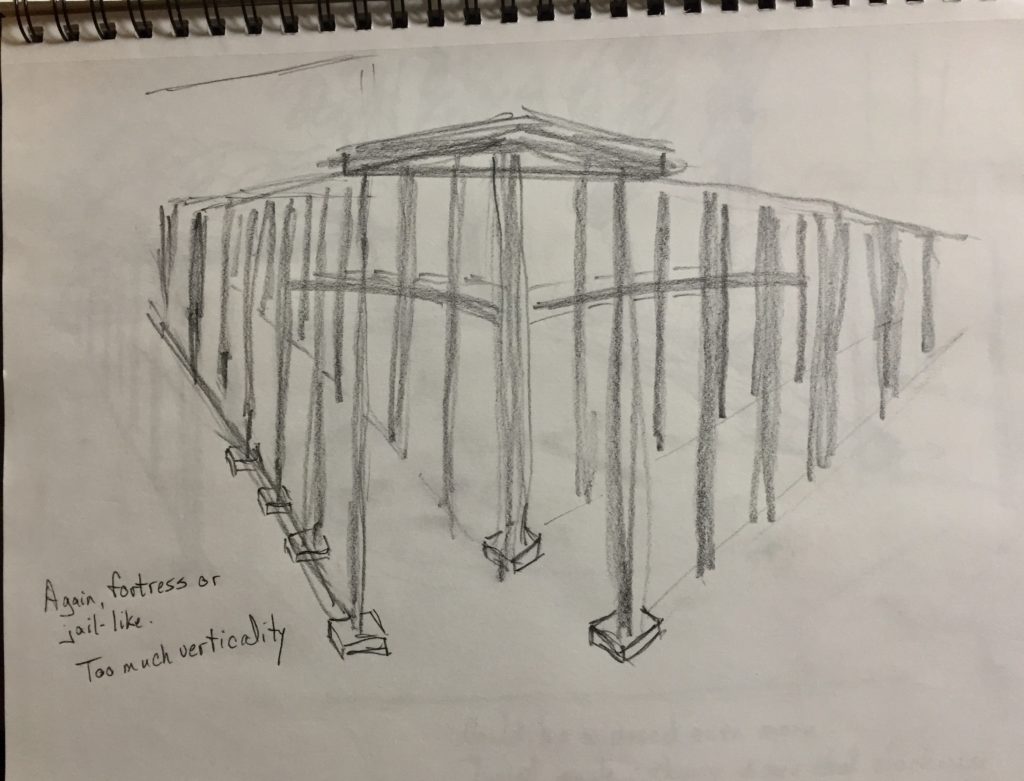
-
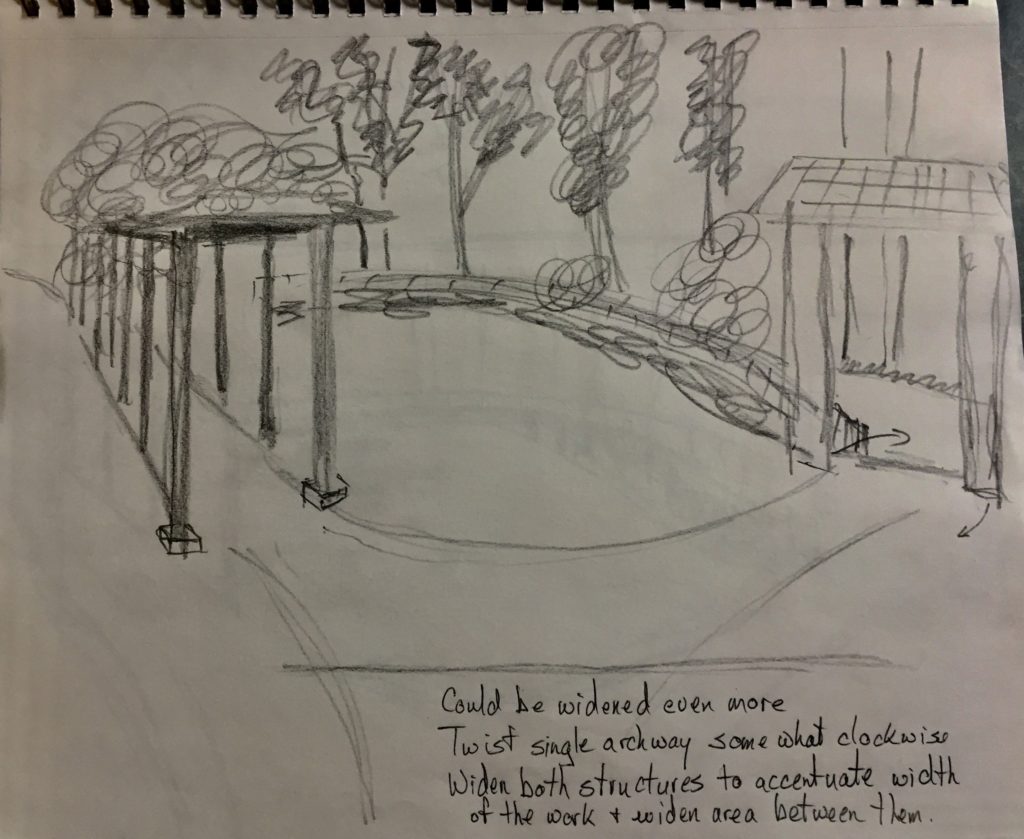
-
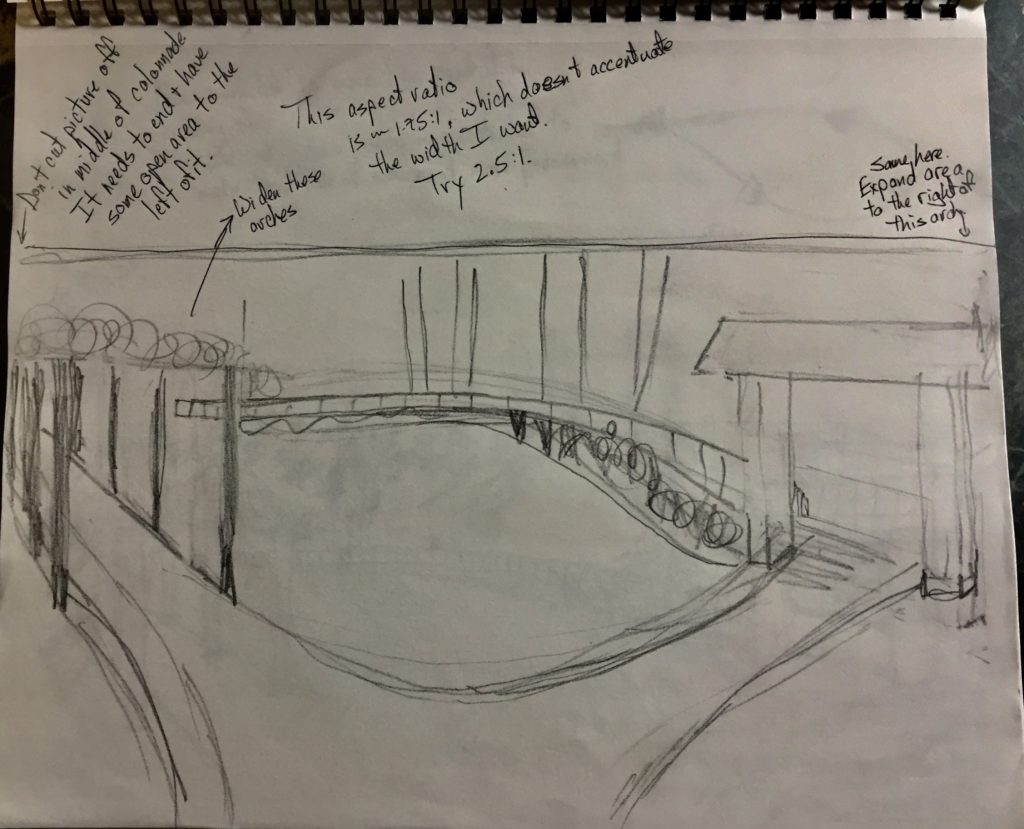
-

-
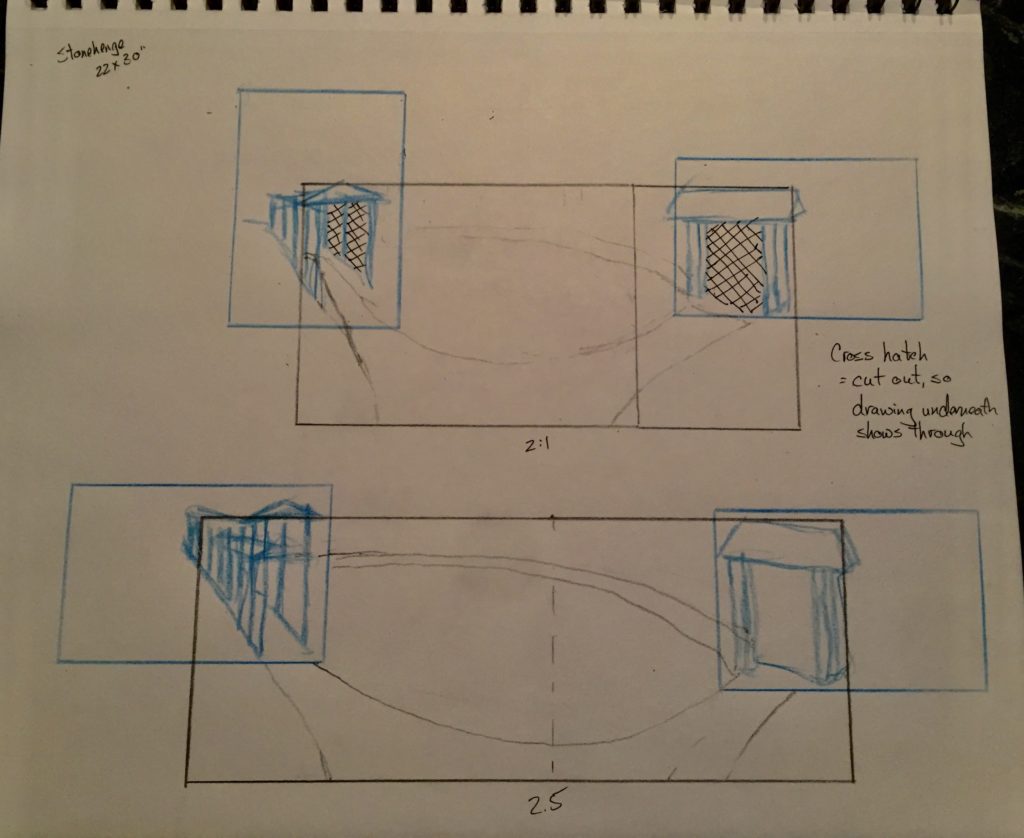
This is the rough plan I will use and how I will incorporate the two architectural drawings into the larger landscape. -
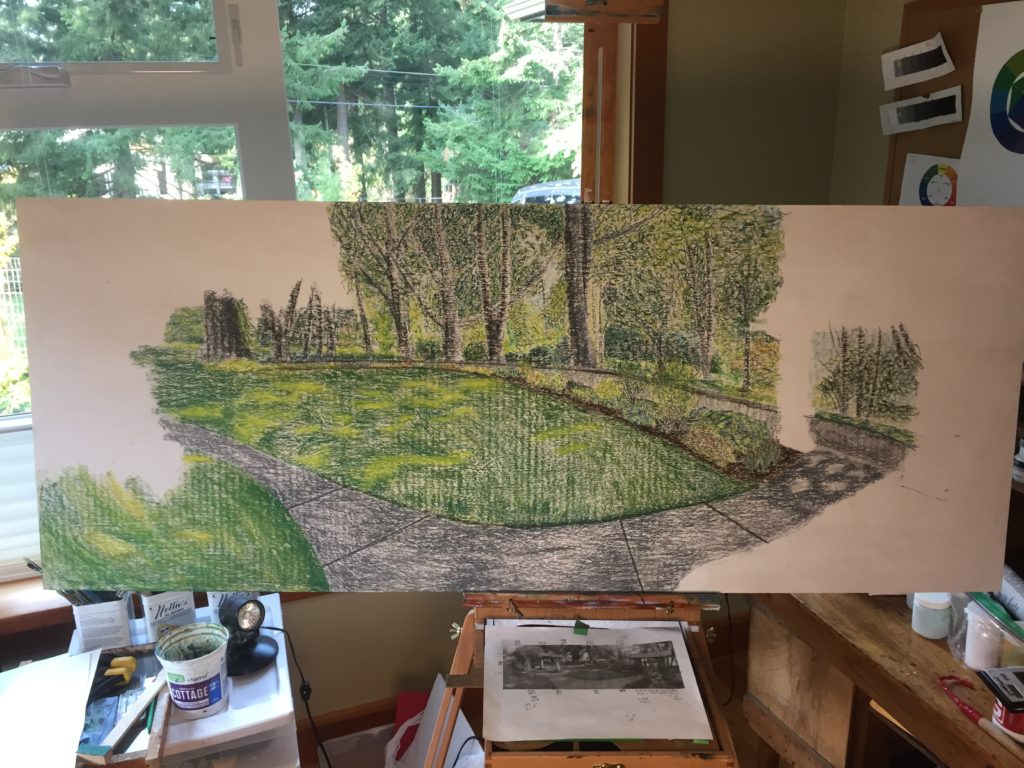
Partially done background drawing done with chalk pastel on 1/4″ baltic birch plywood covered with gesso and sanded. Size is 22″ x 55″. -
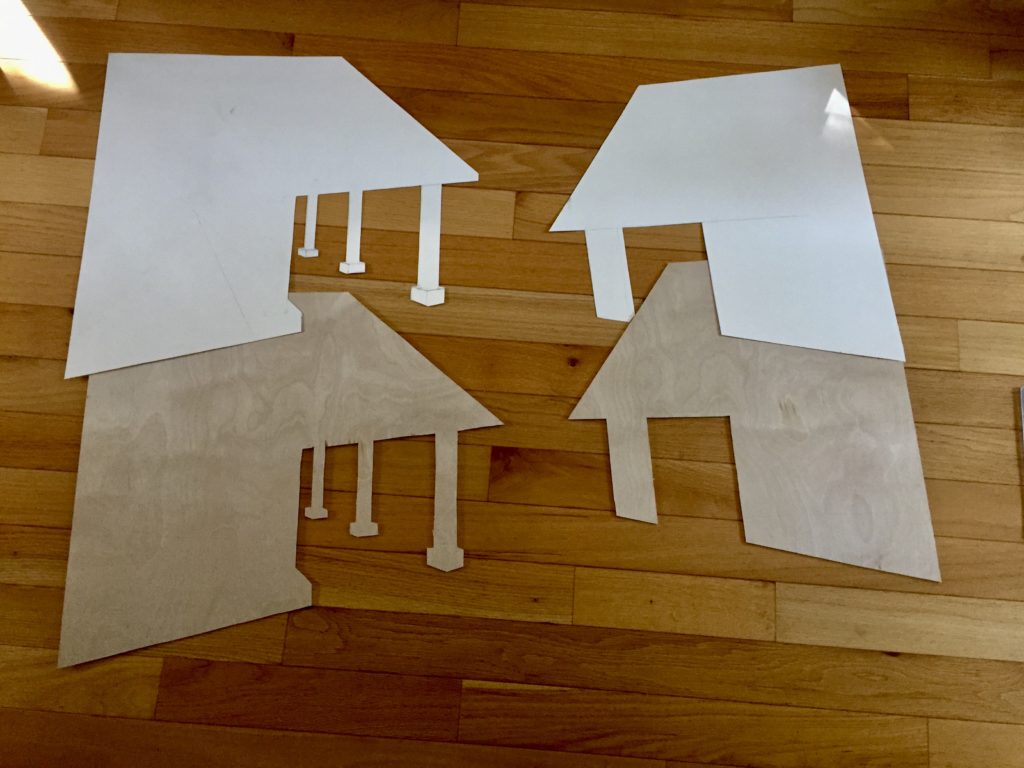
1/8″ birch plywood and Stonehenge paper cutouts for architectural drawings. Paper was glued onto plywood. -
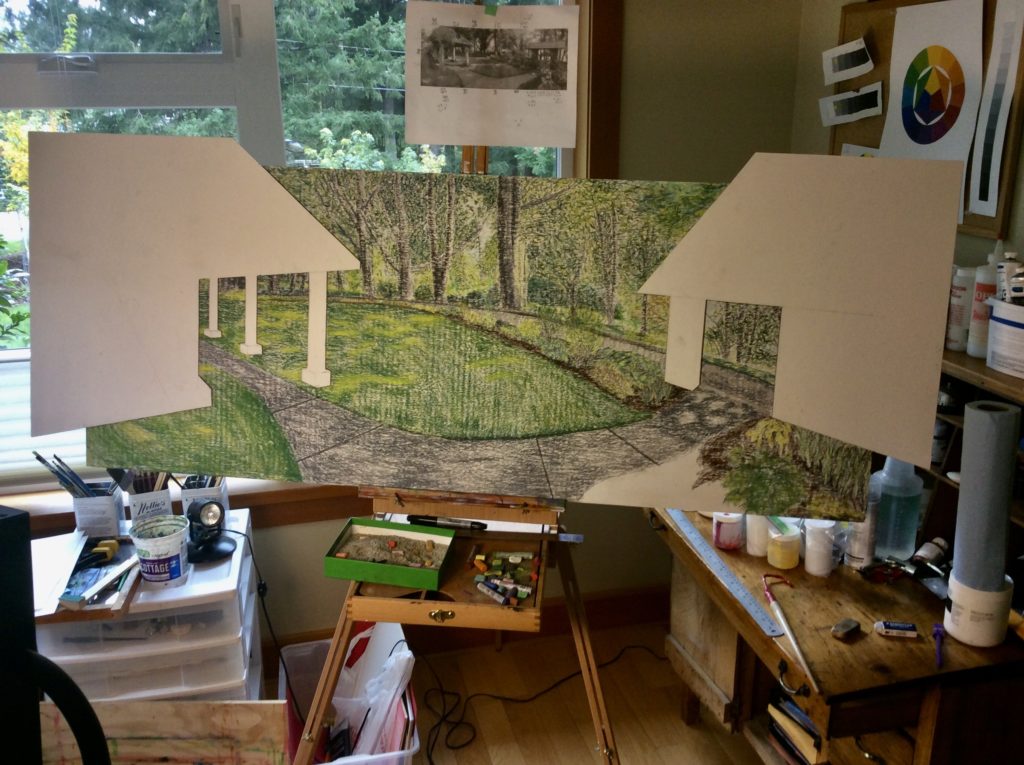
Cutouts were then glued onto background drawing. -
